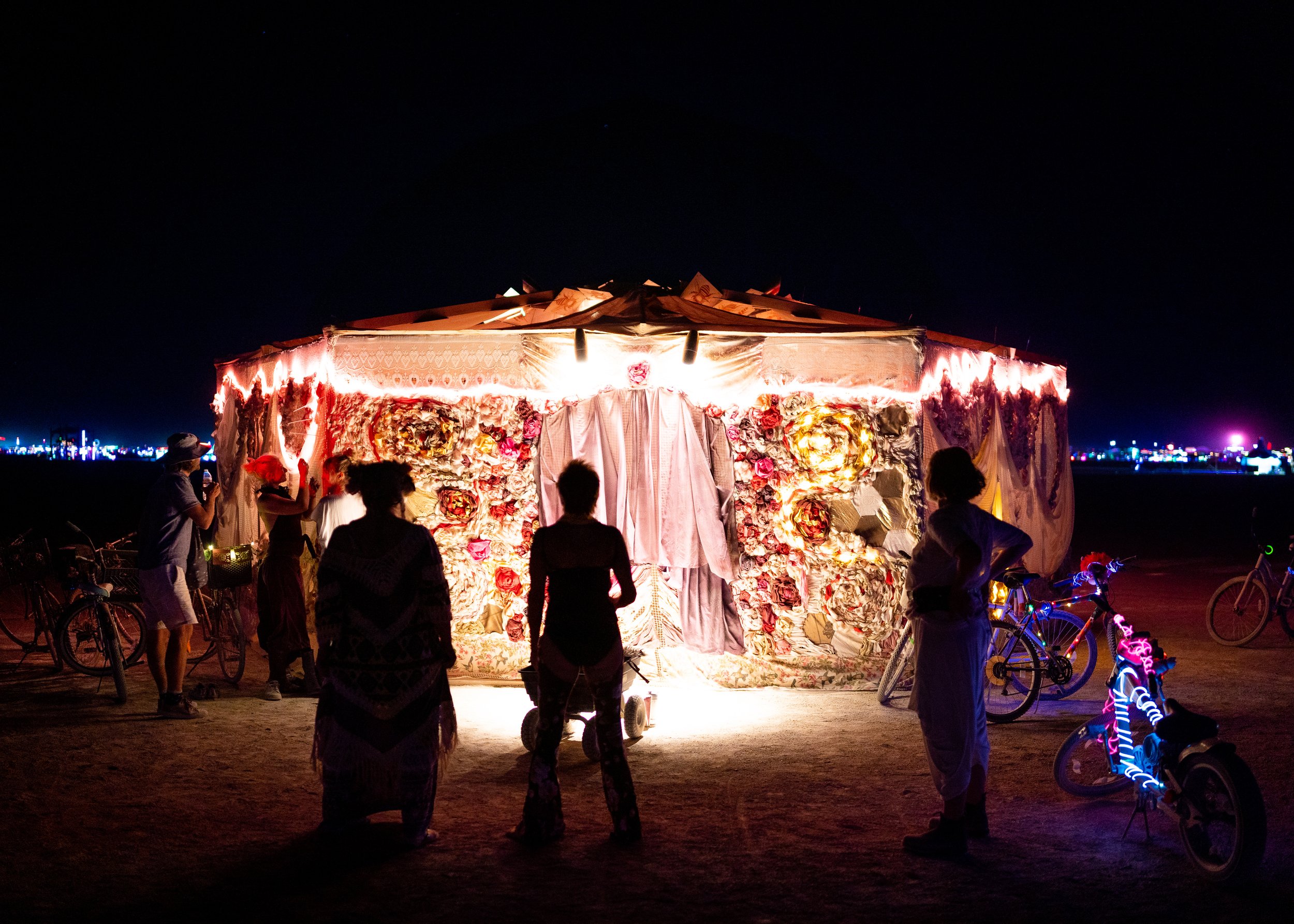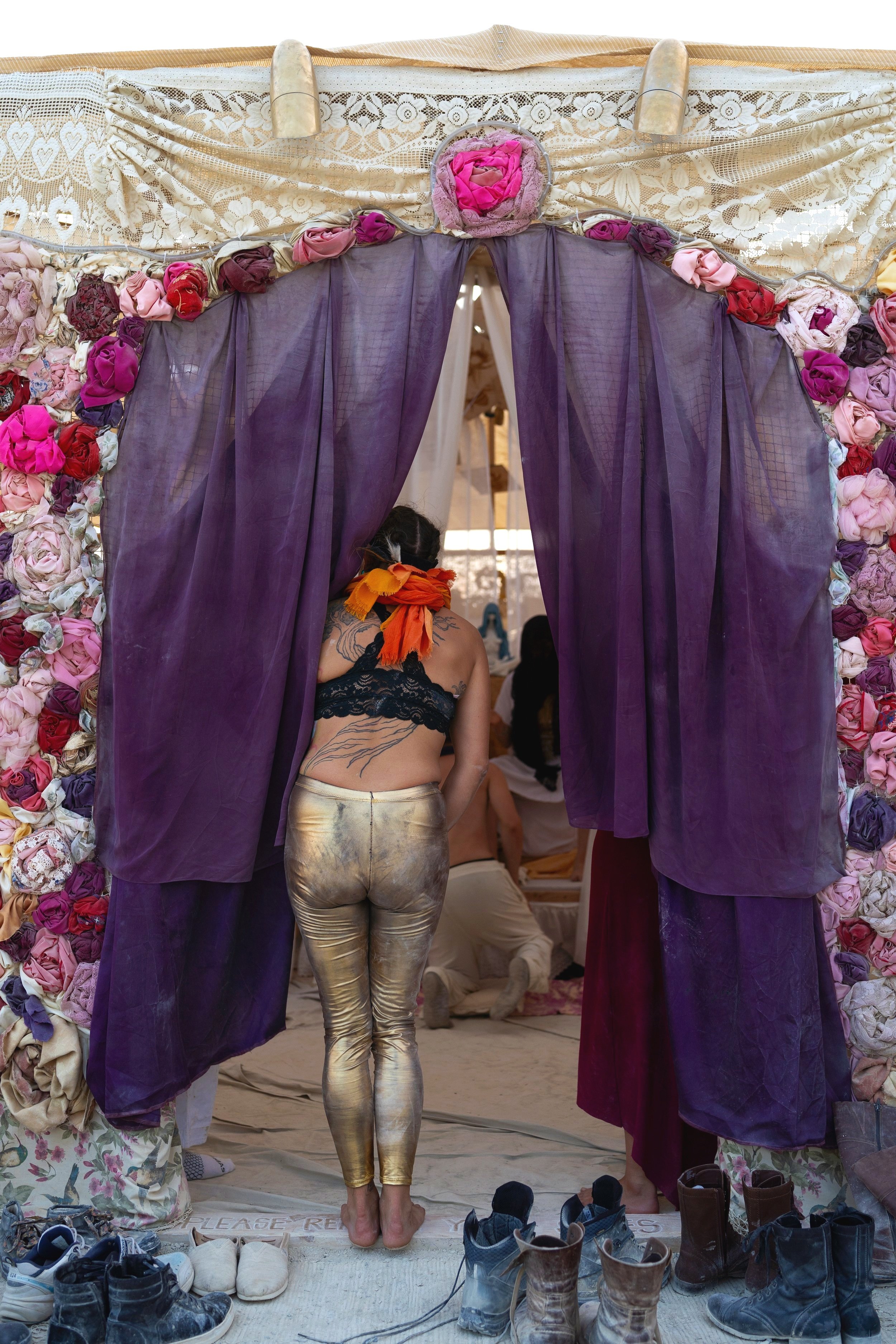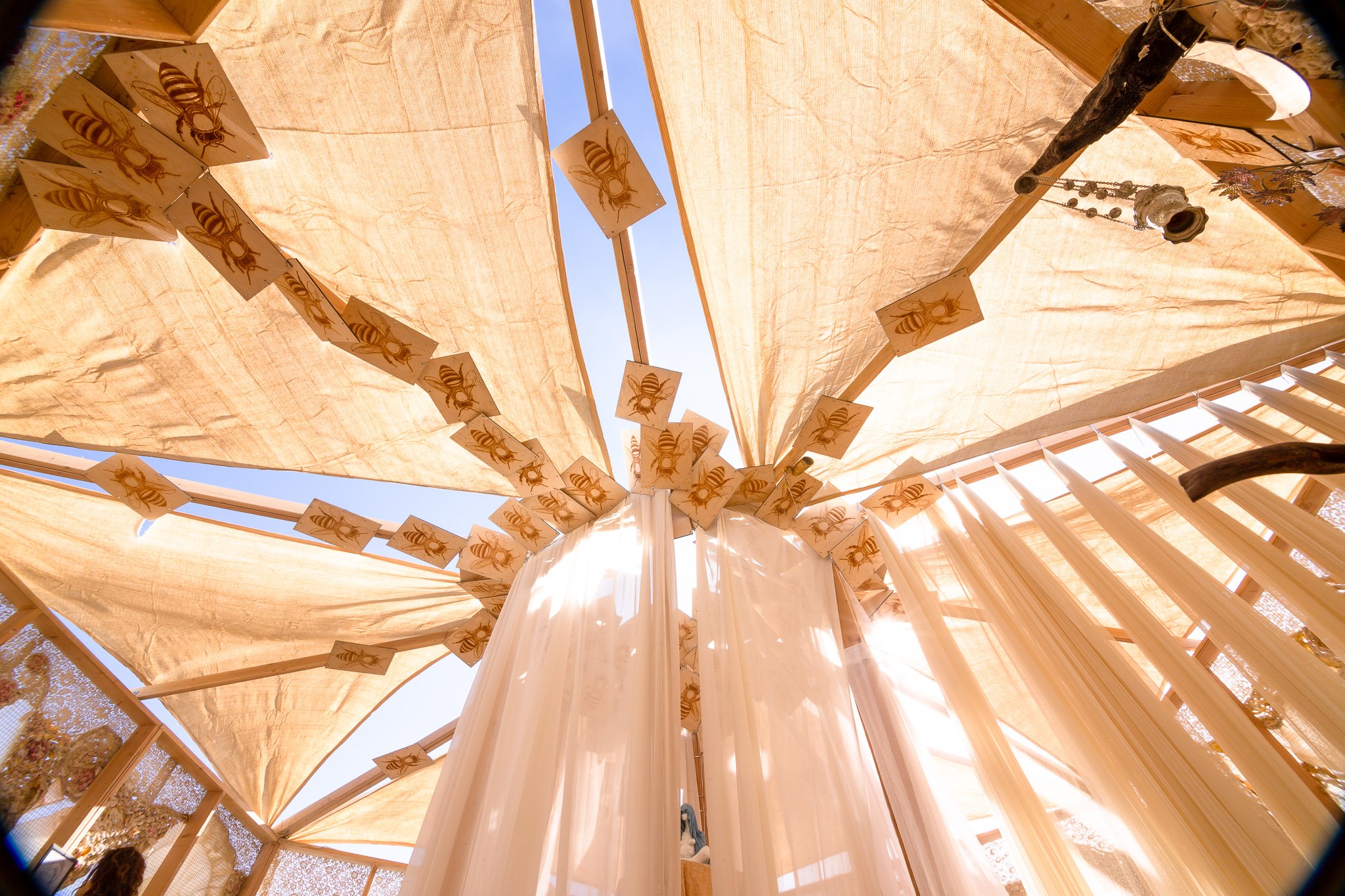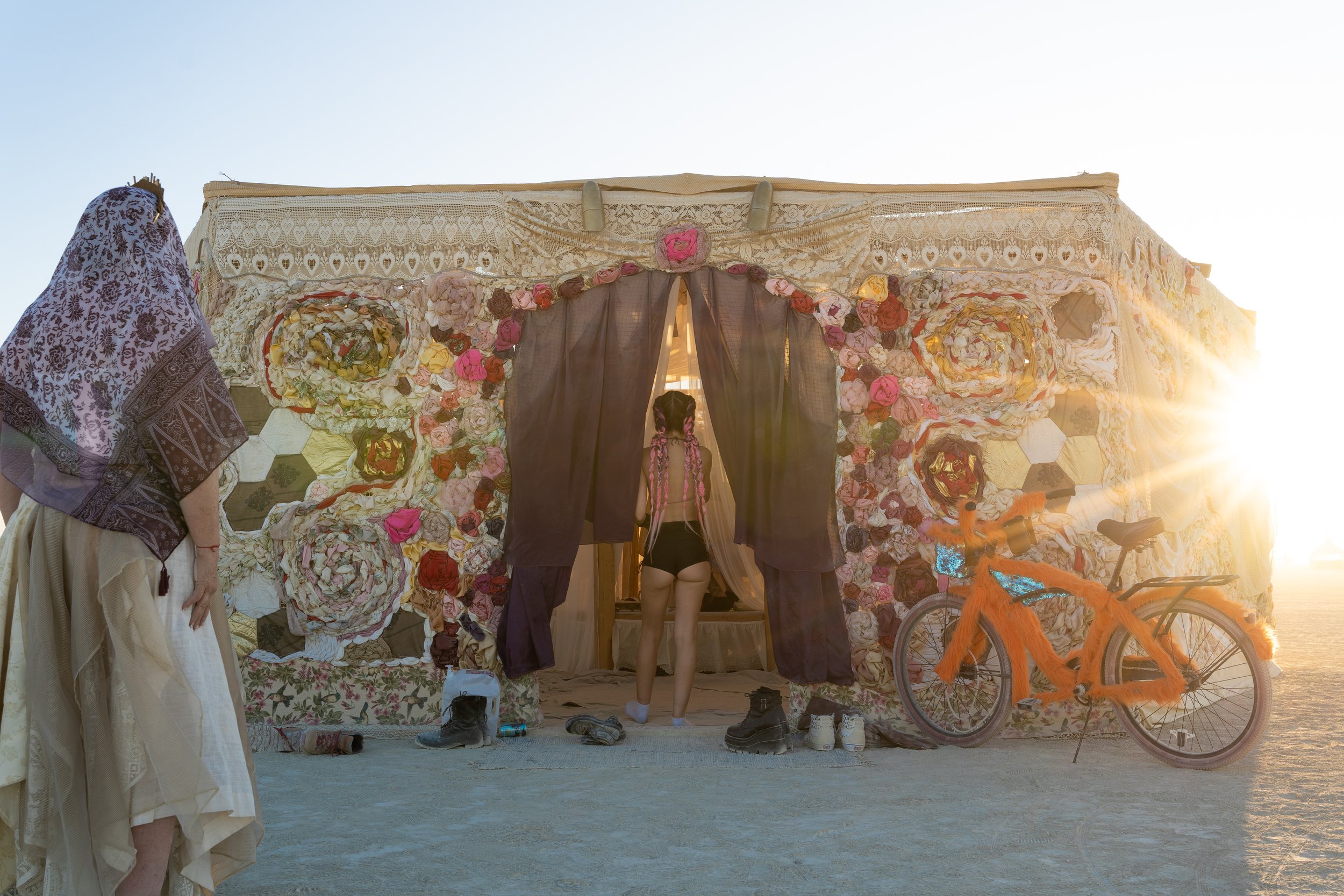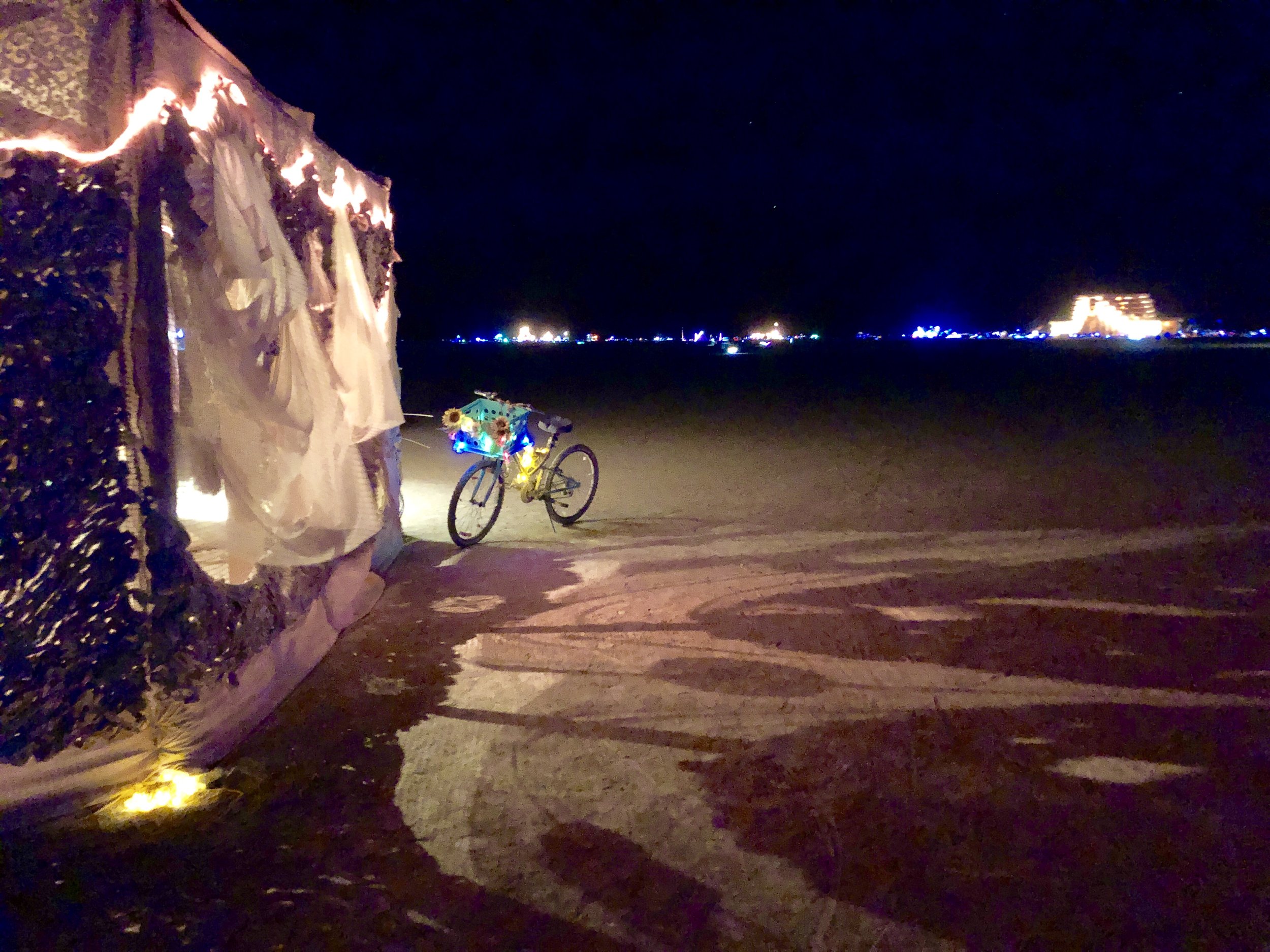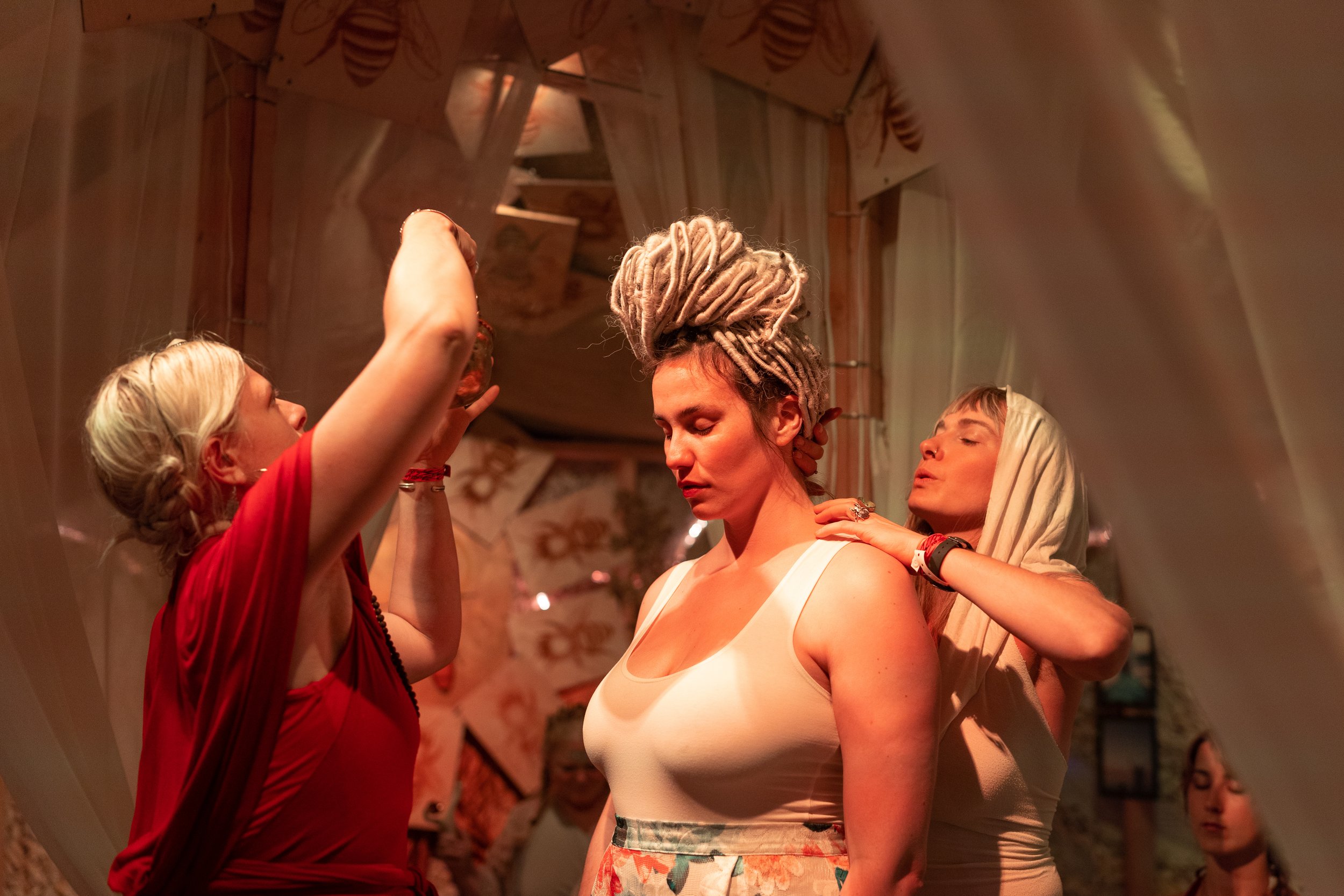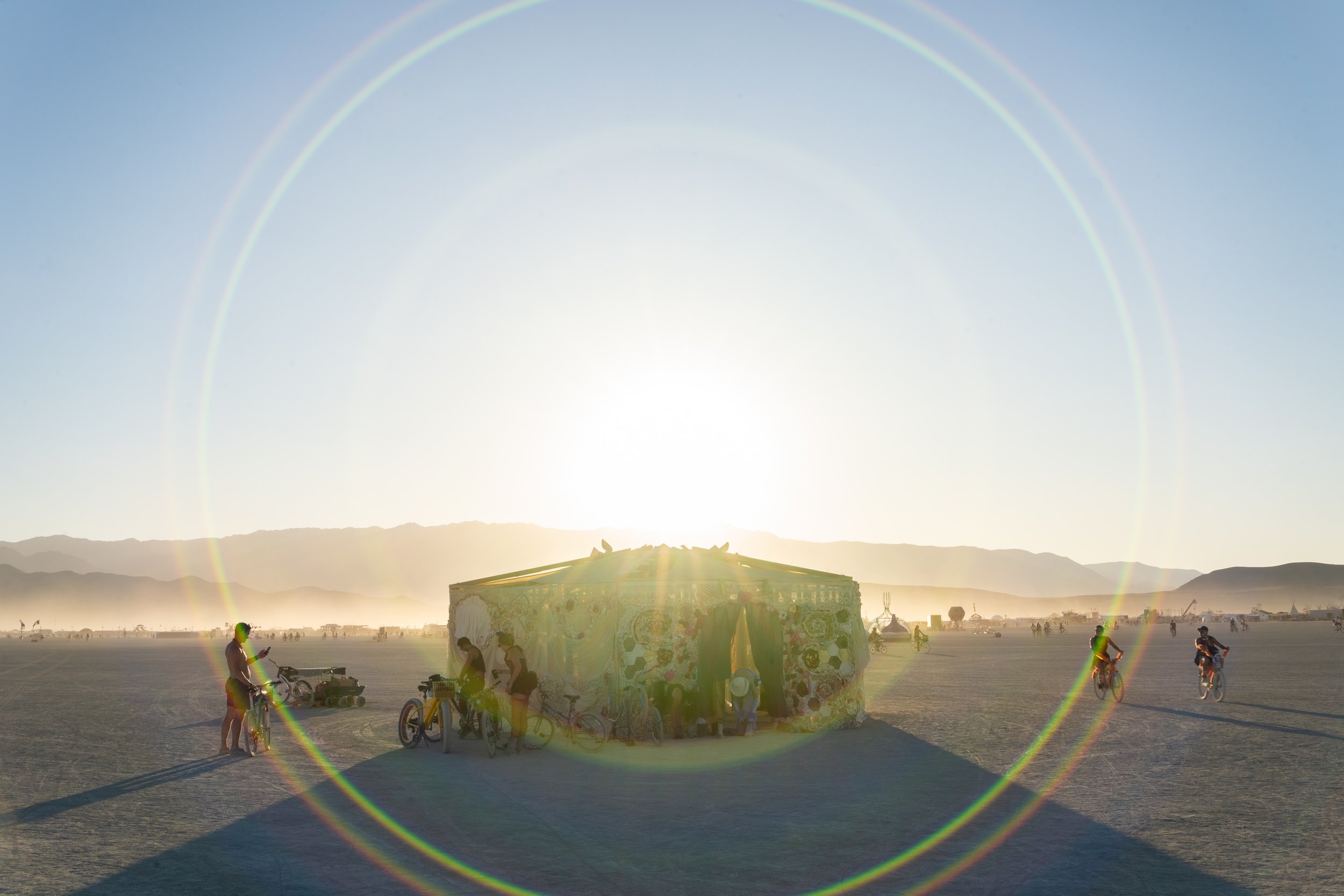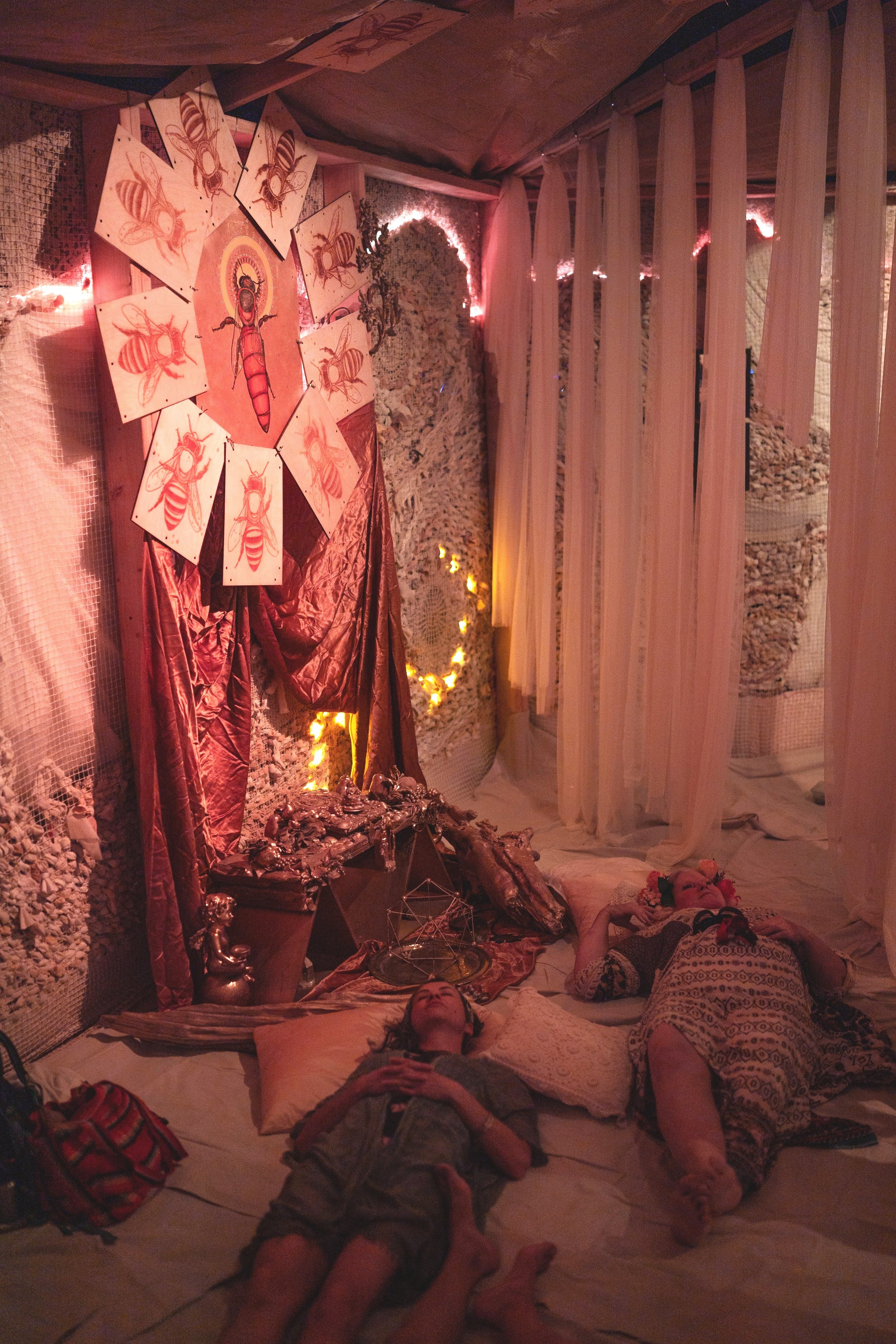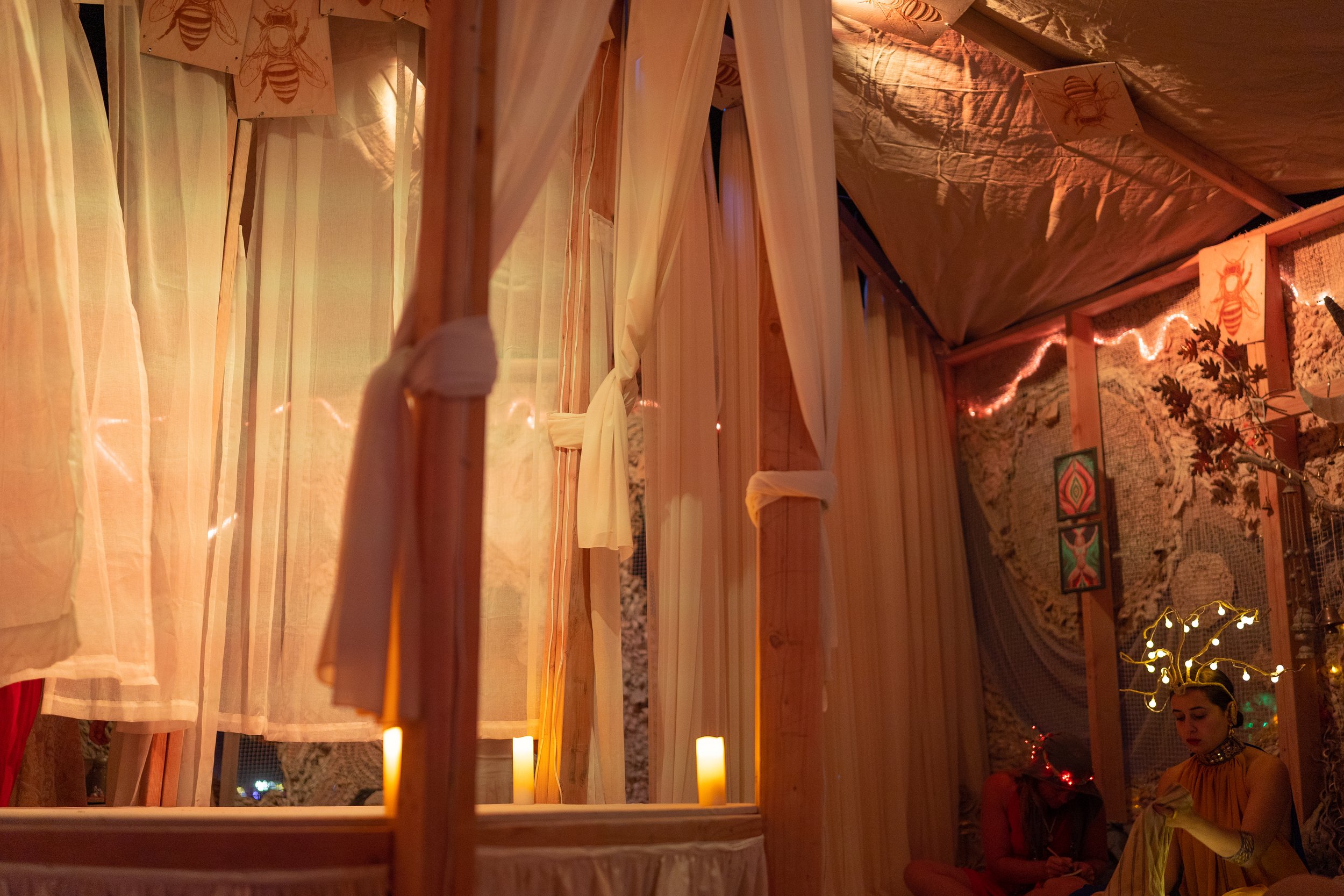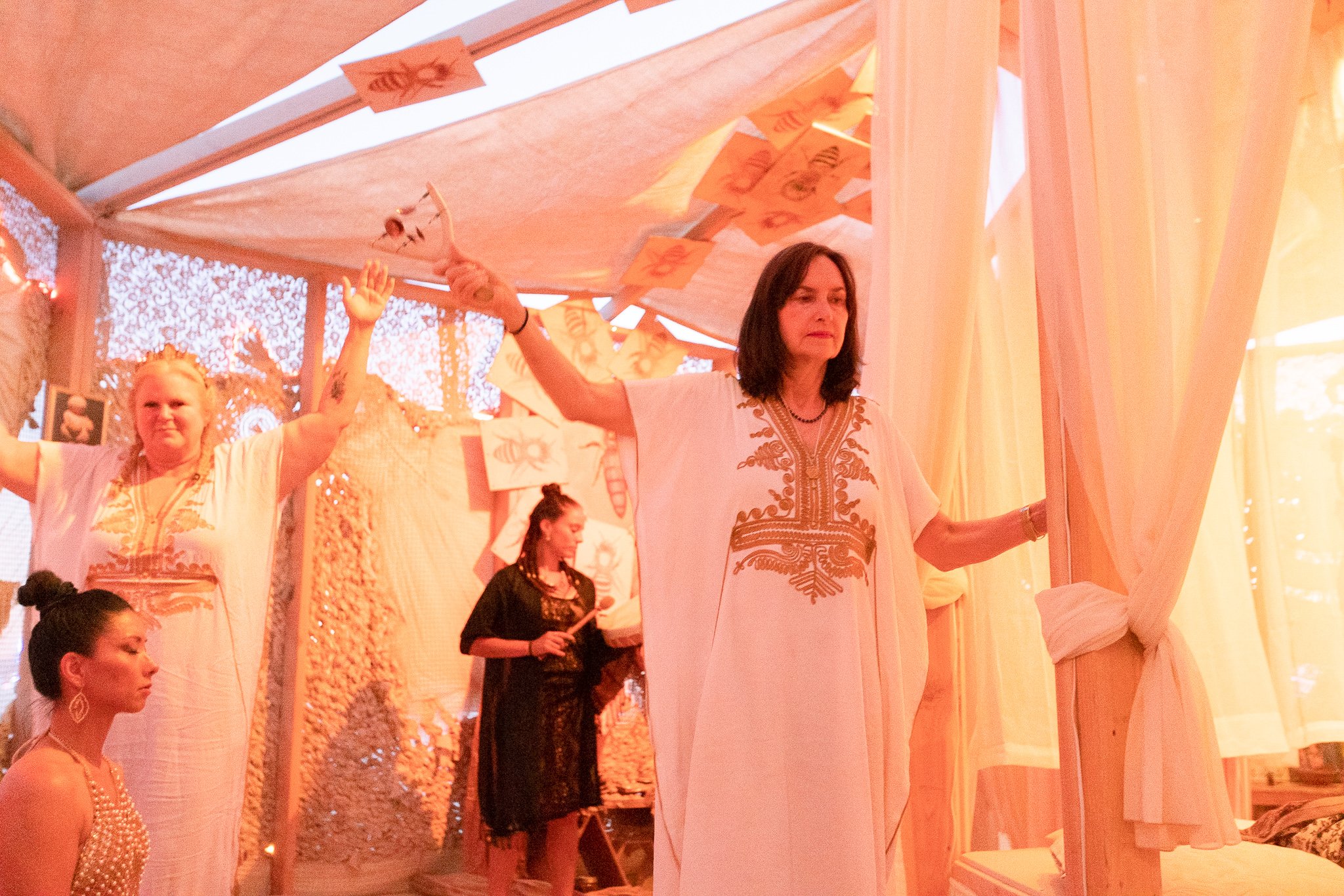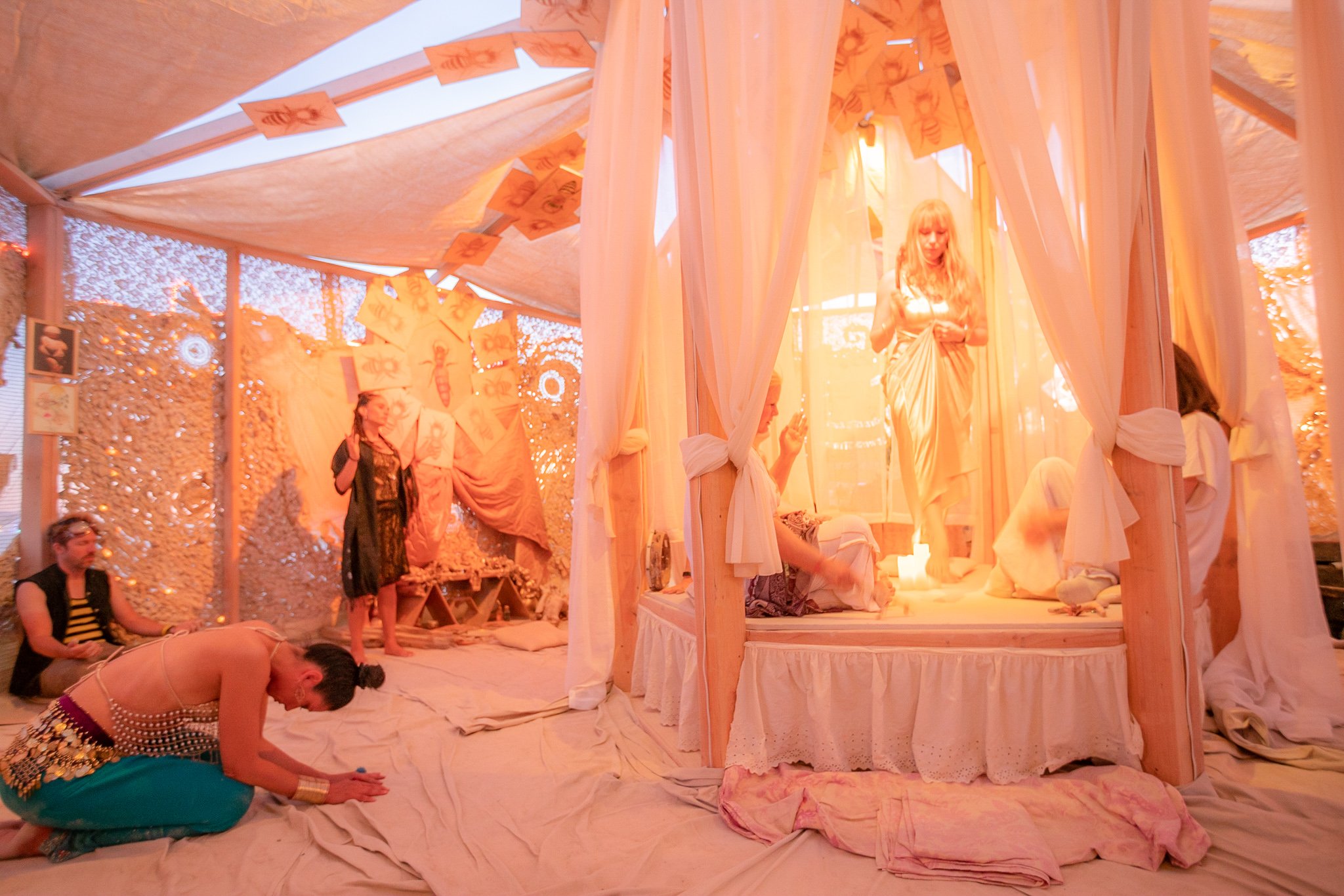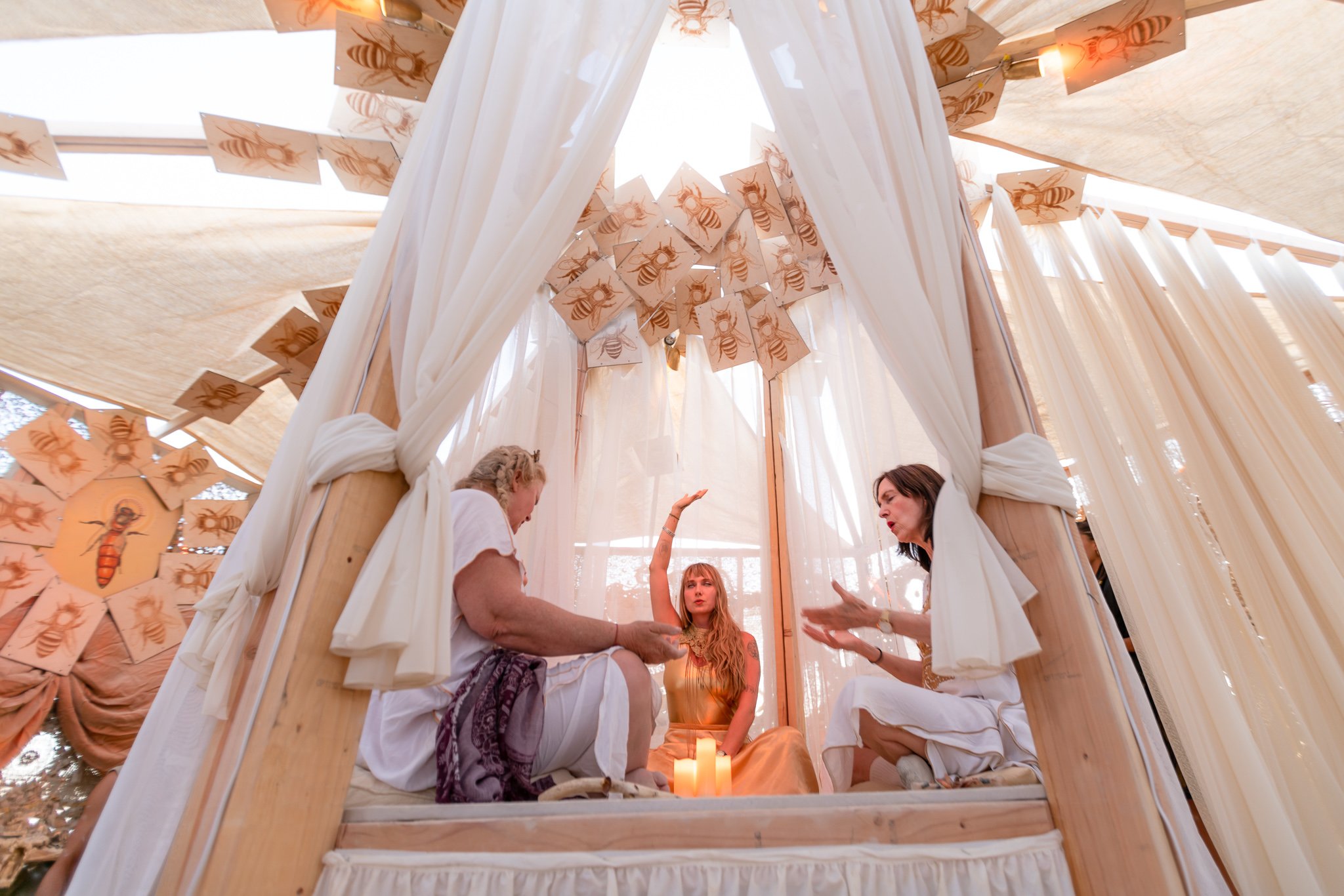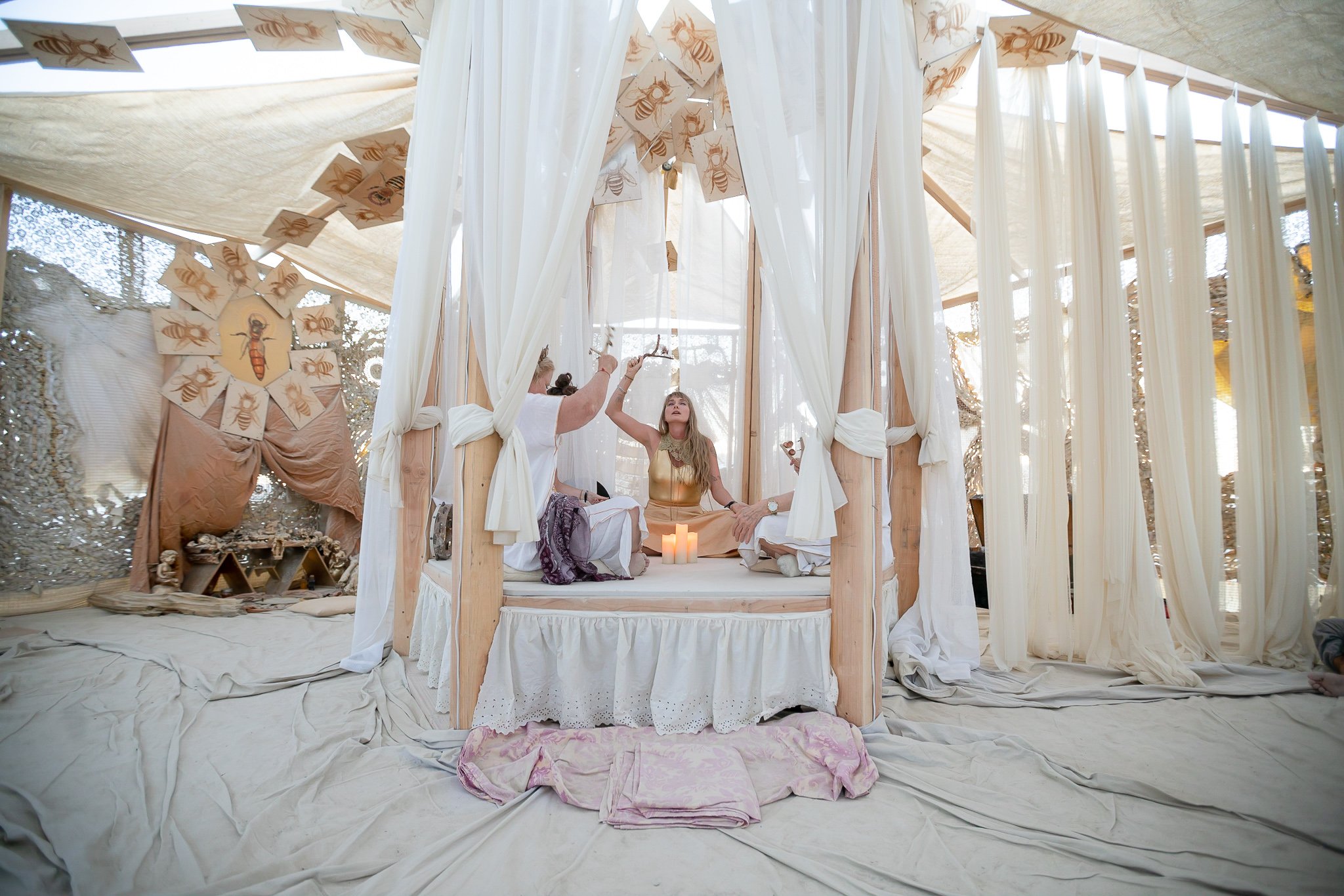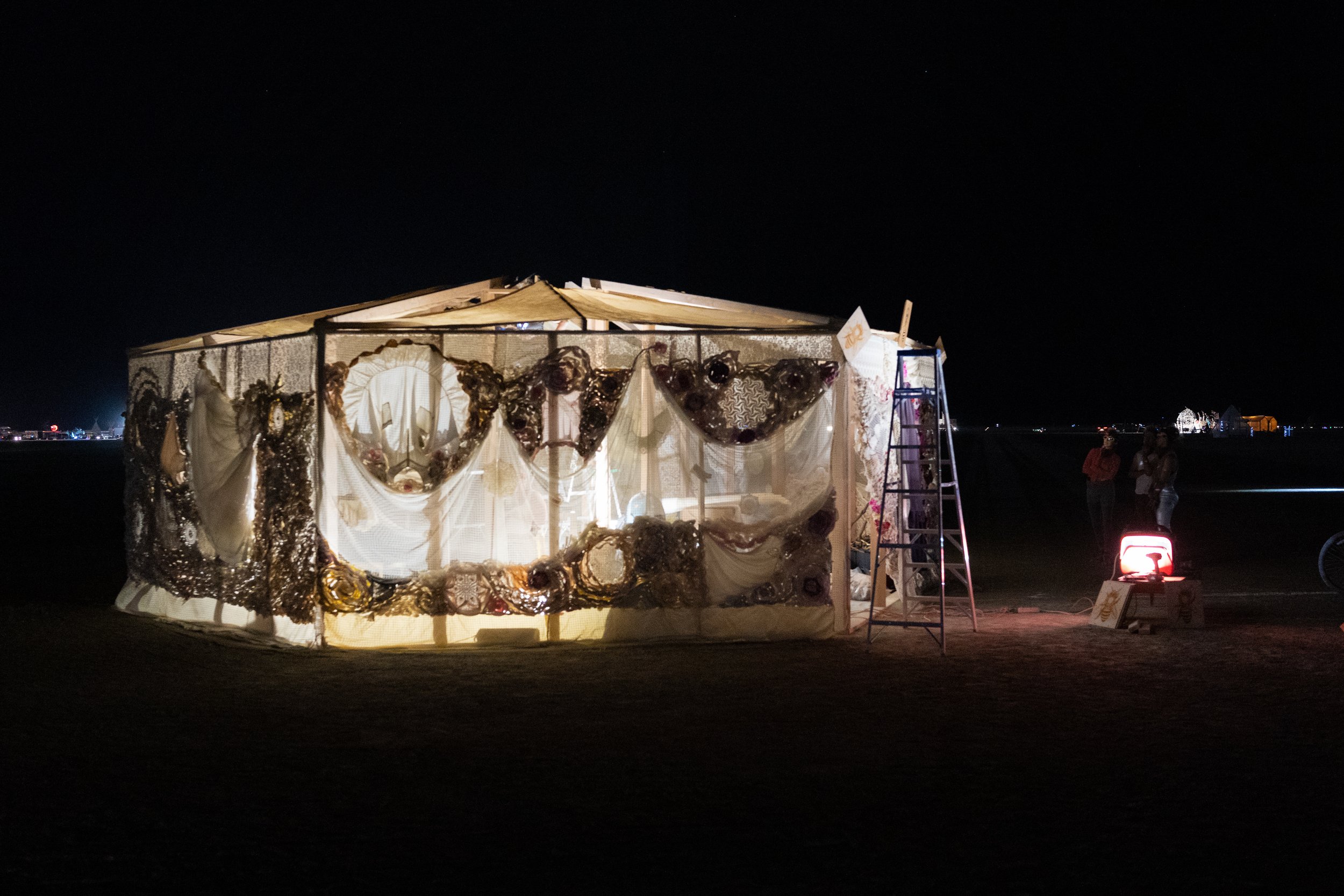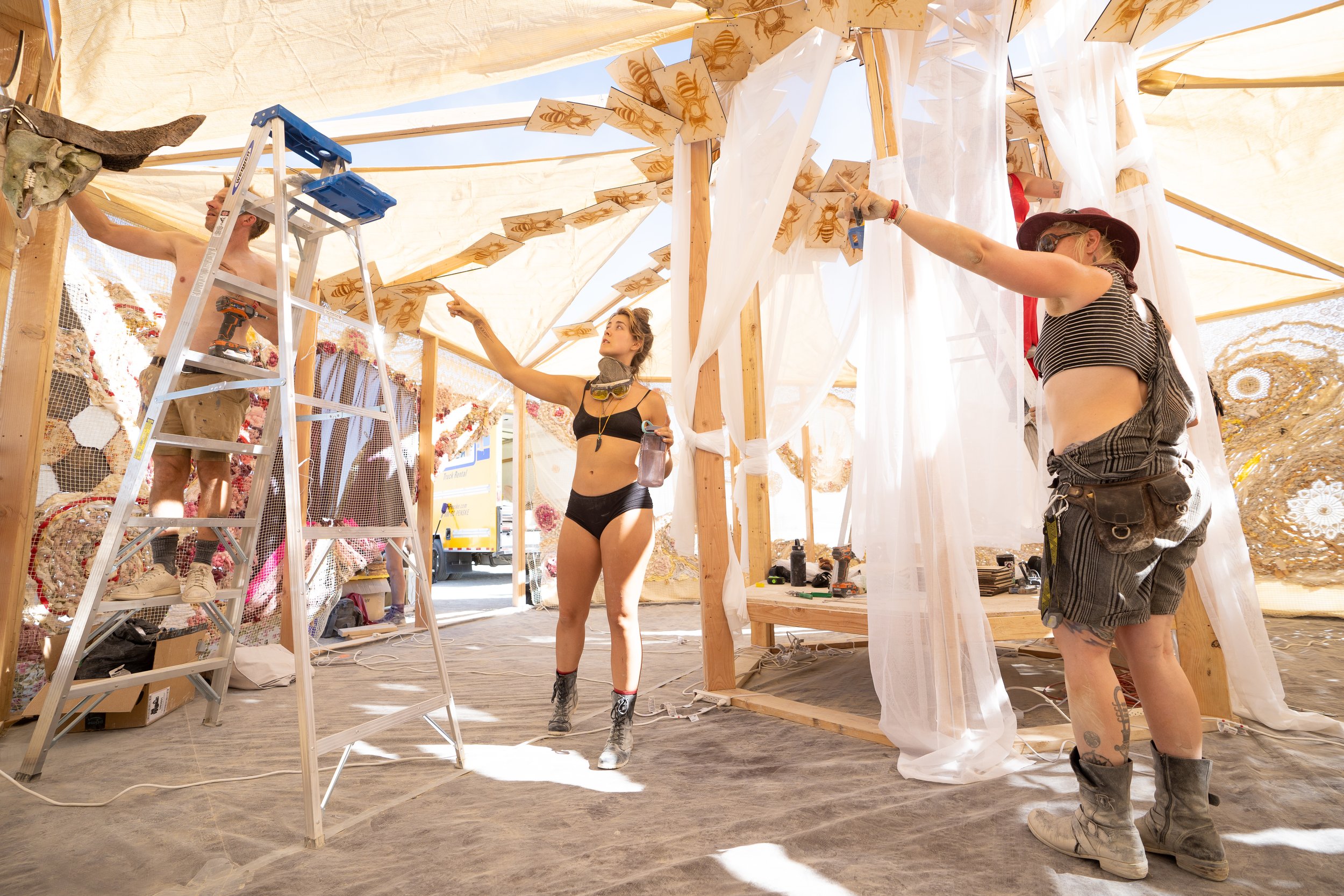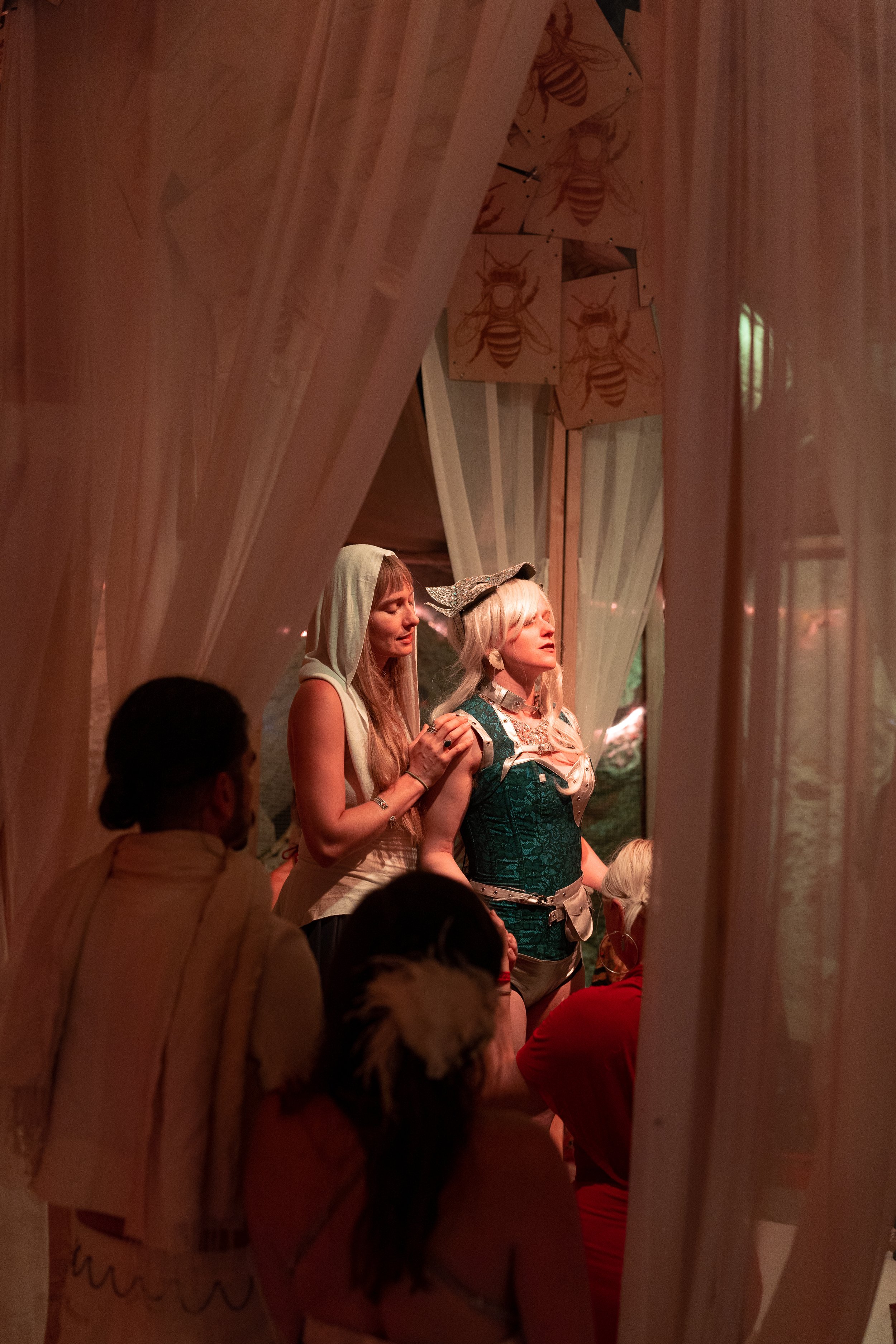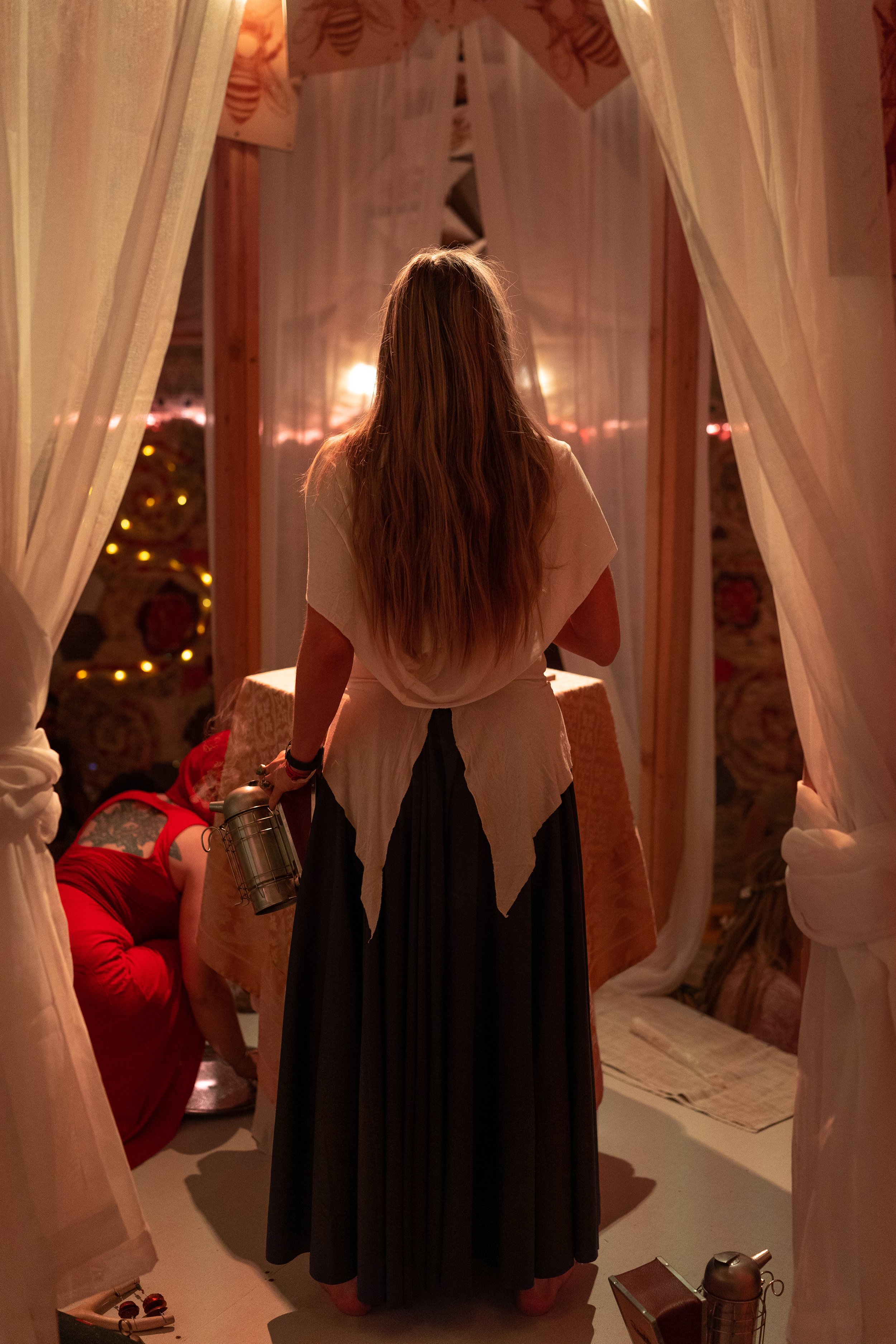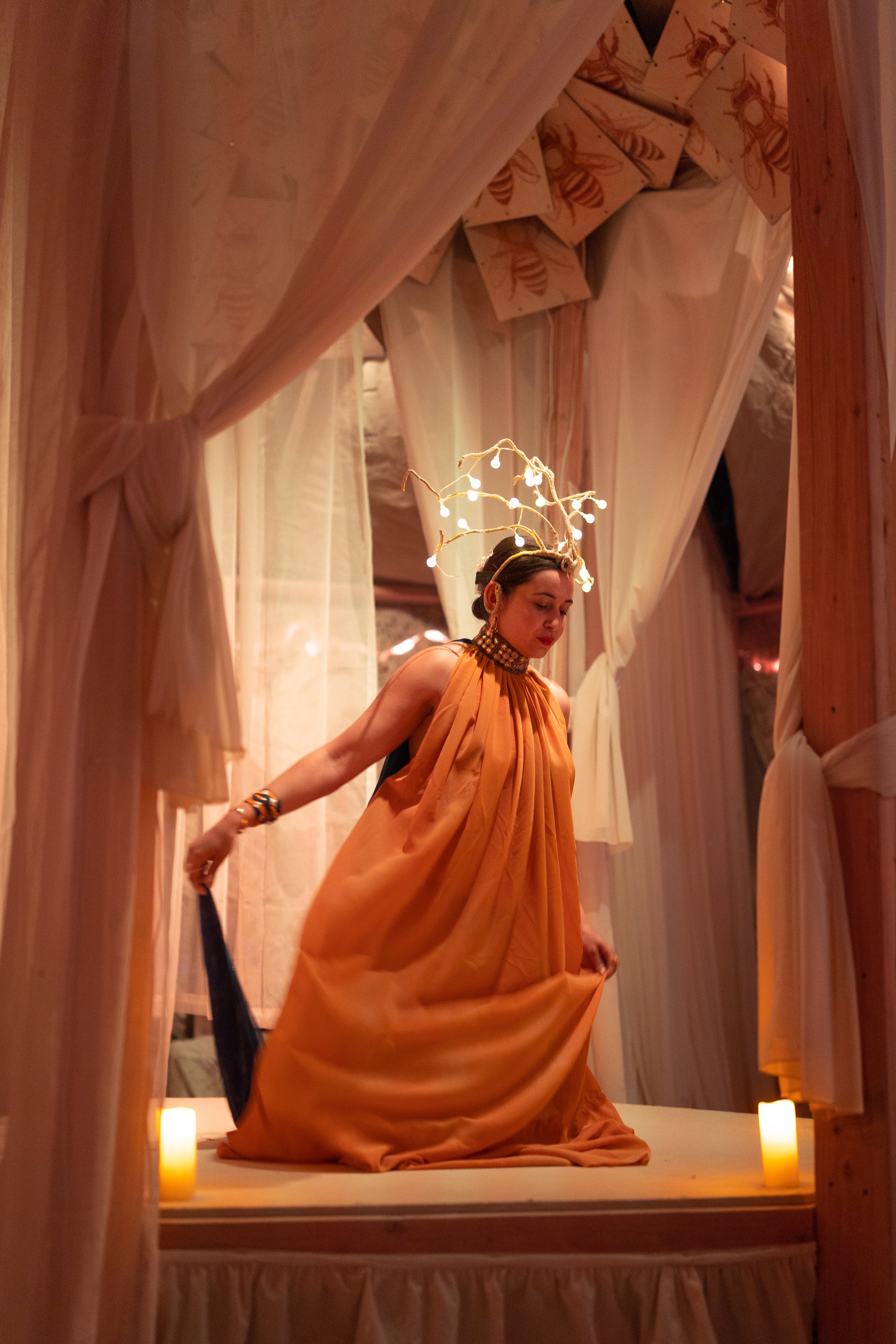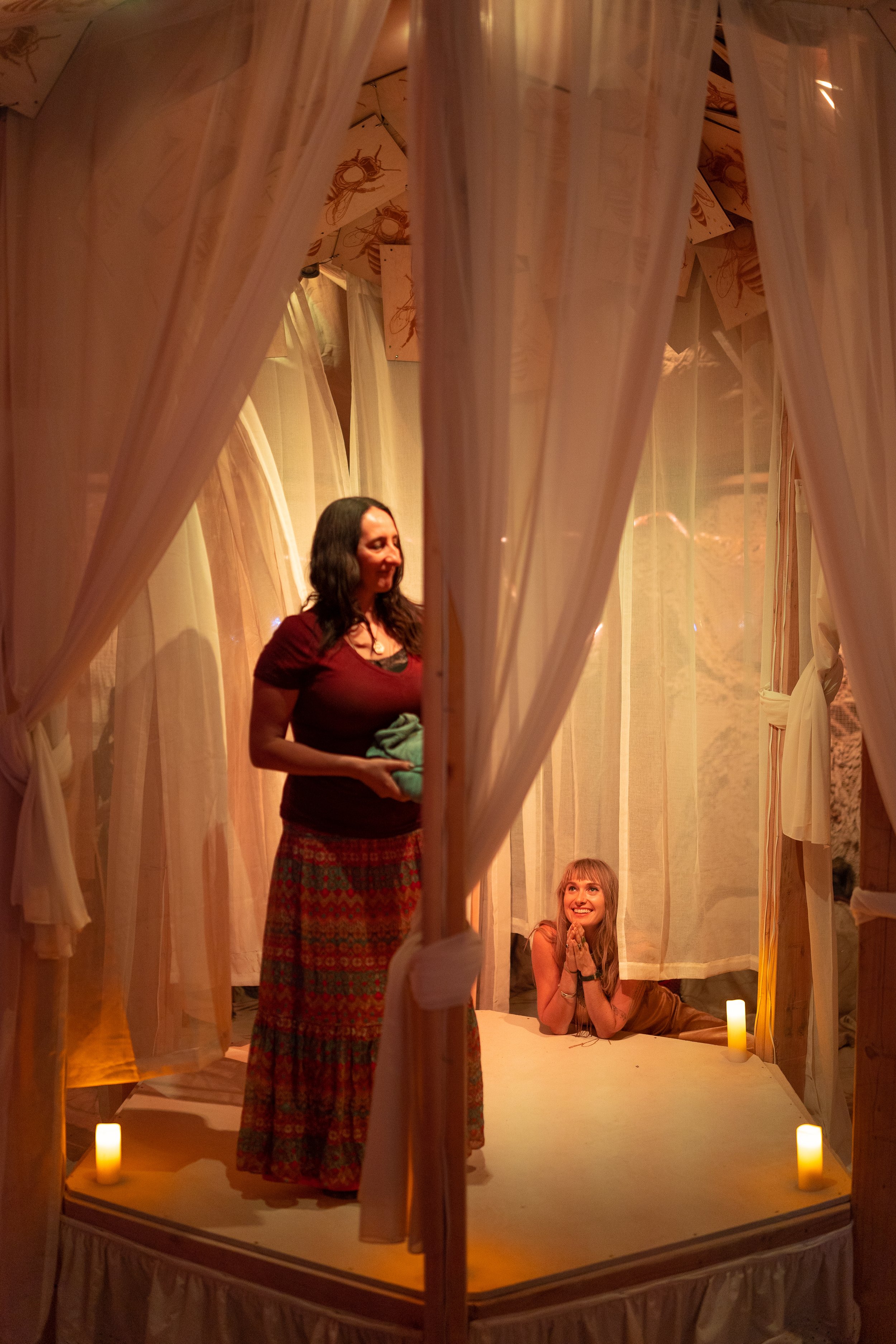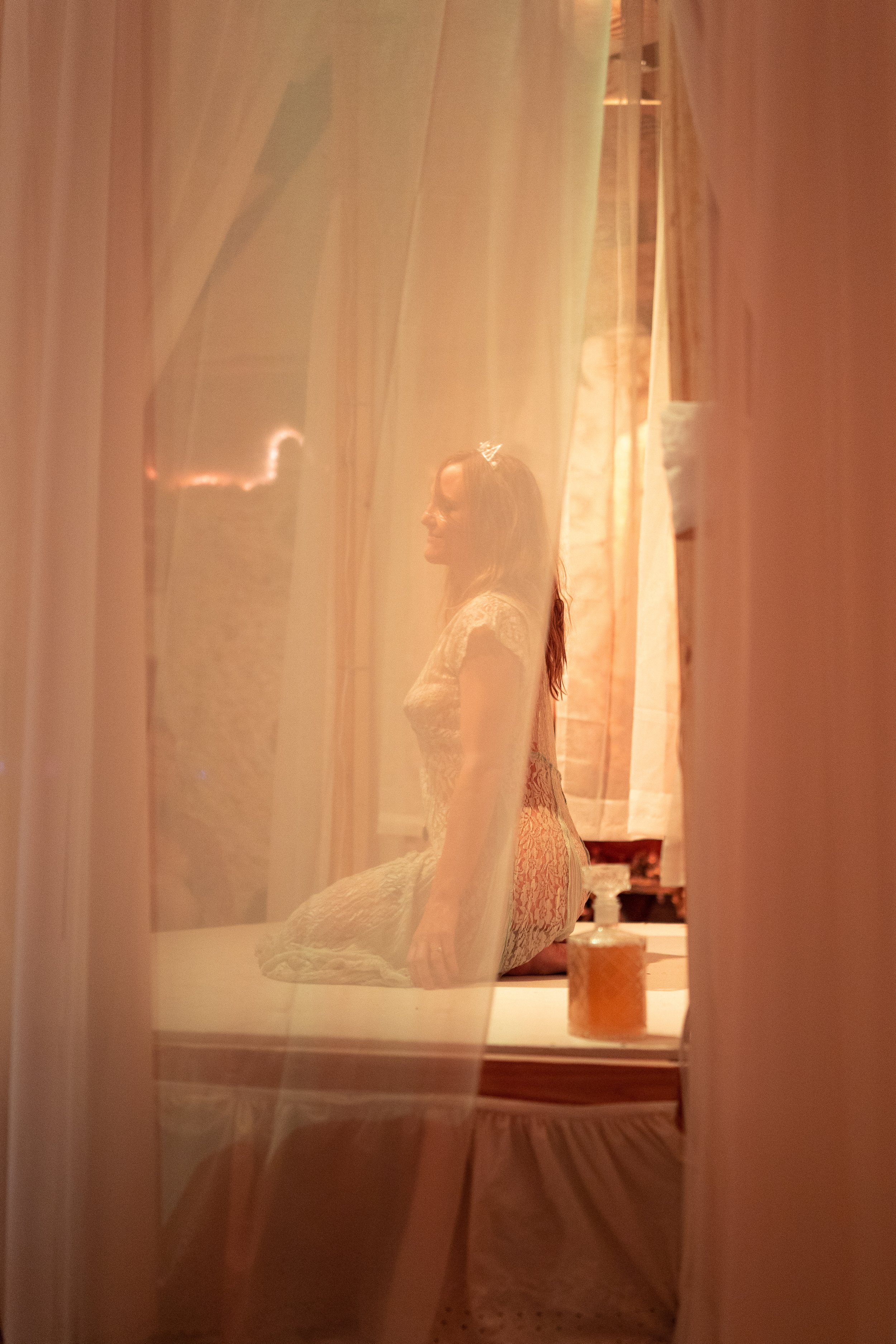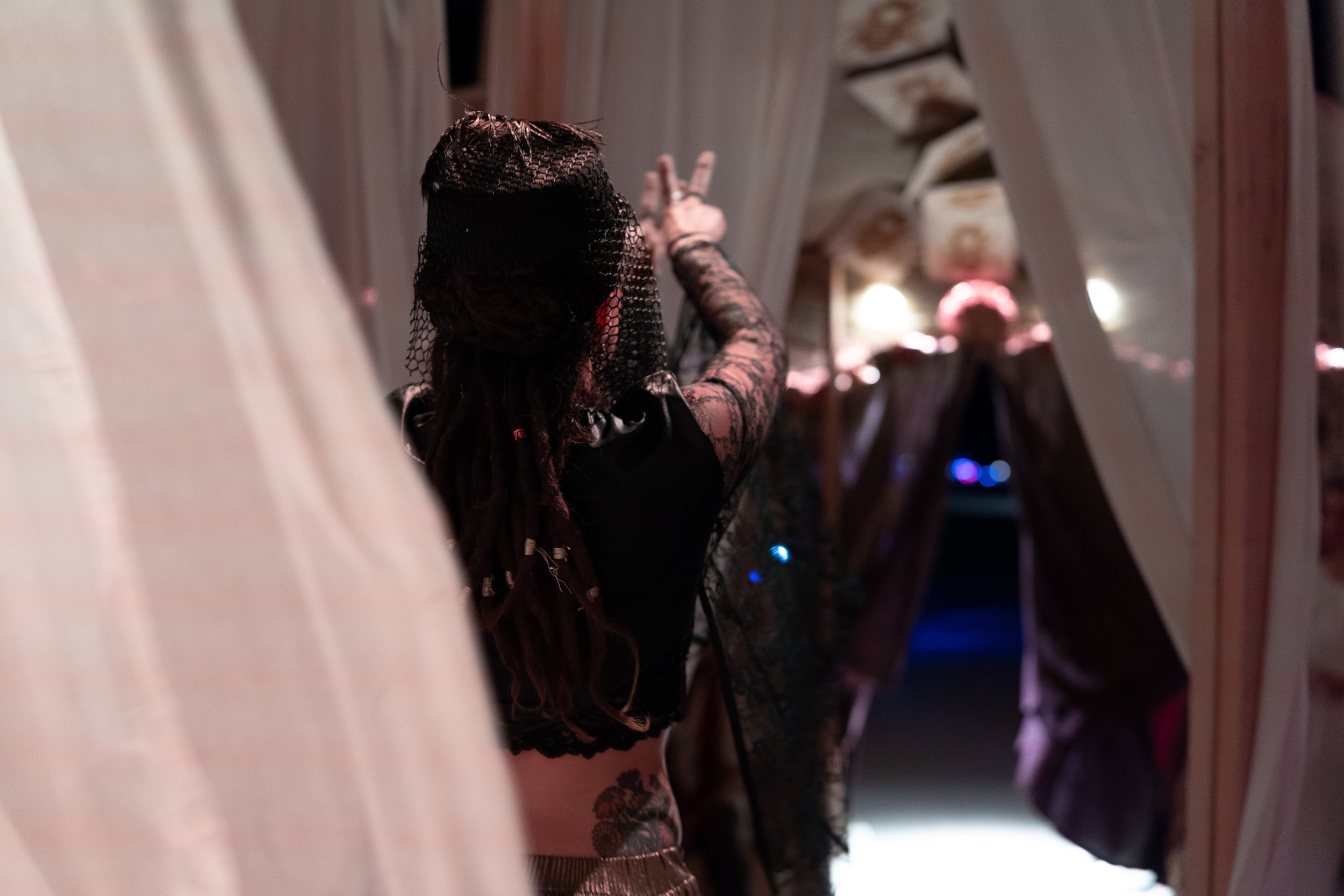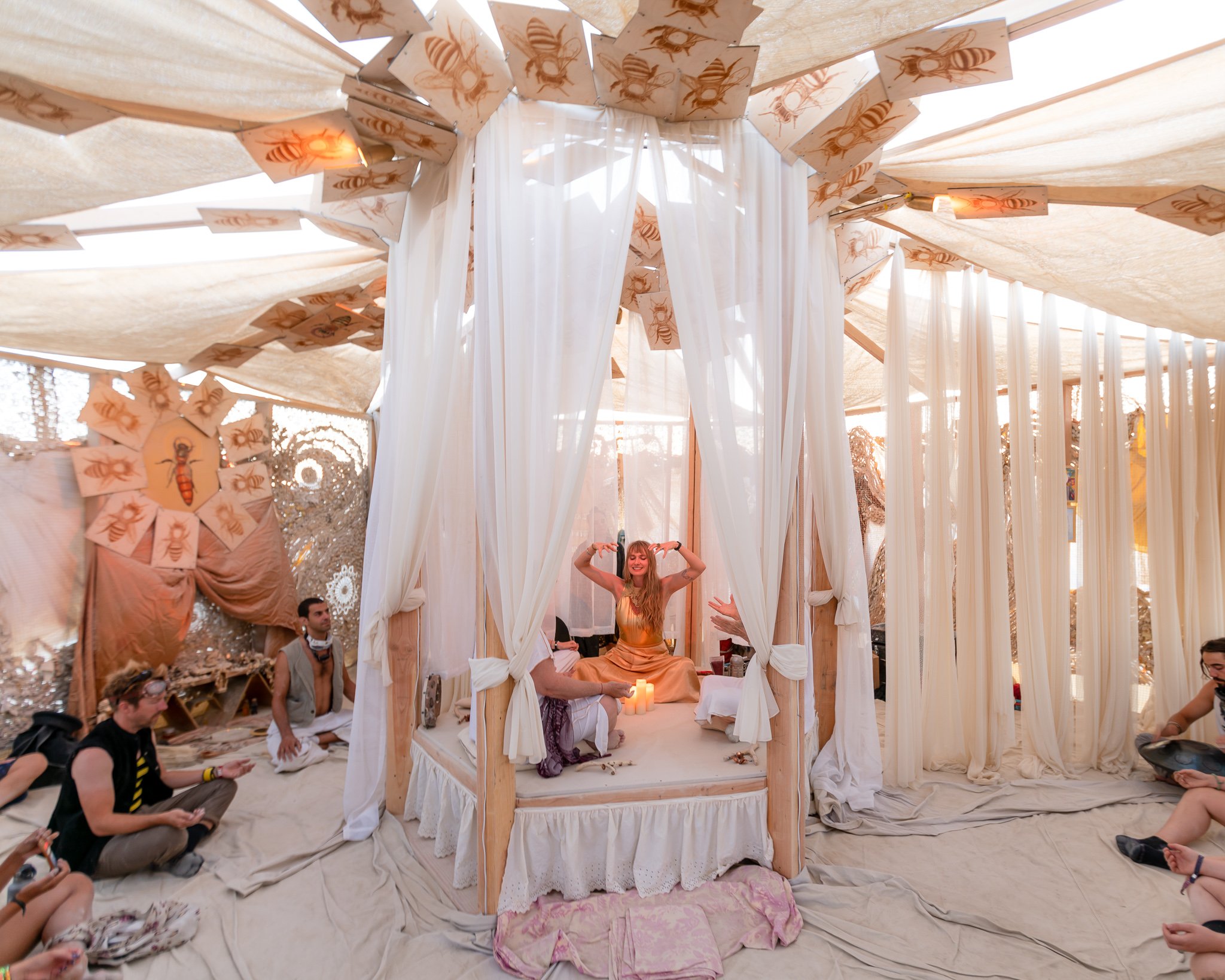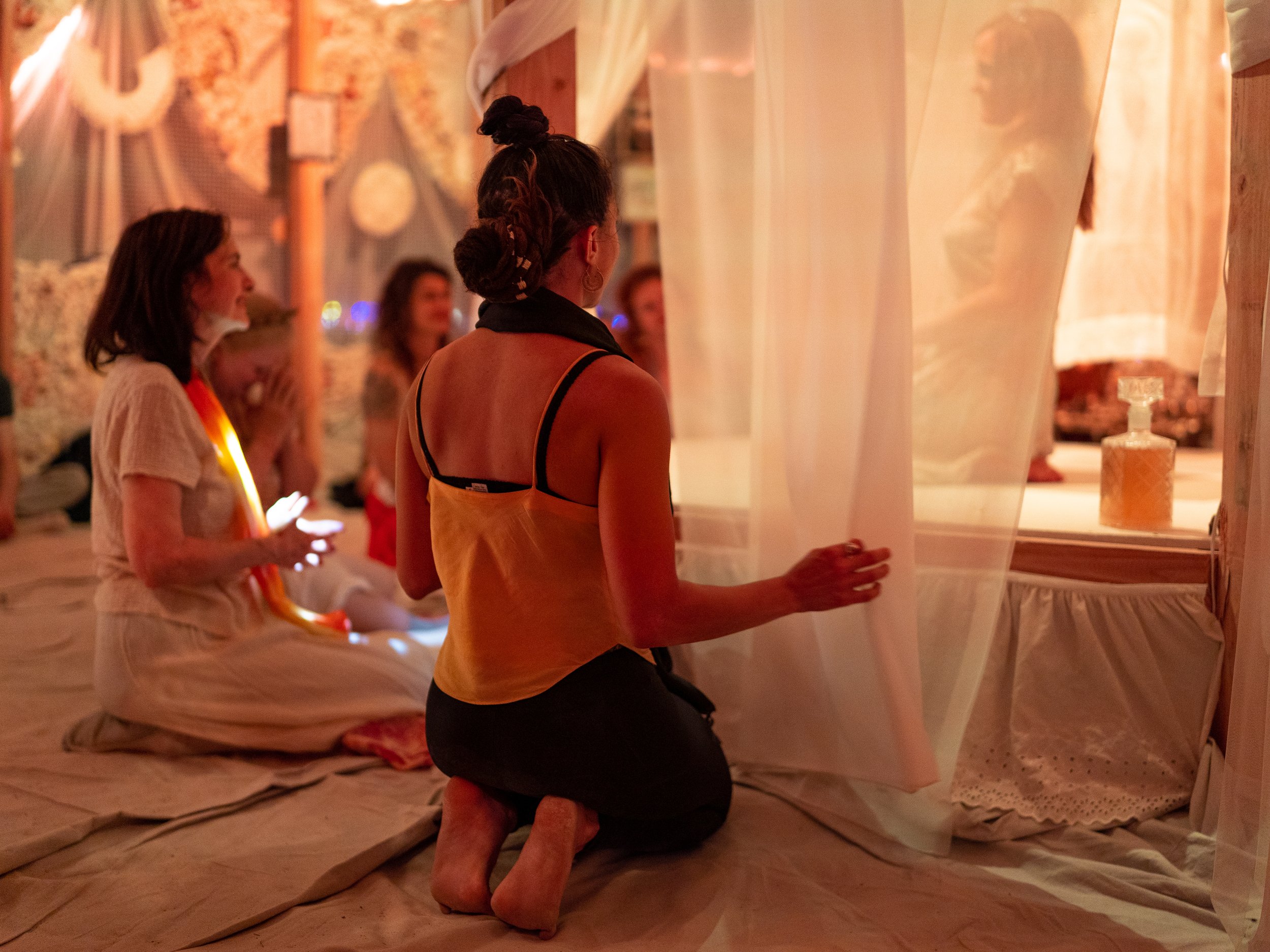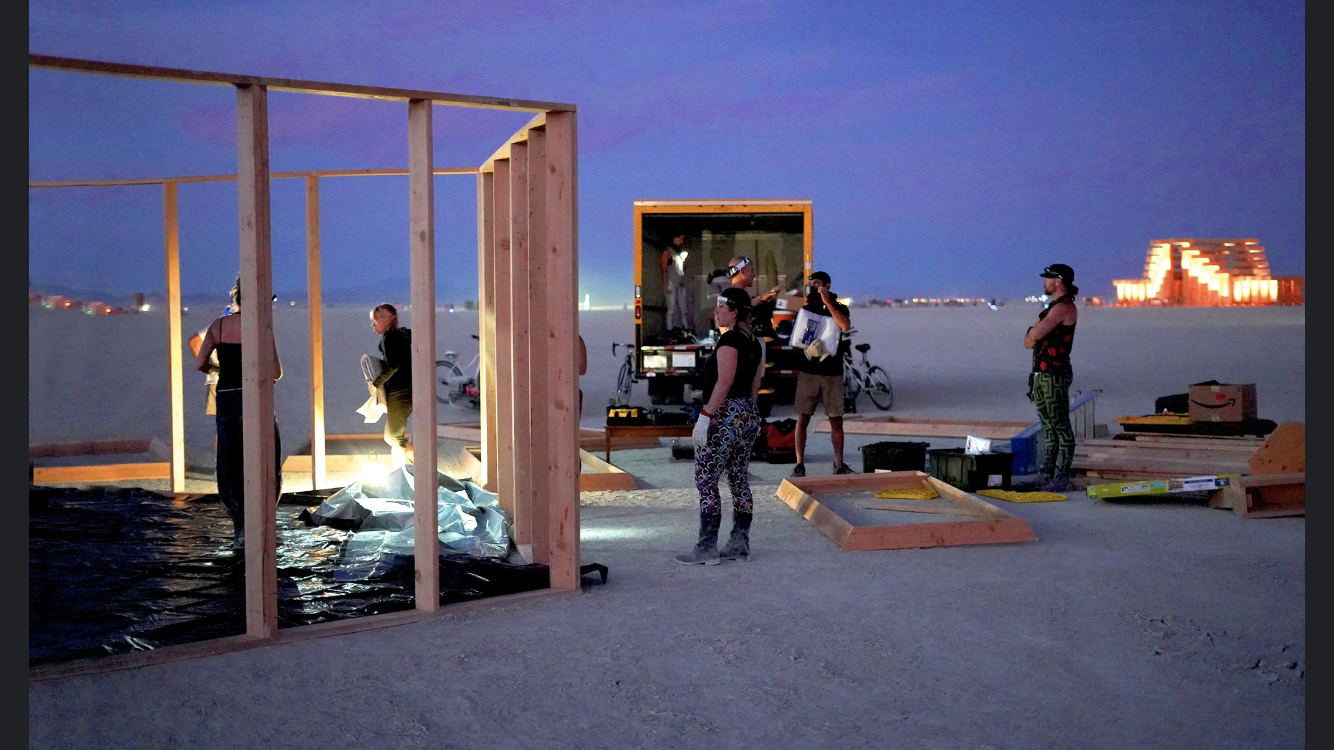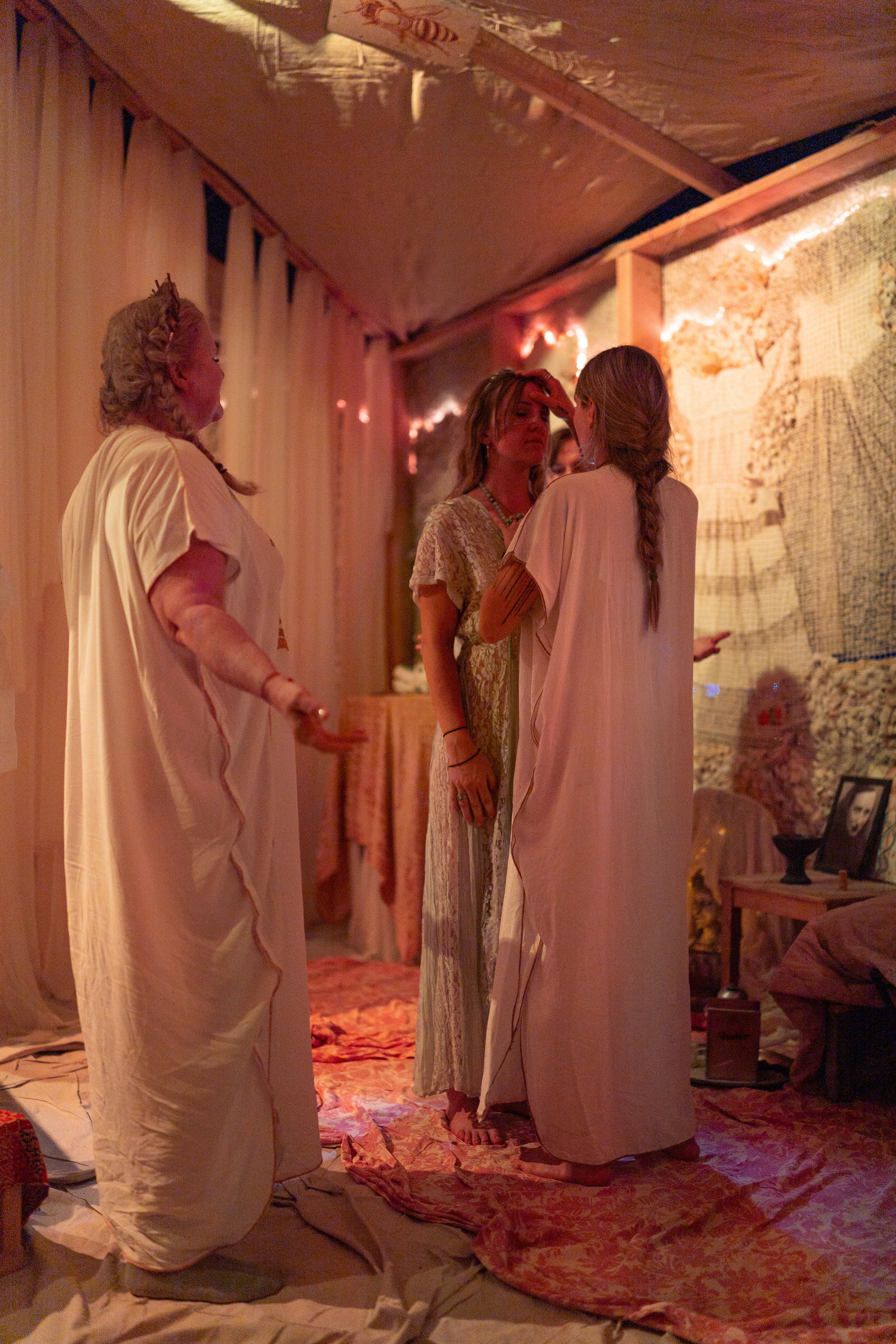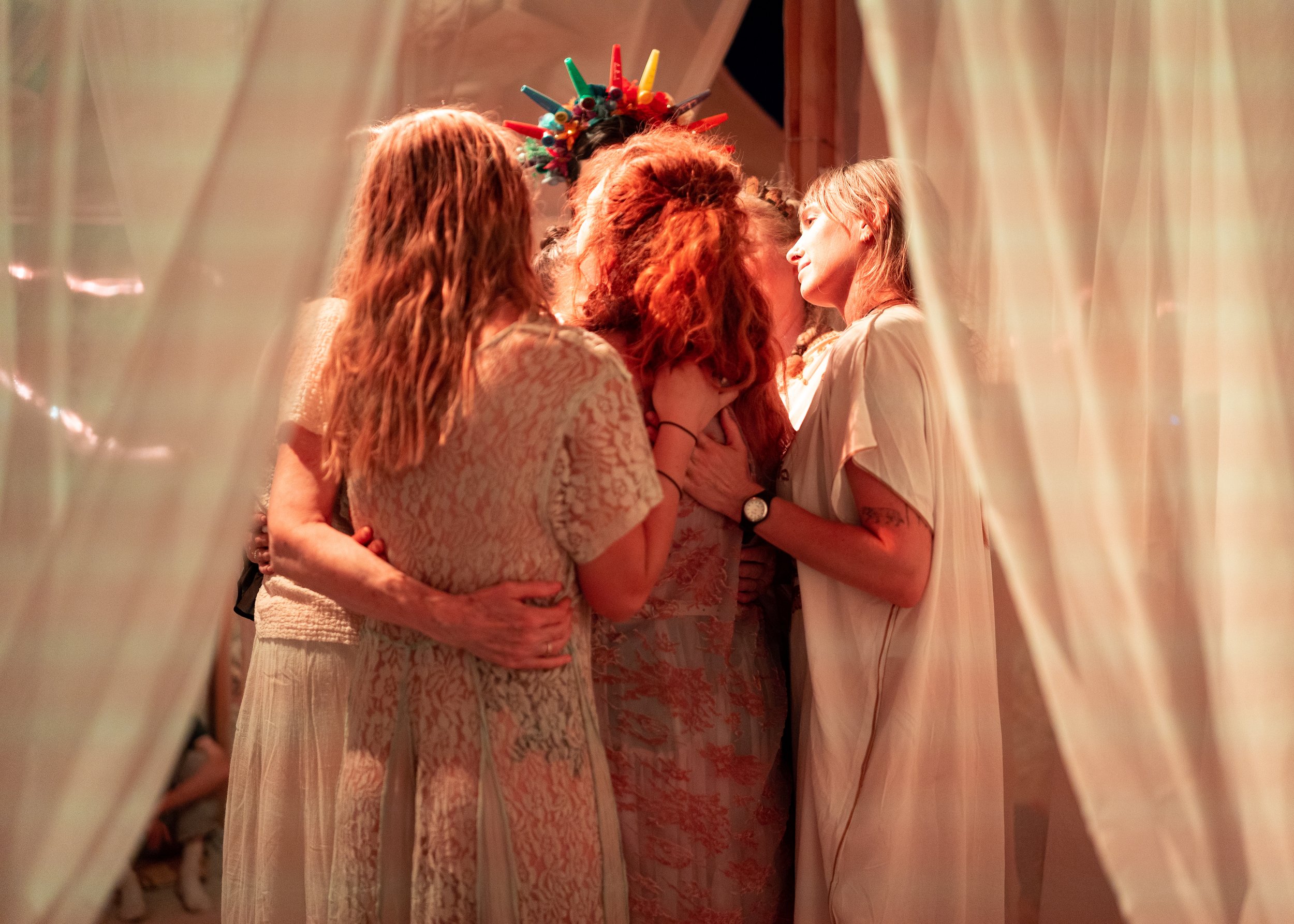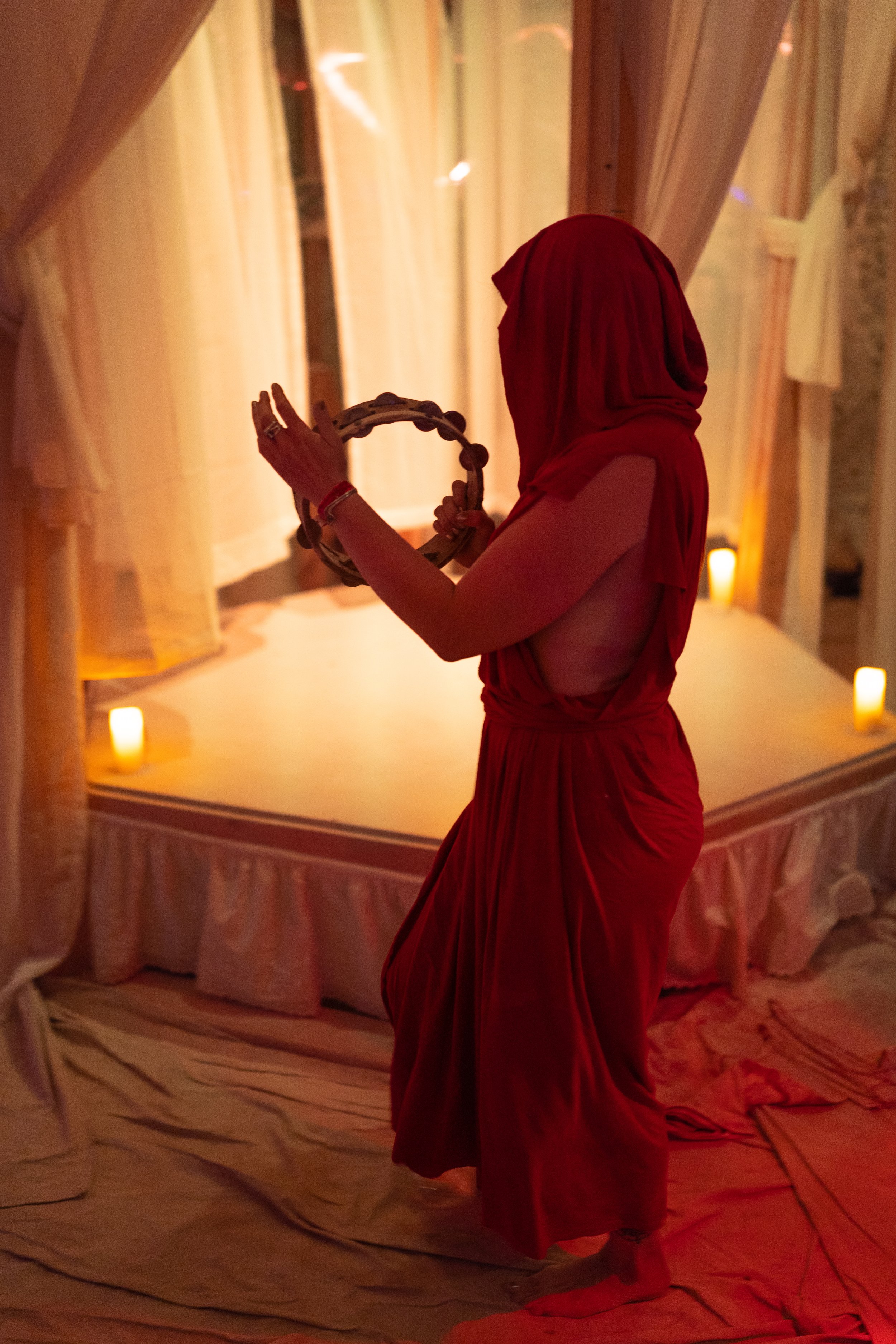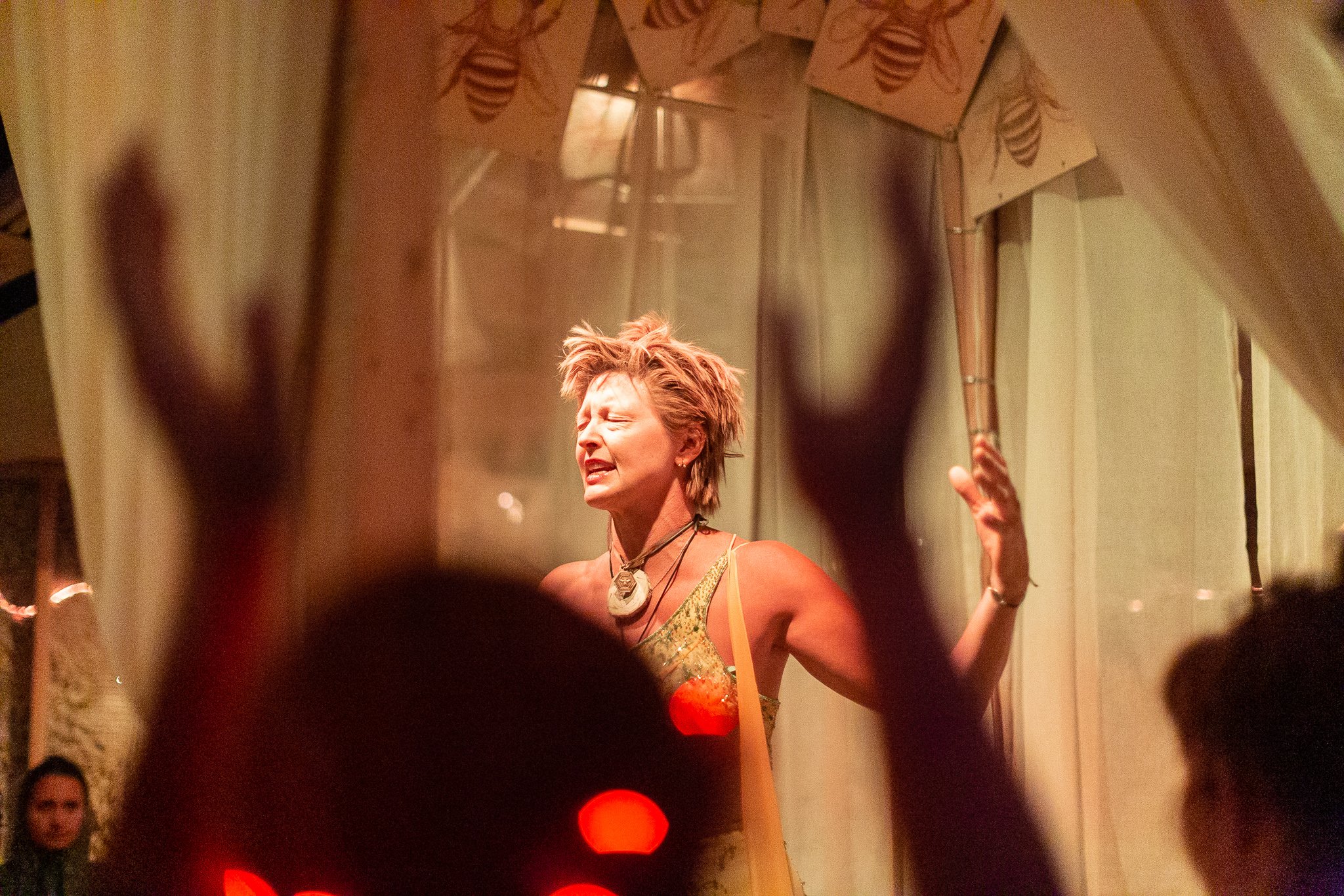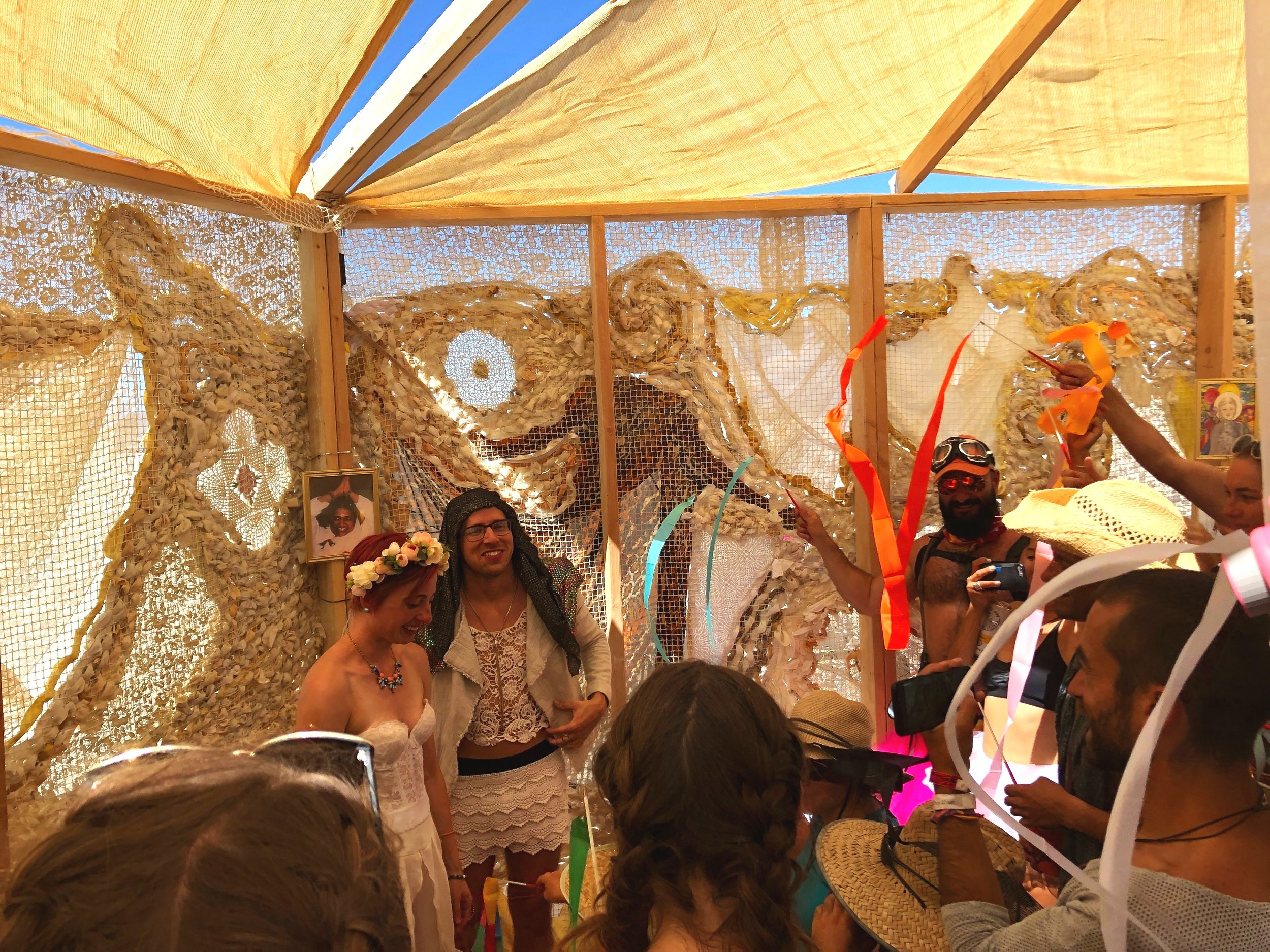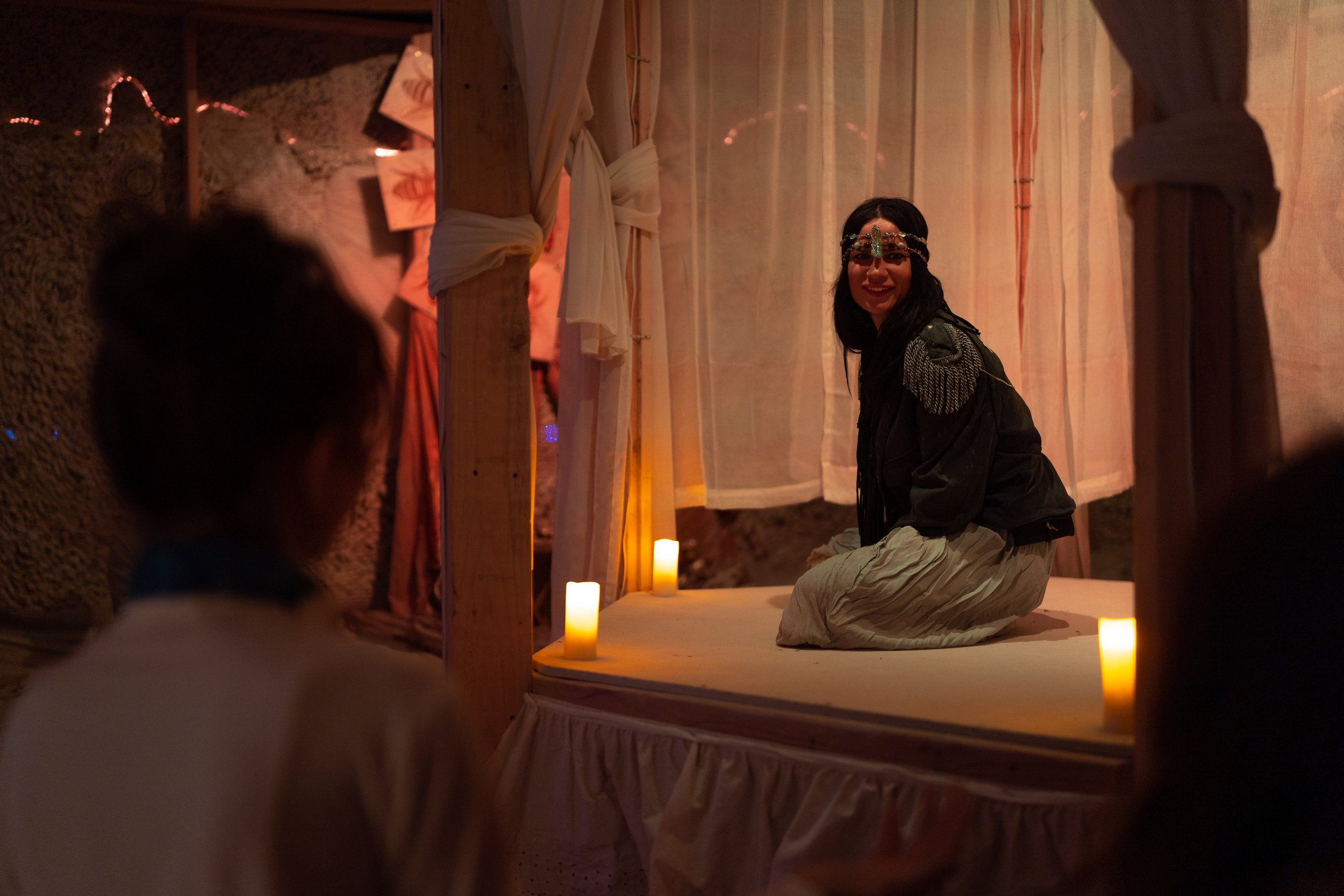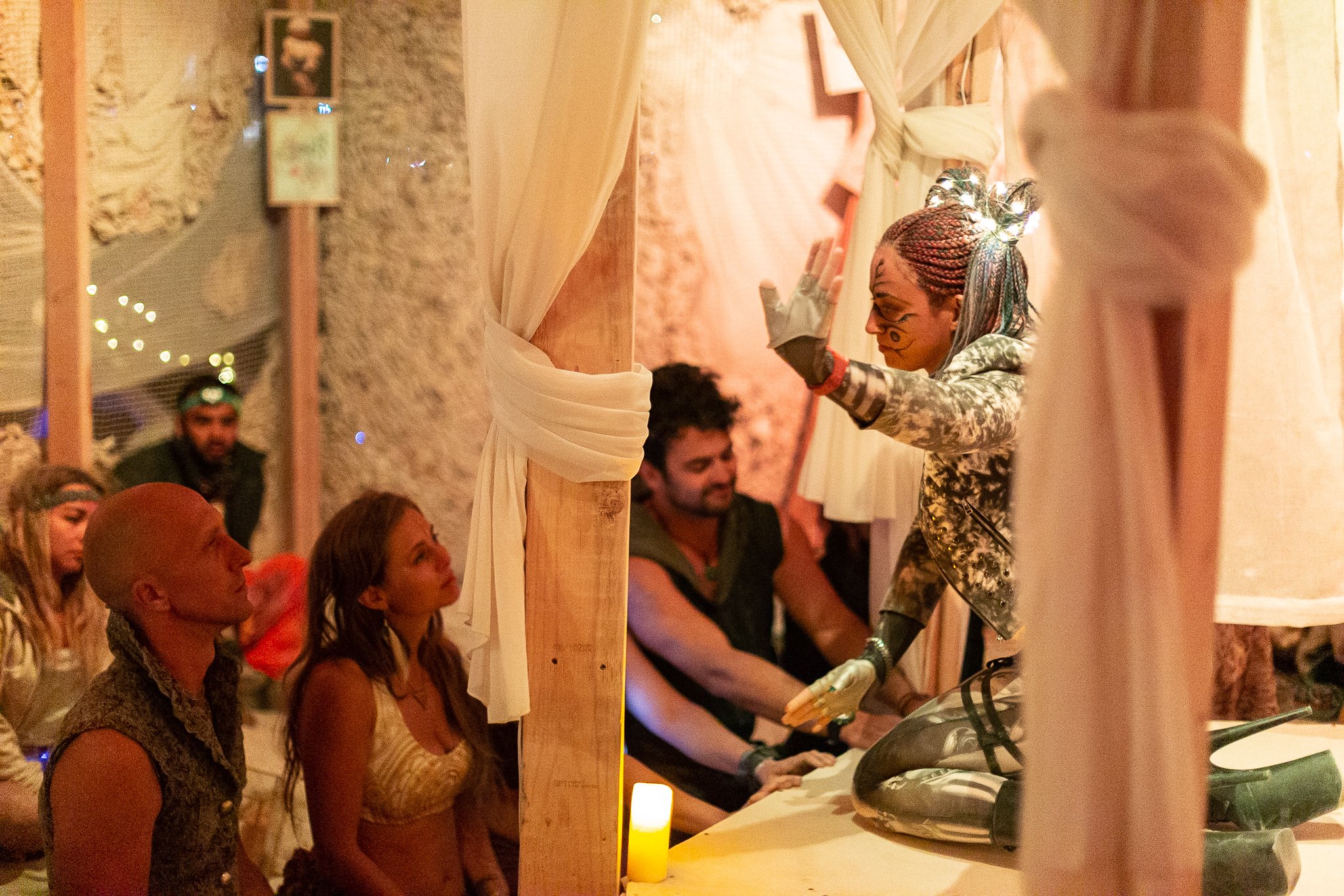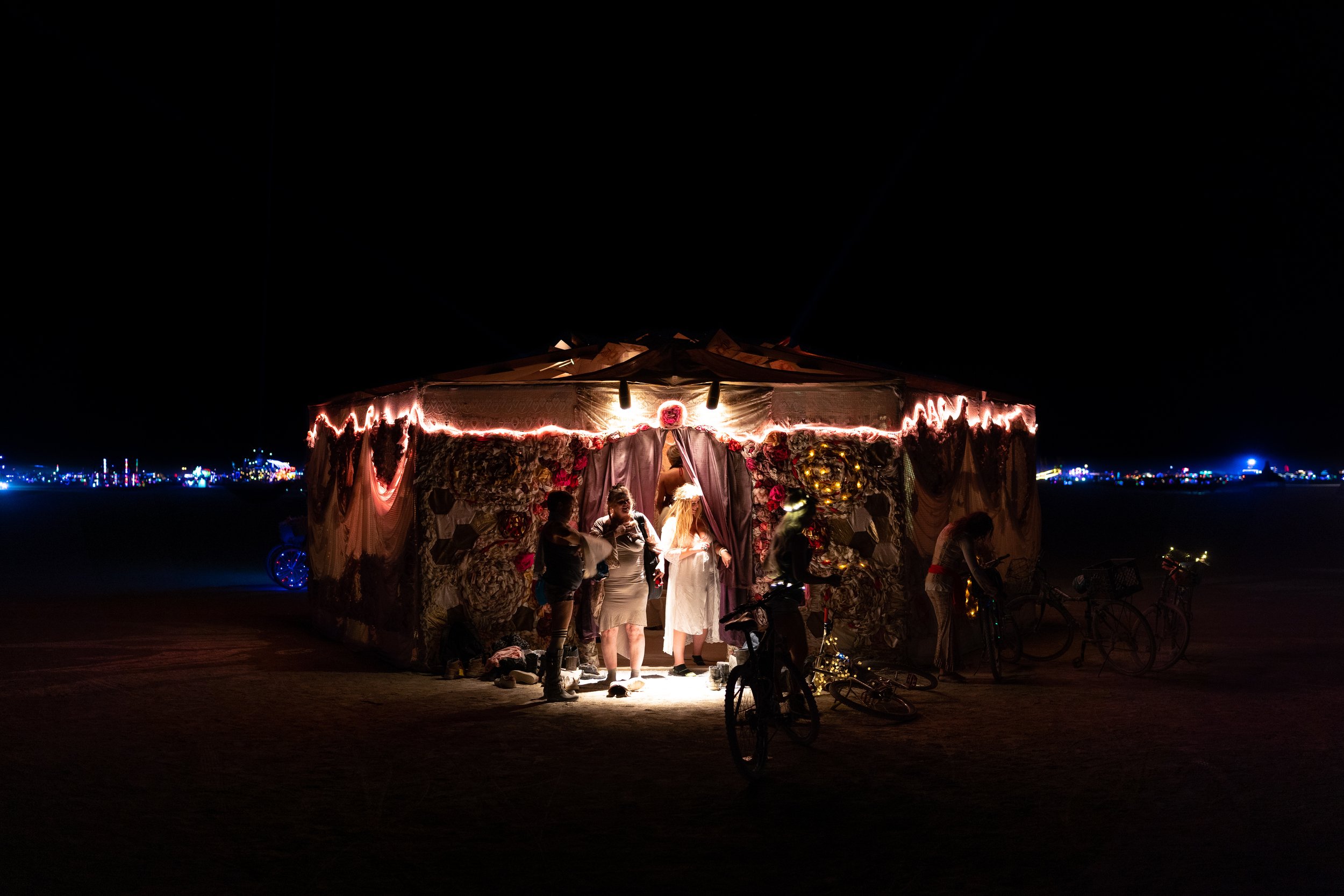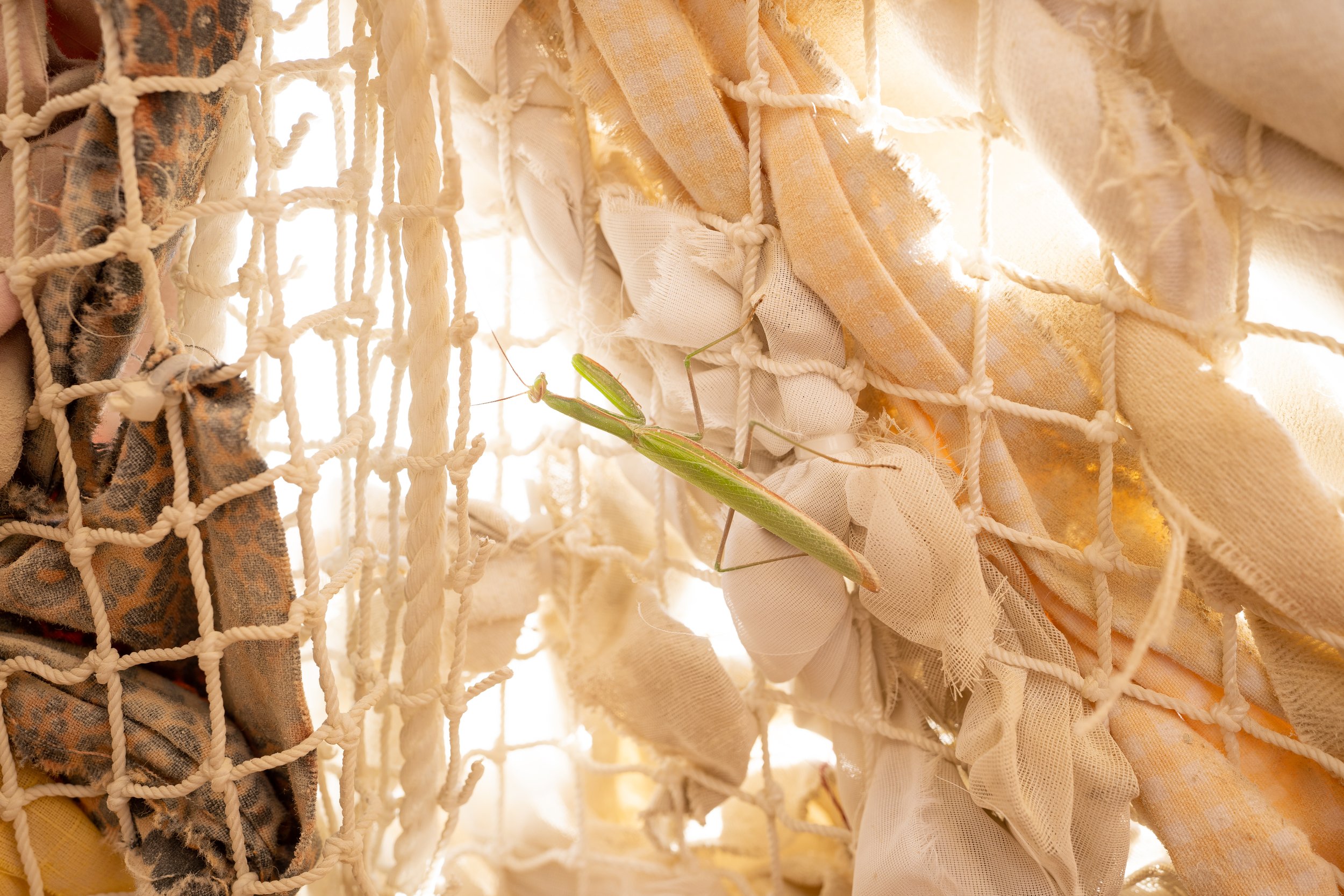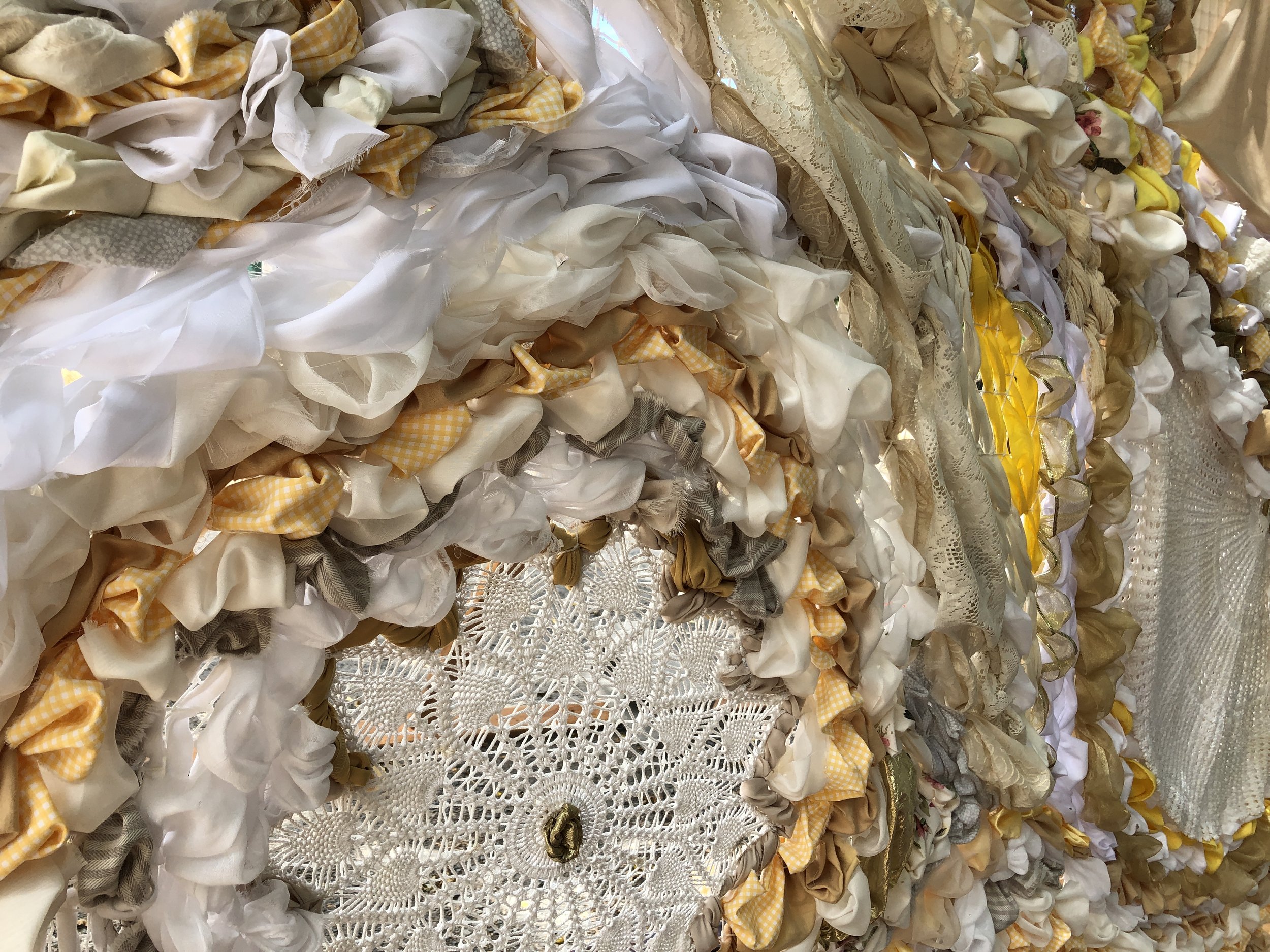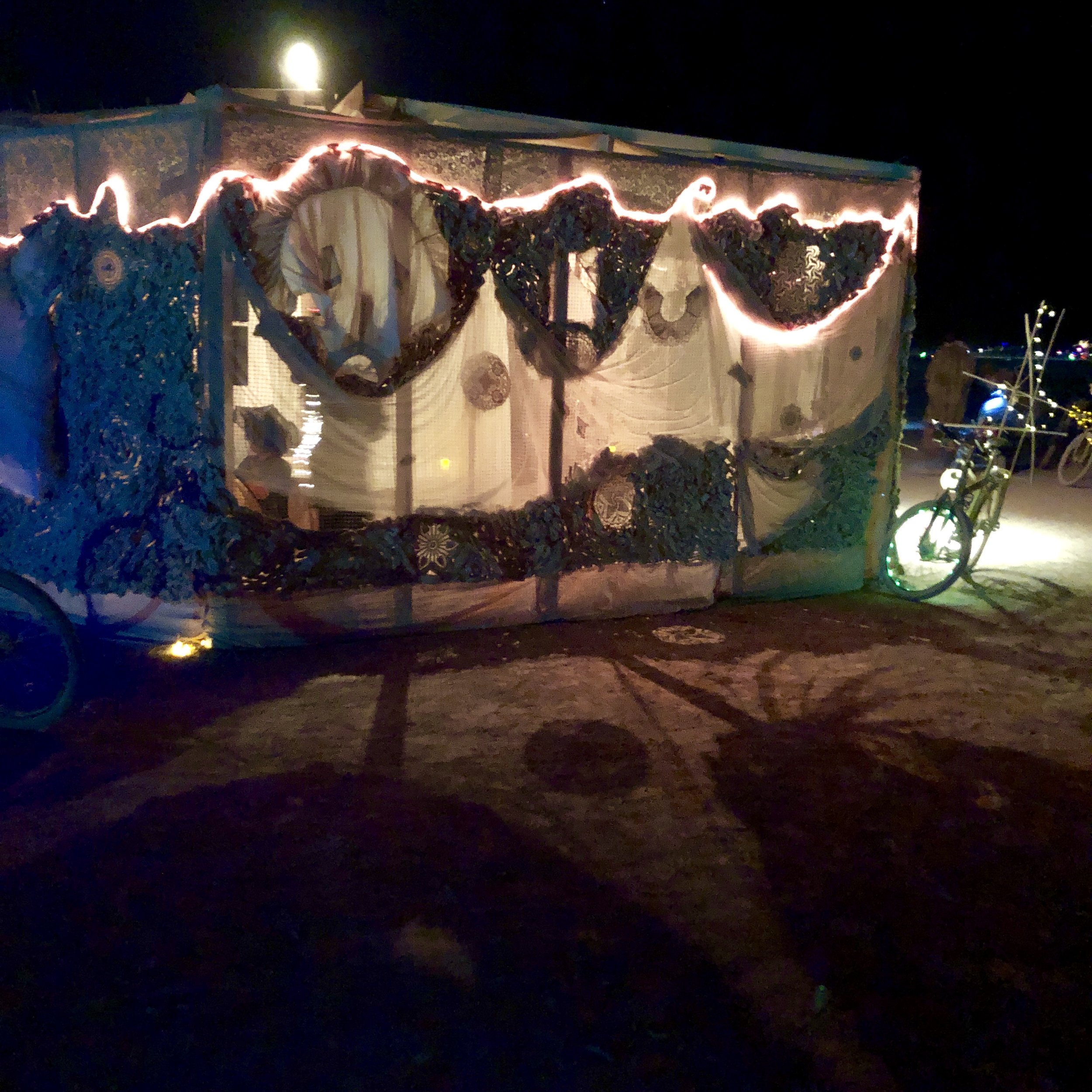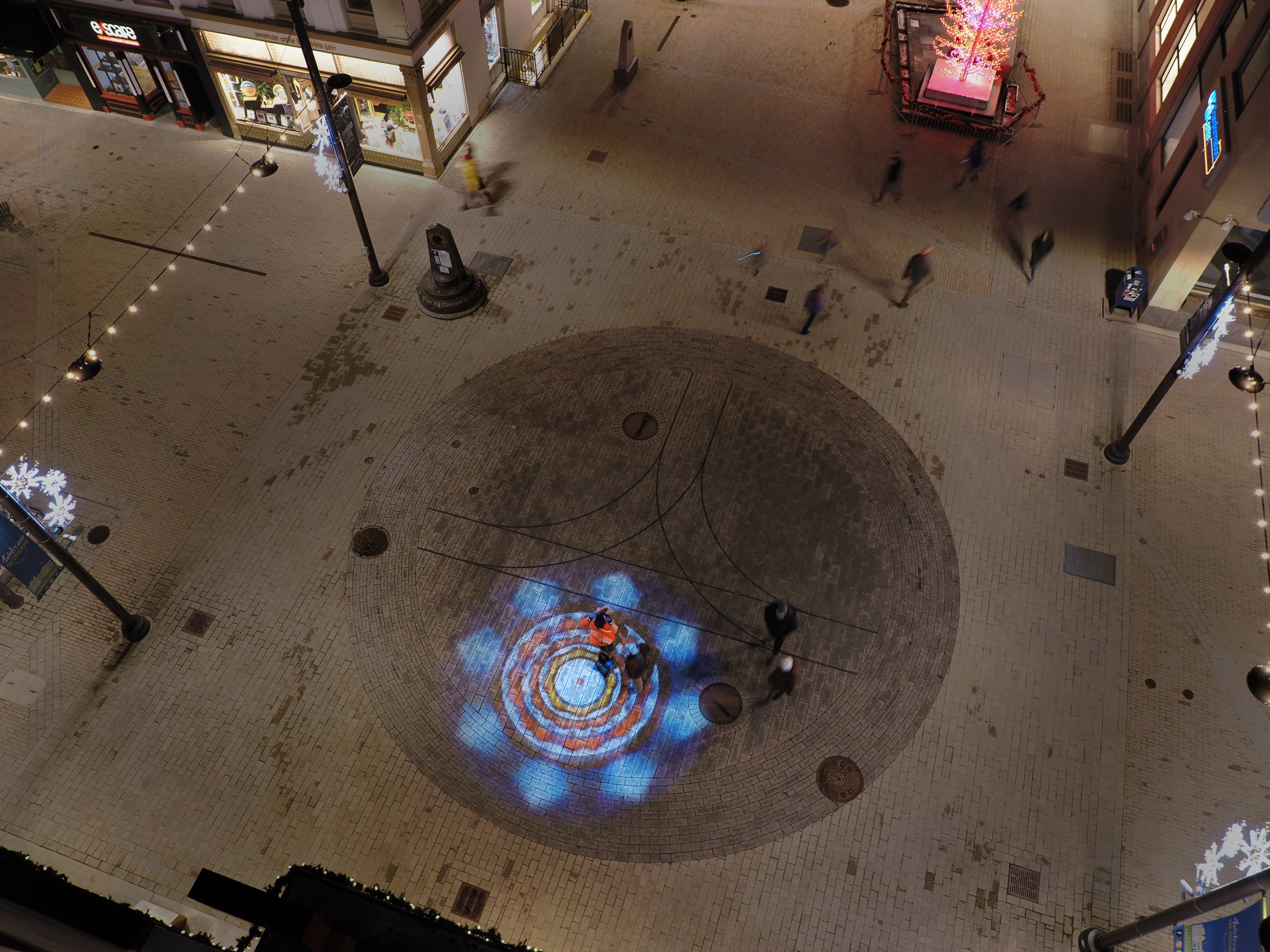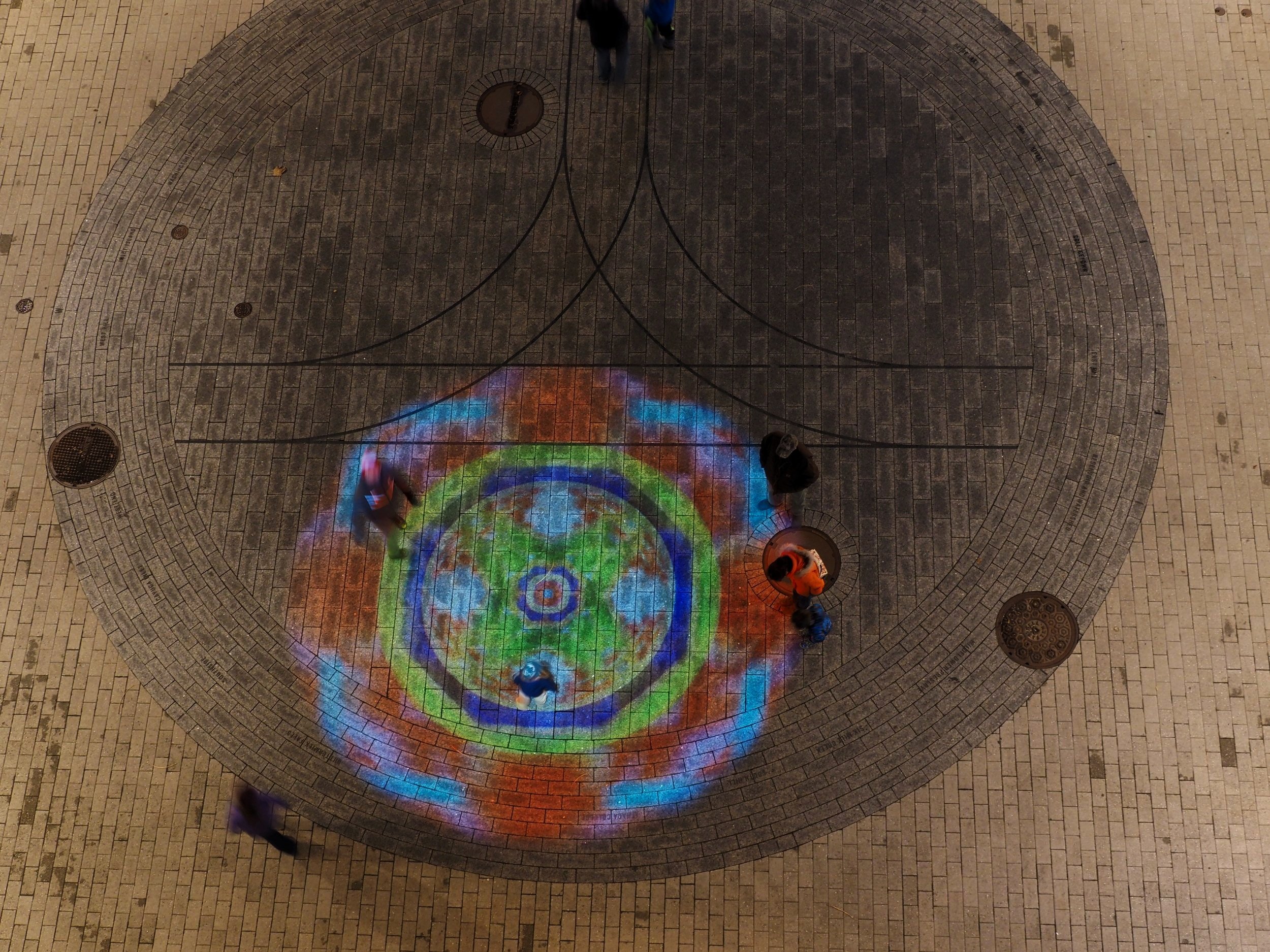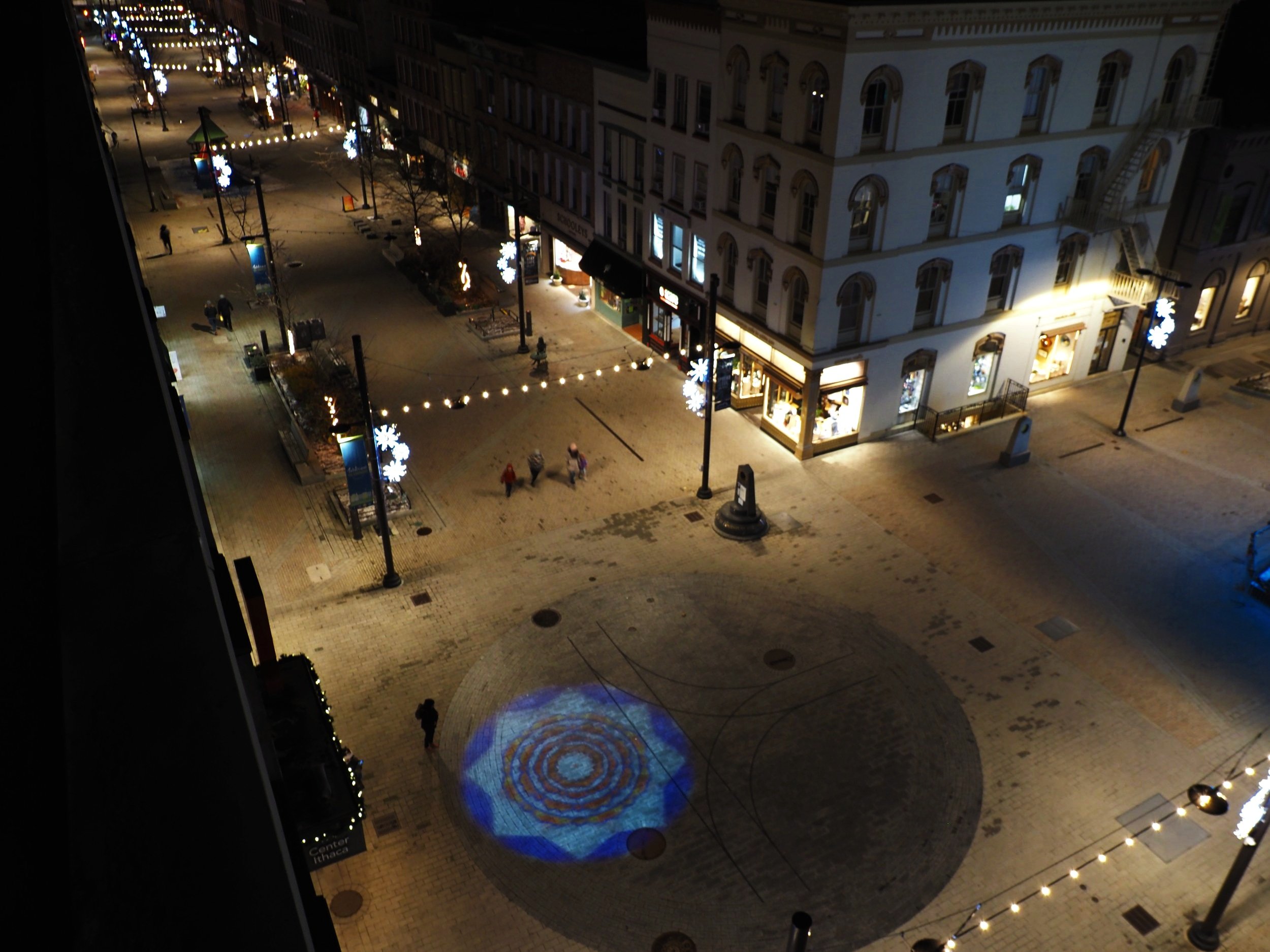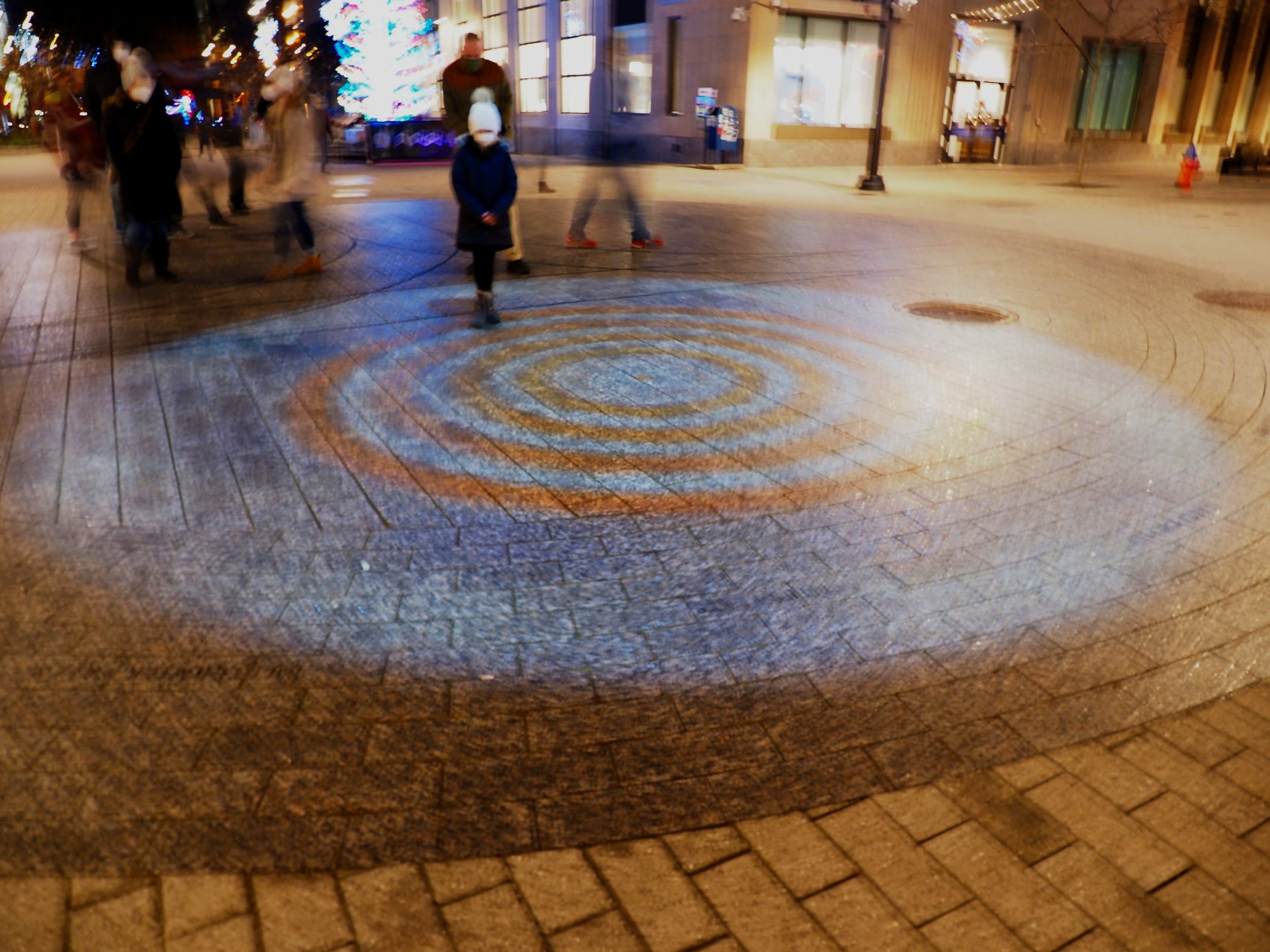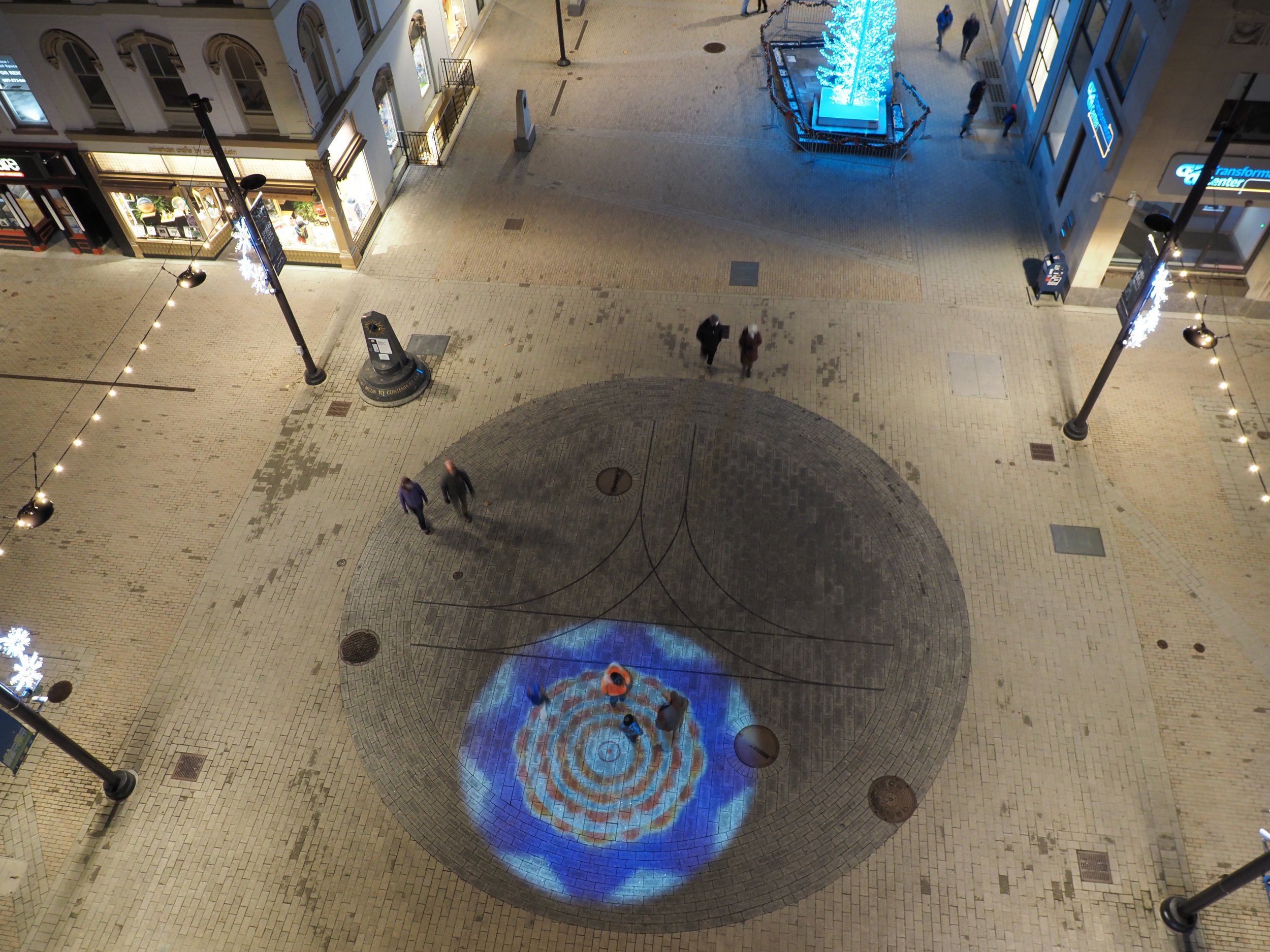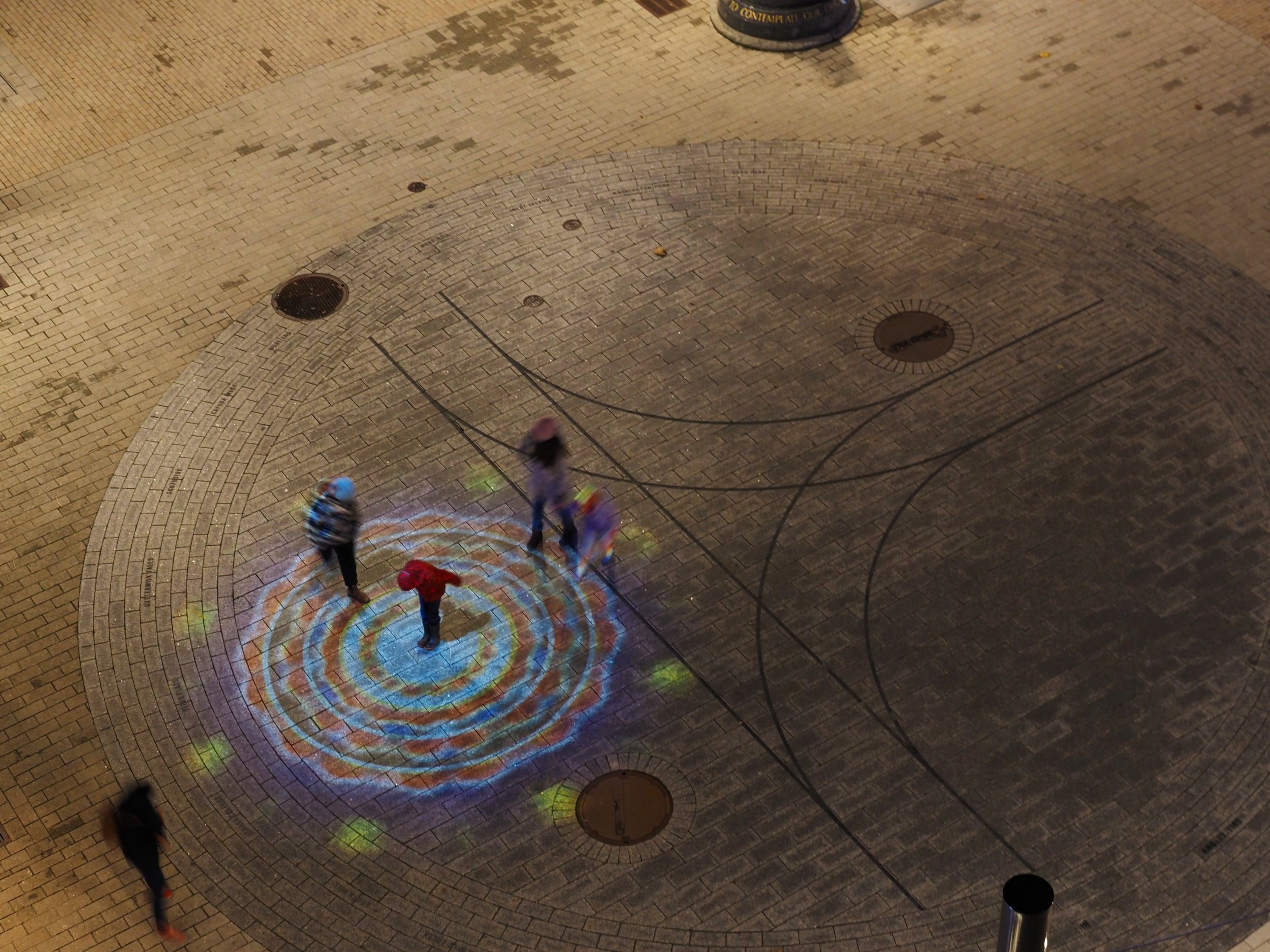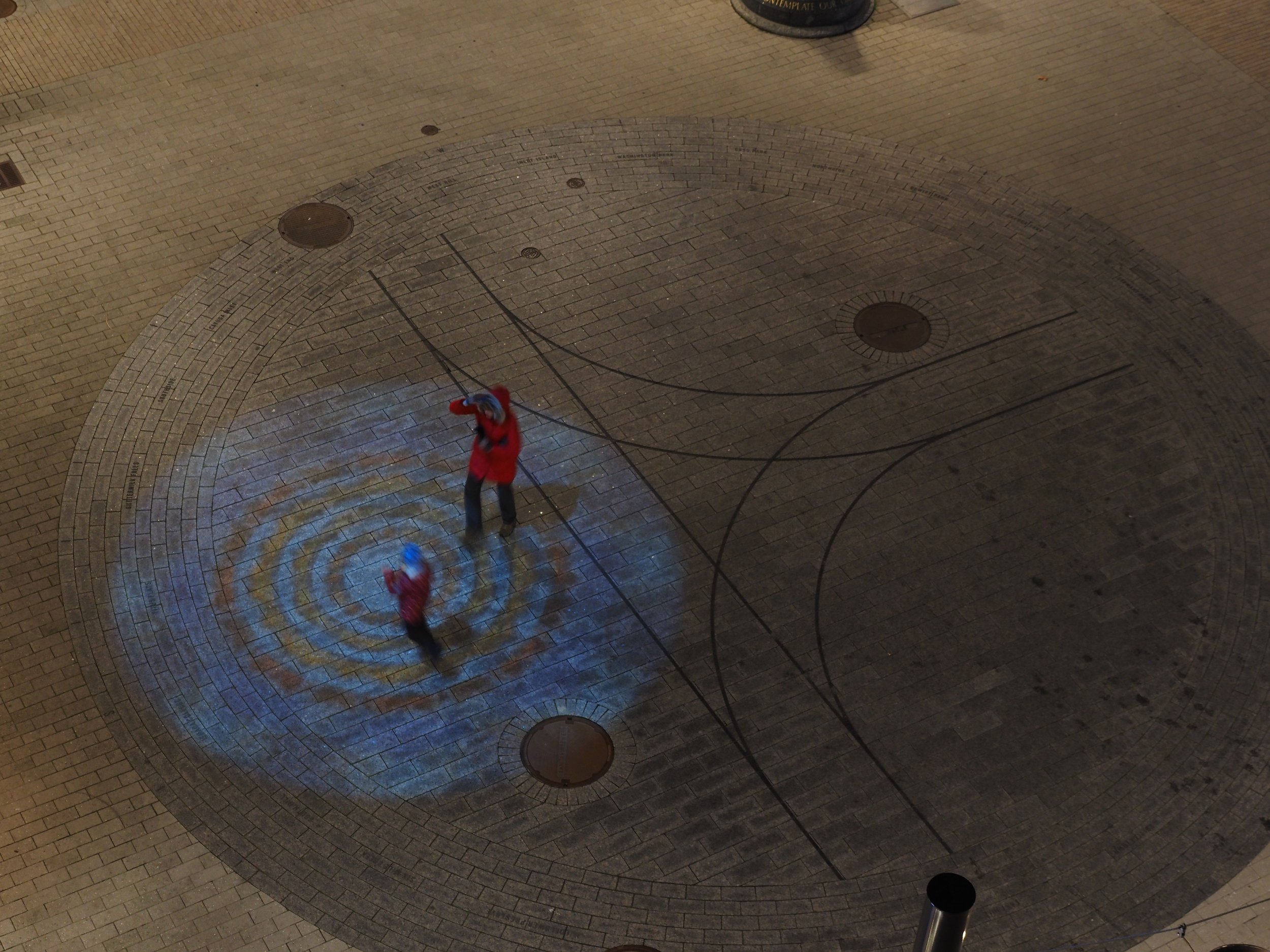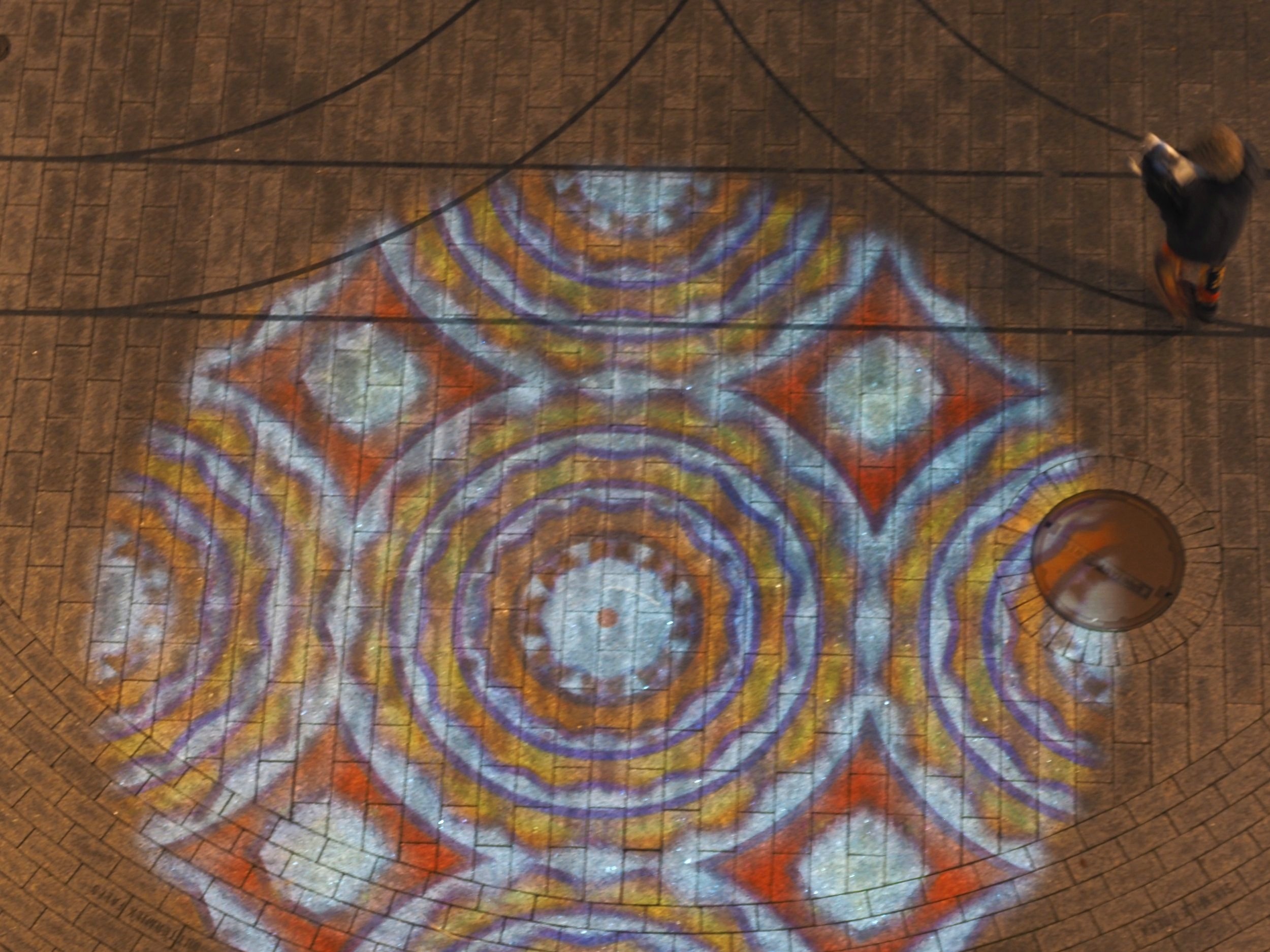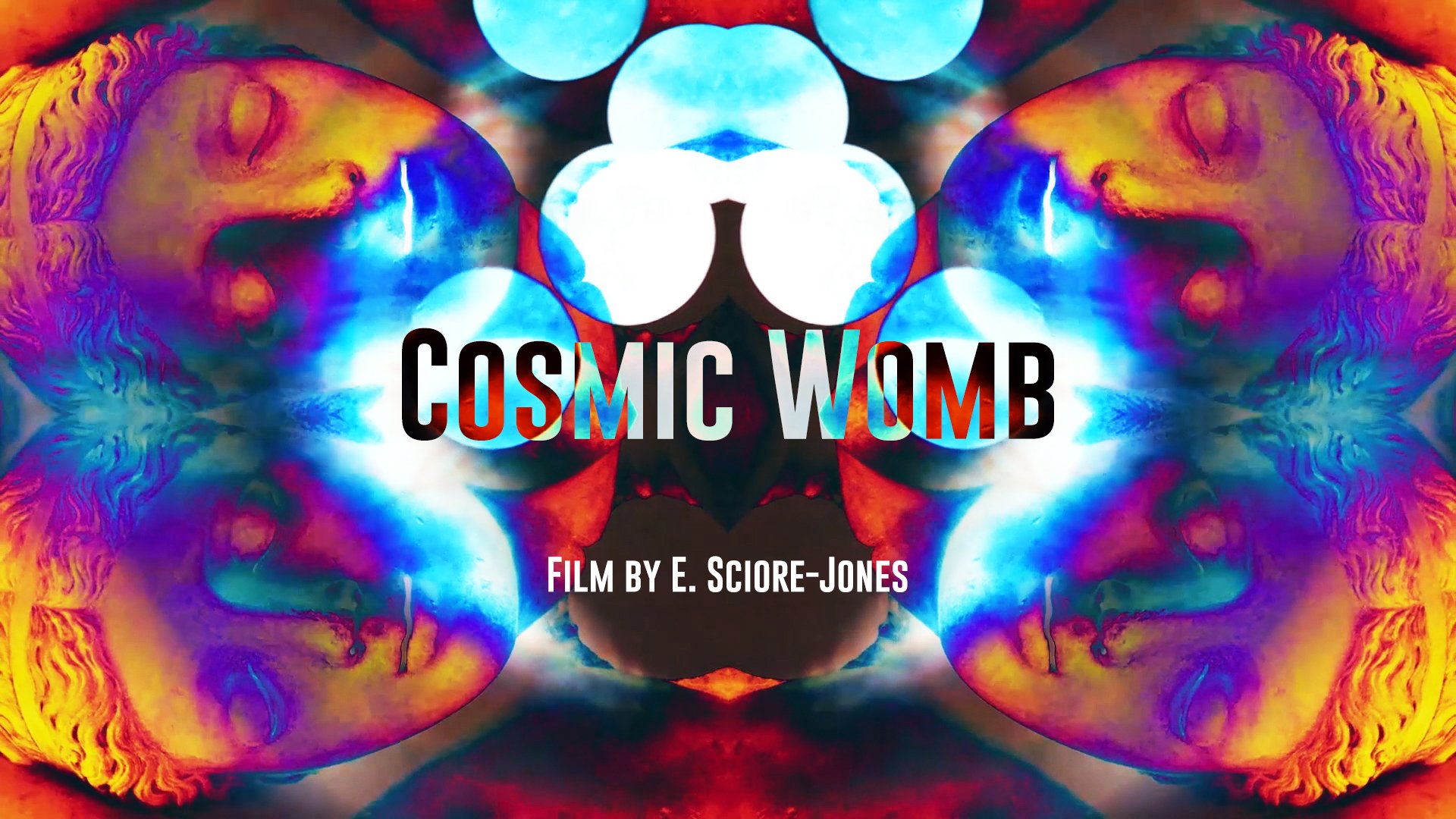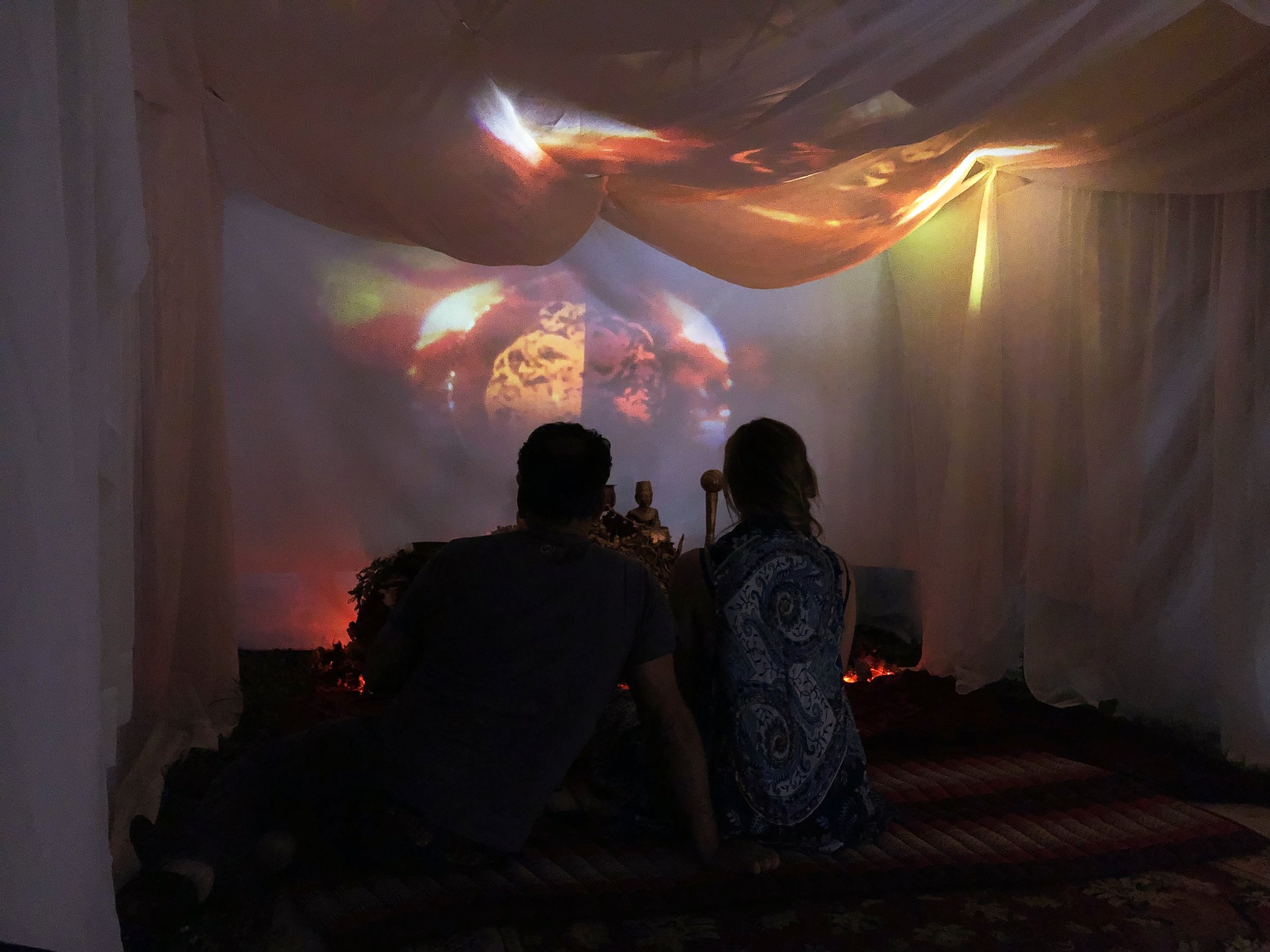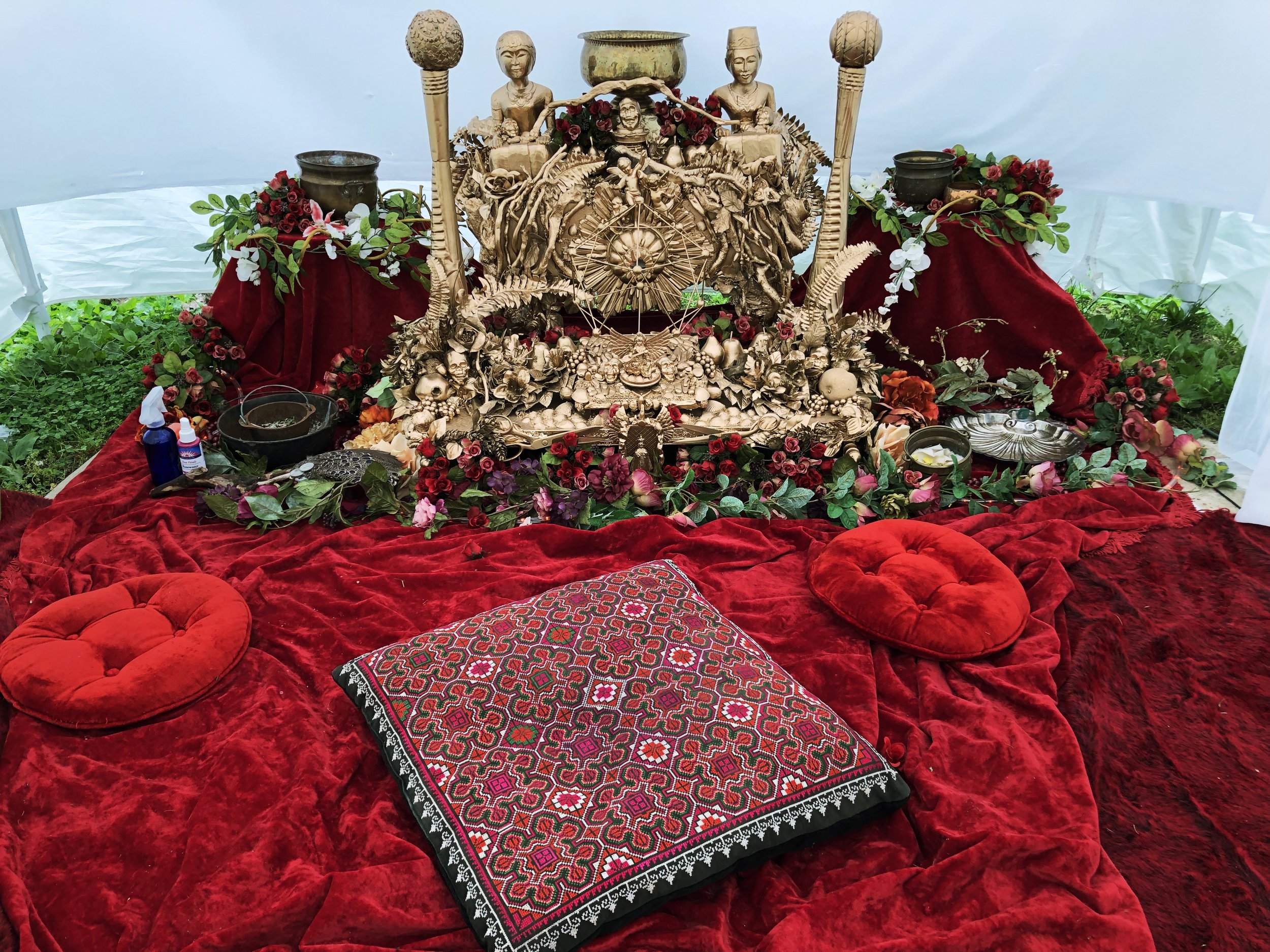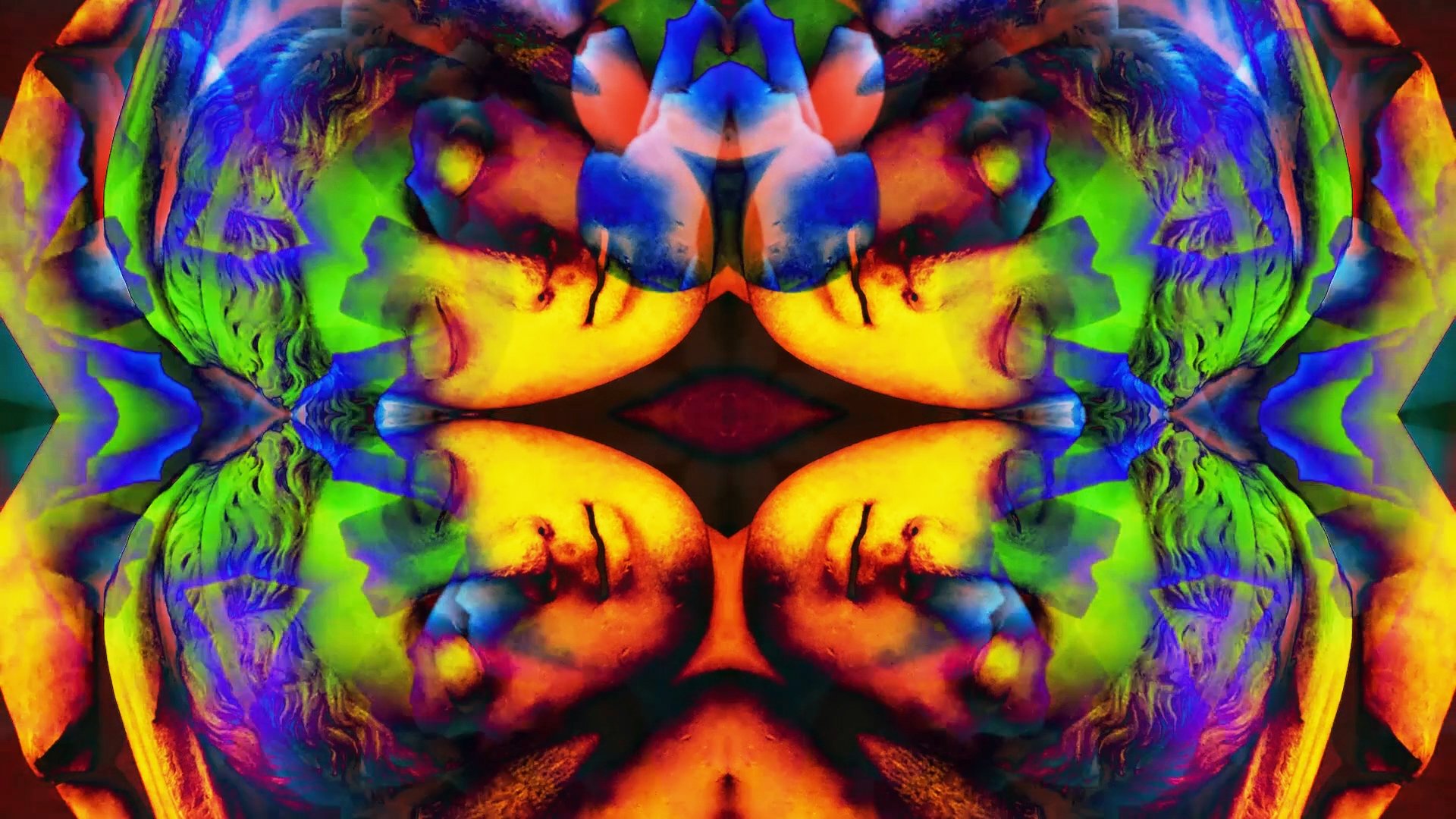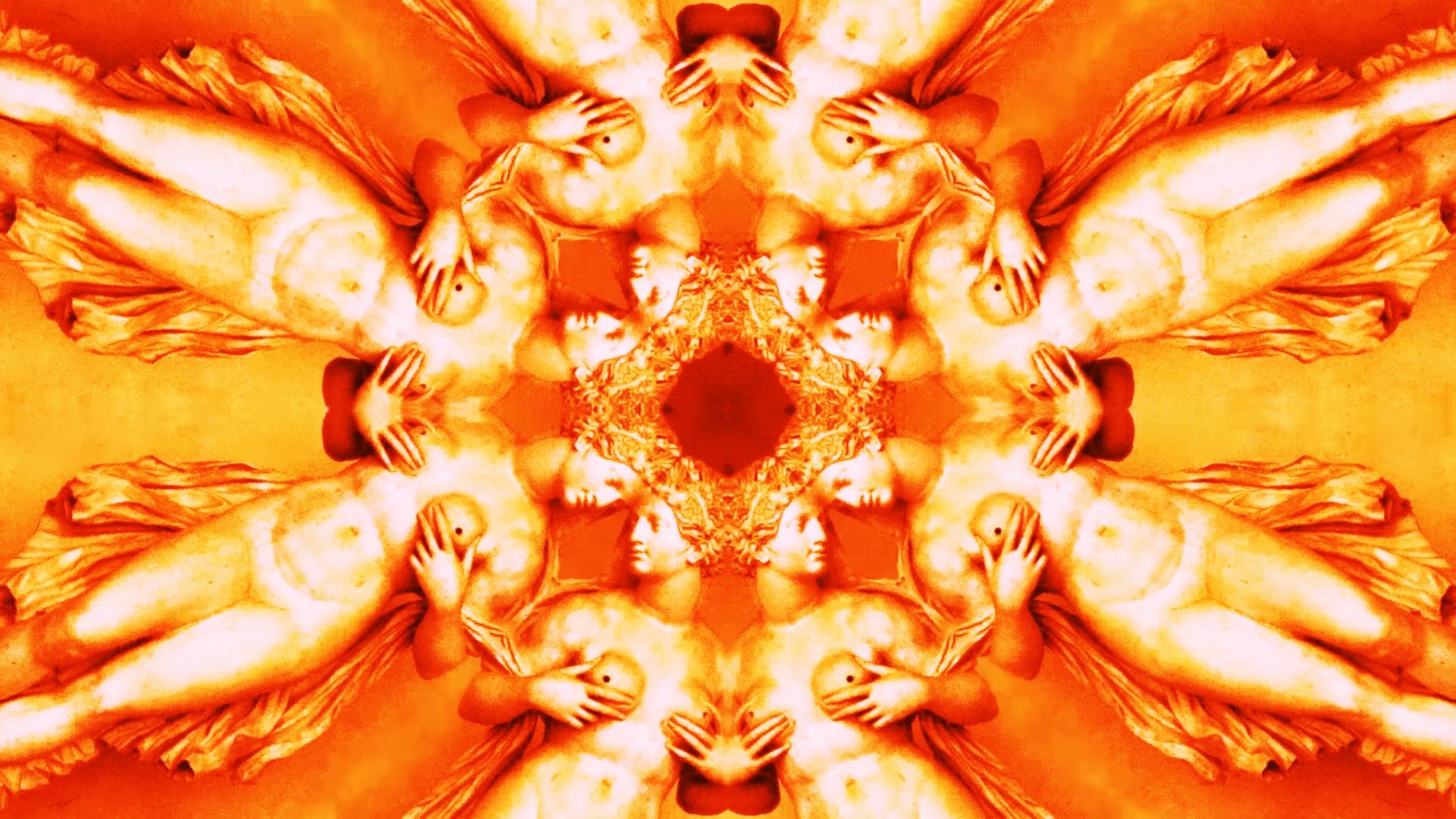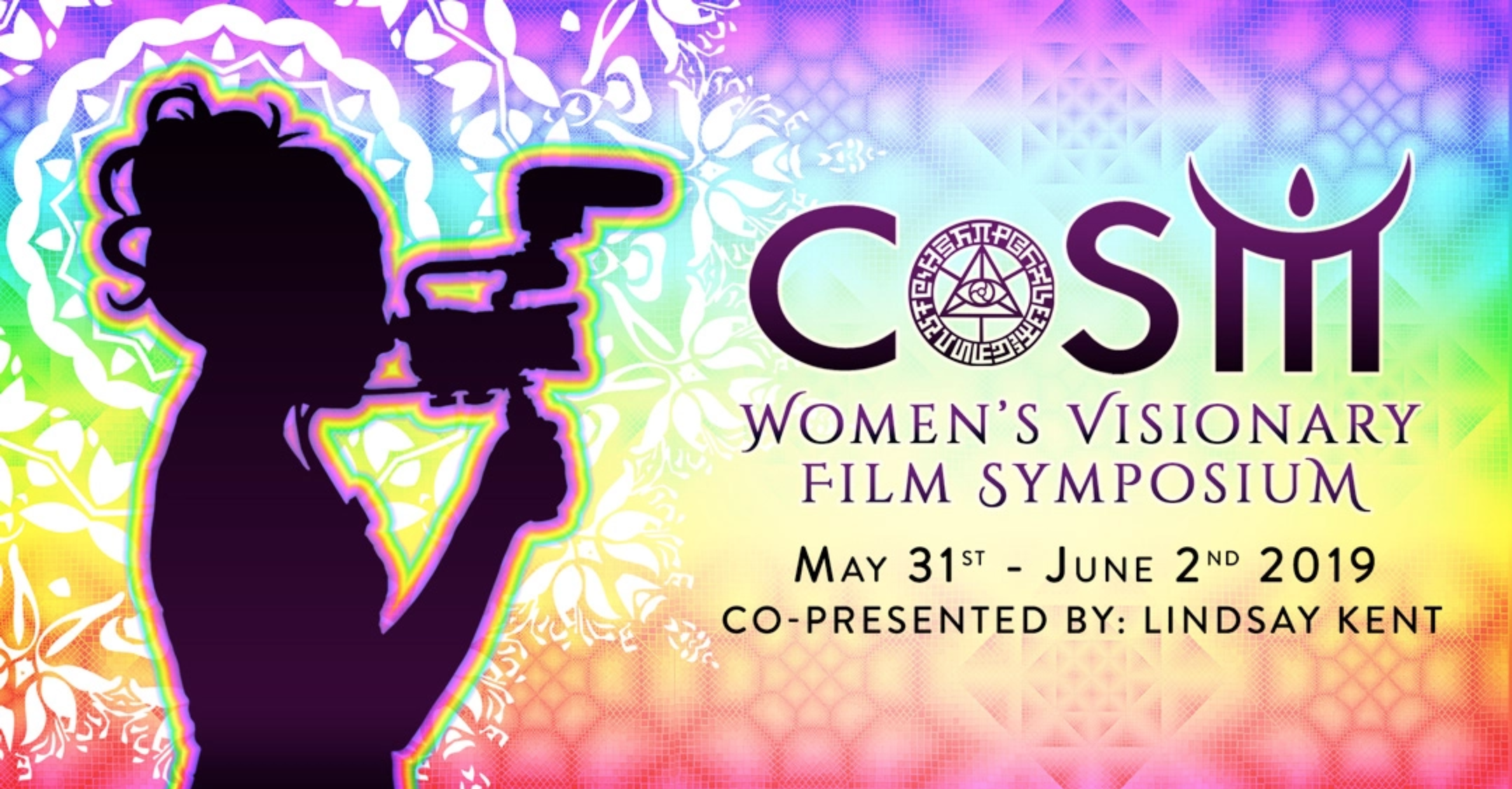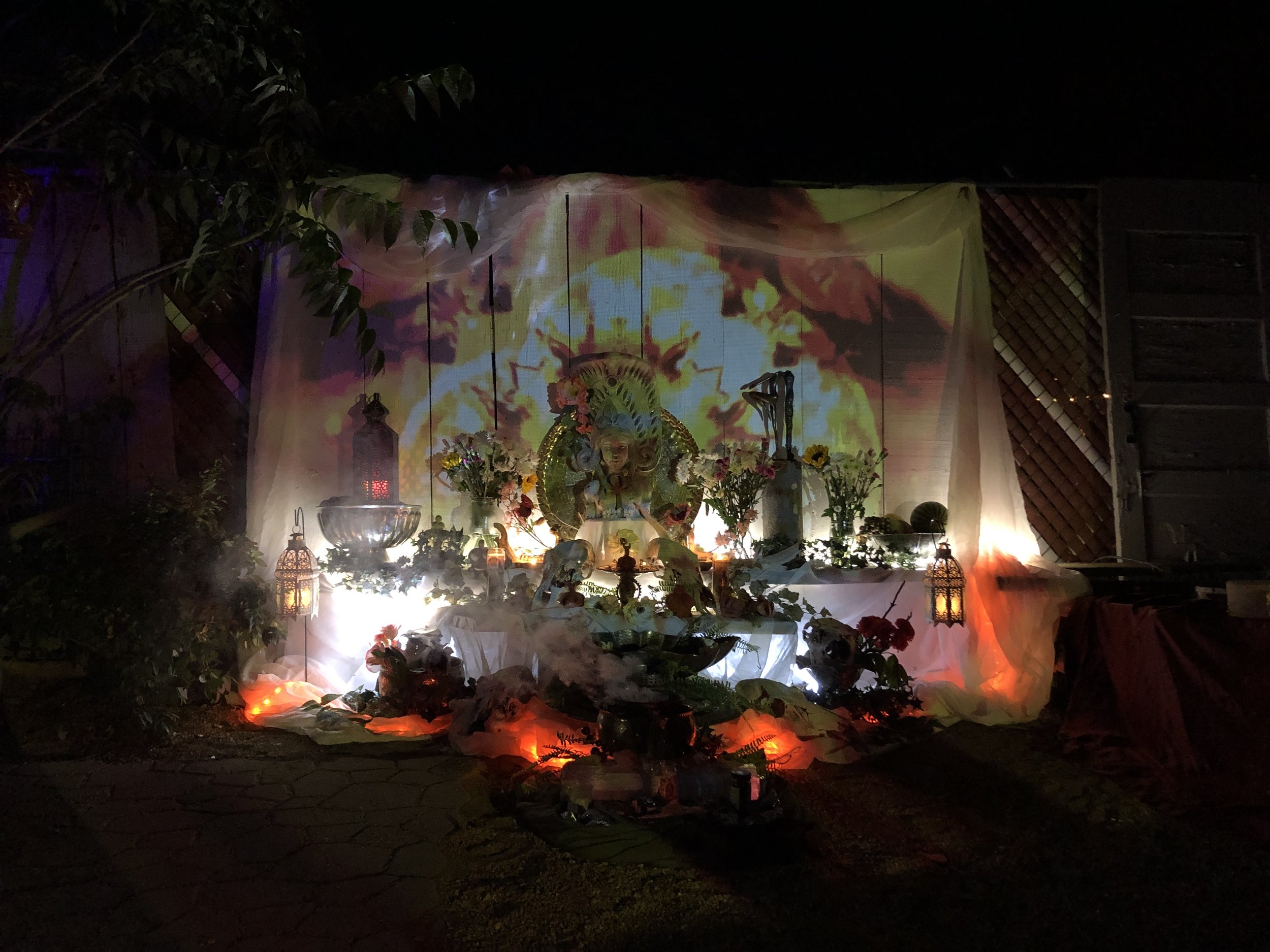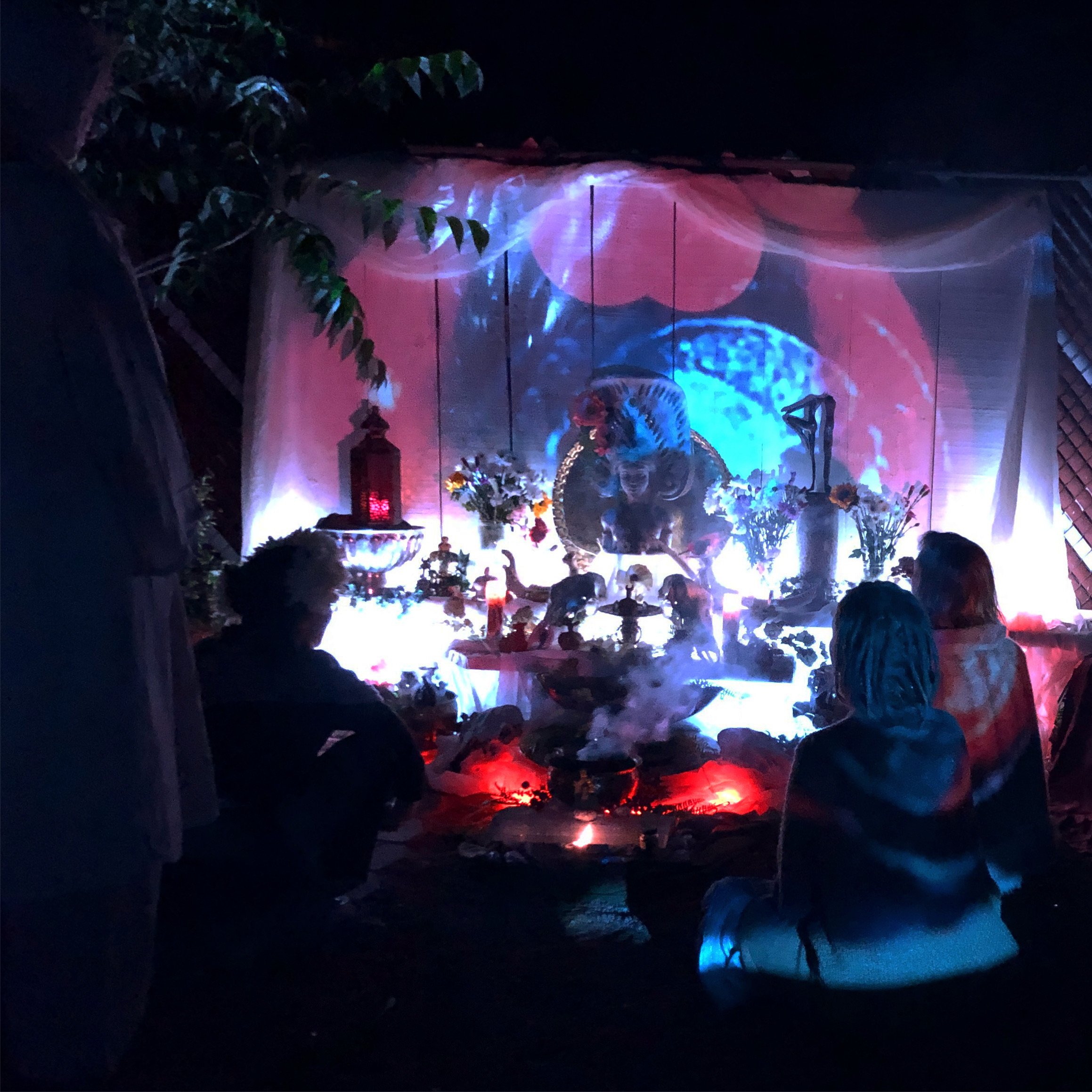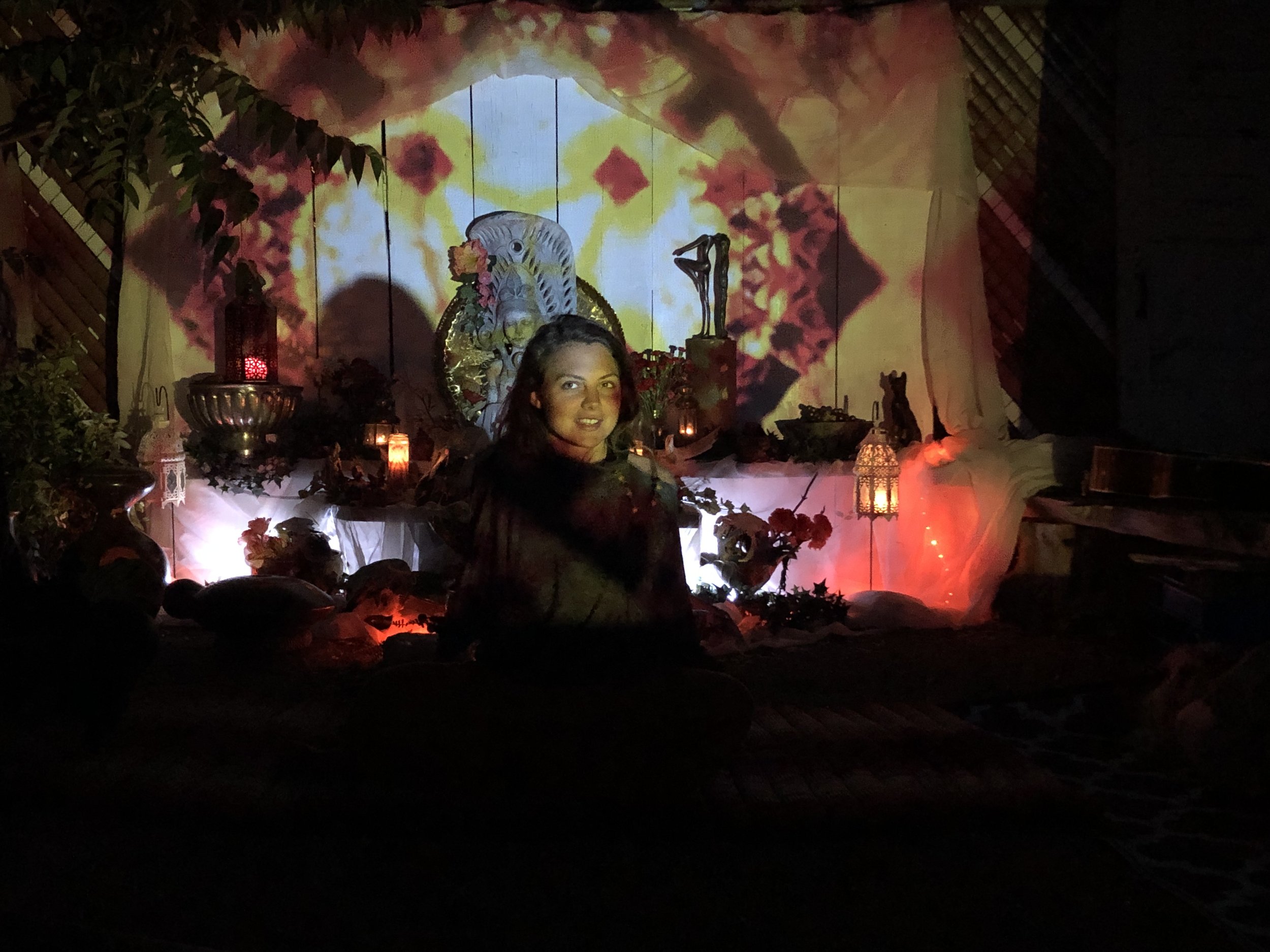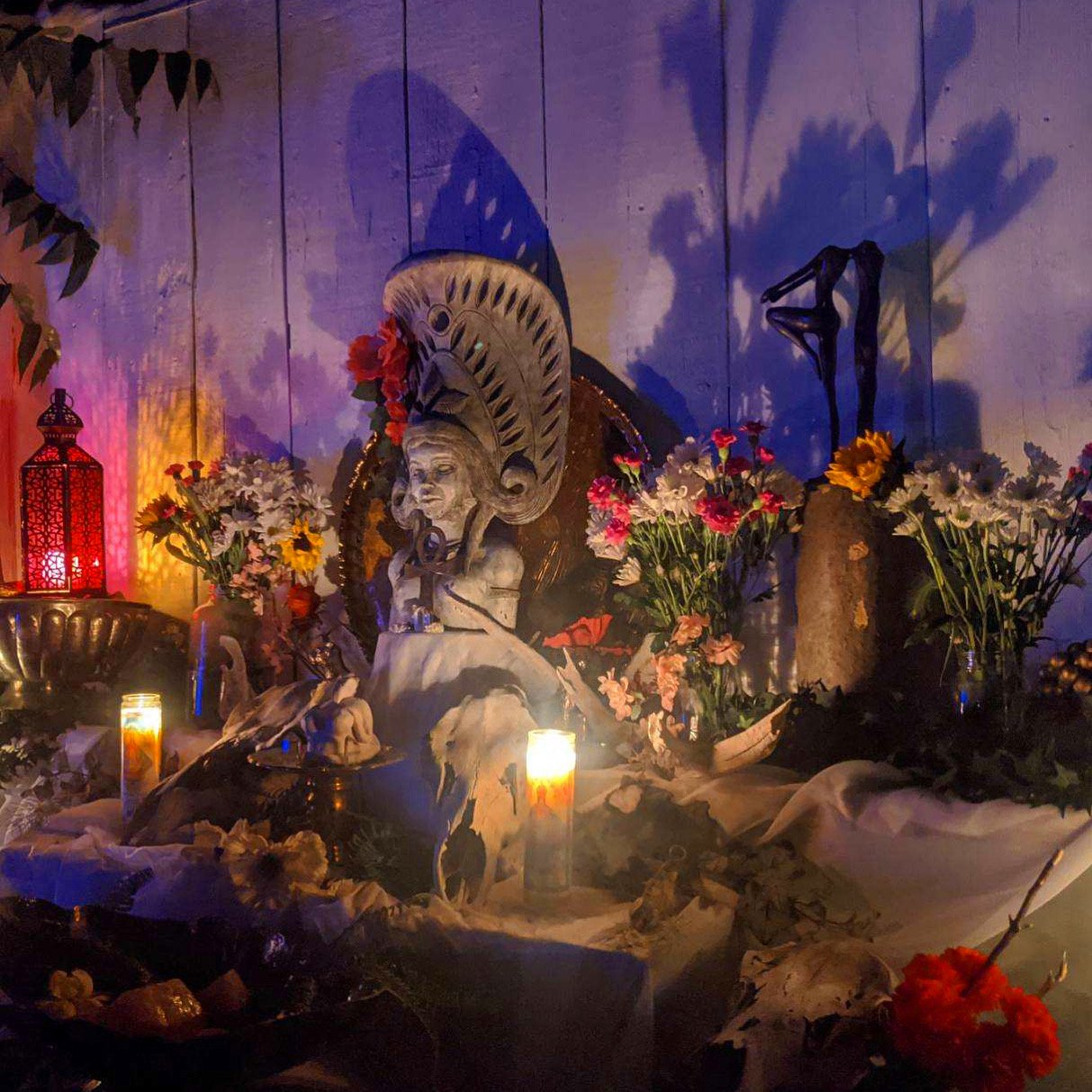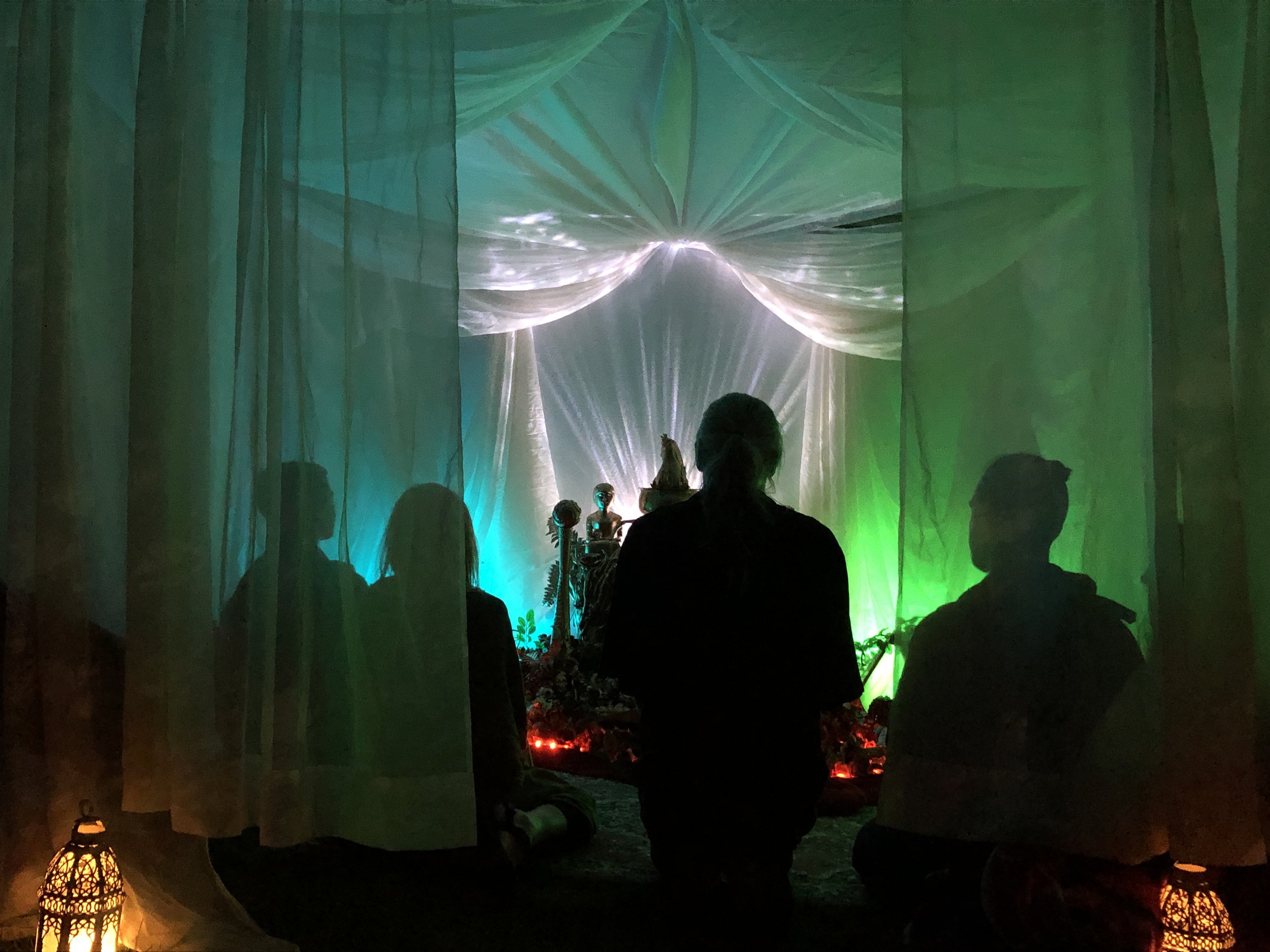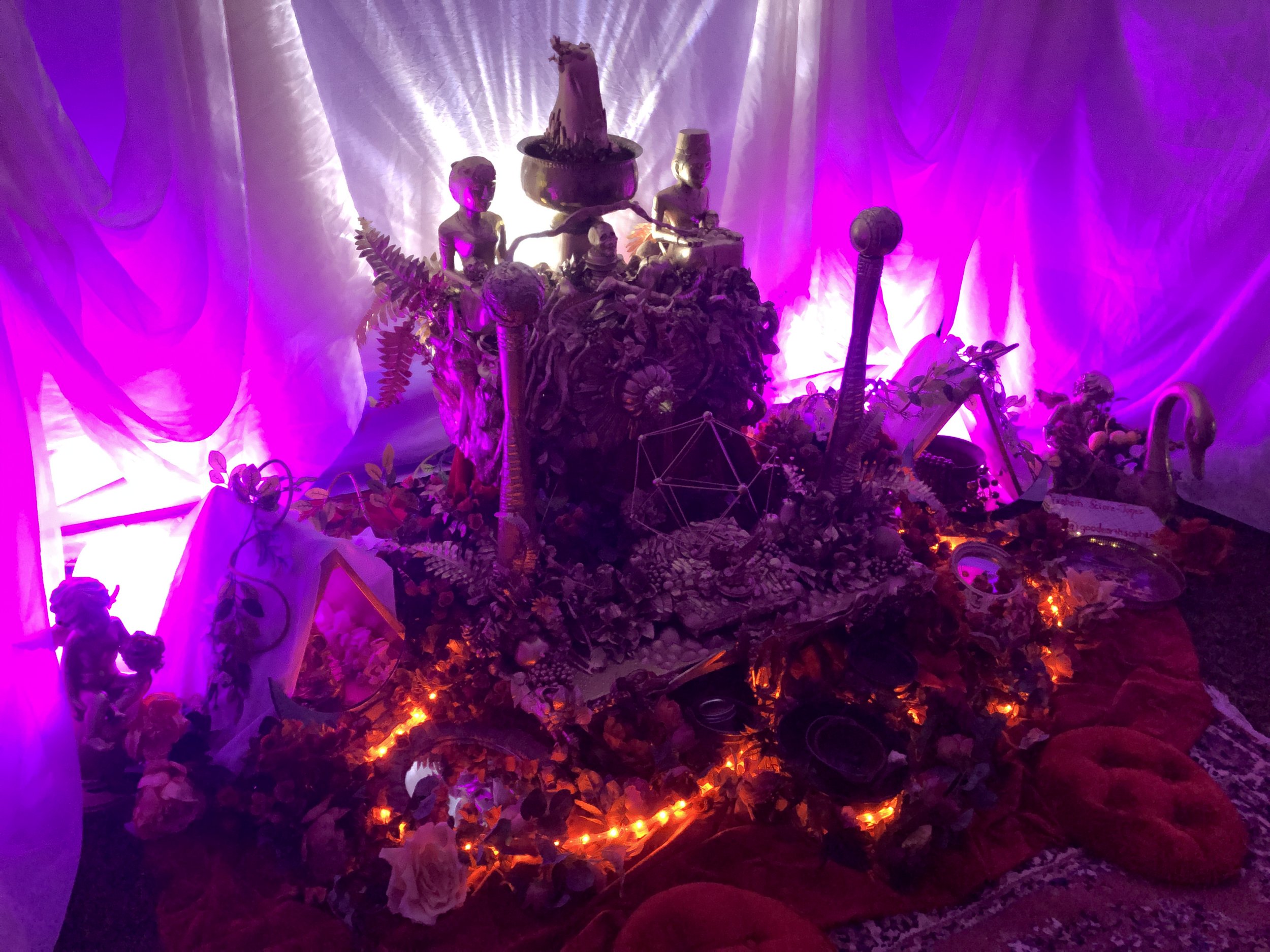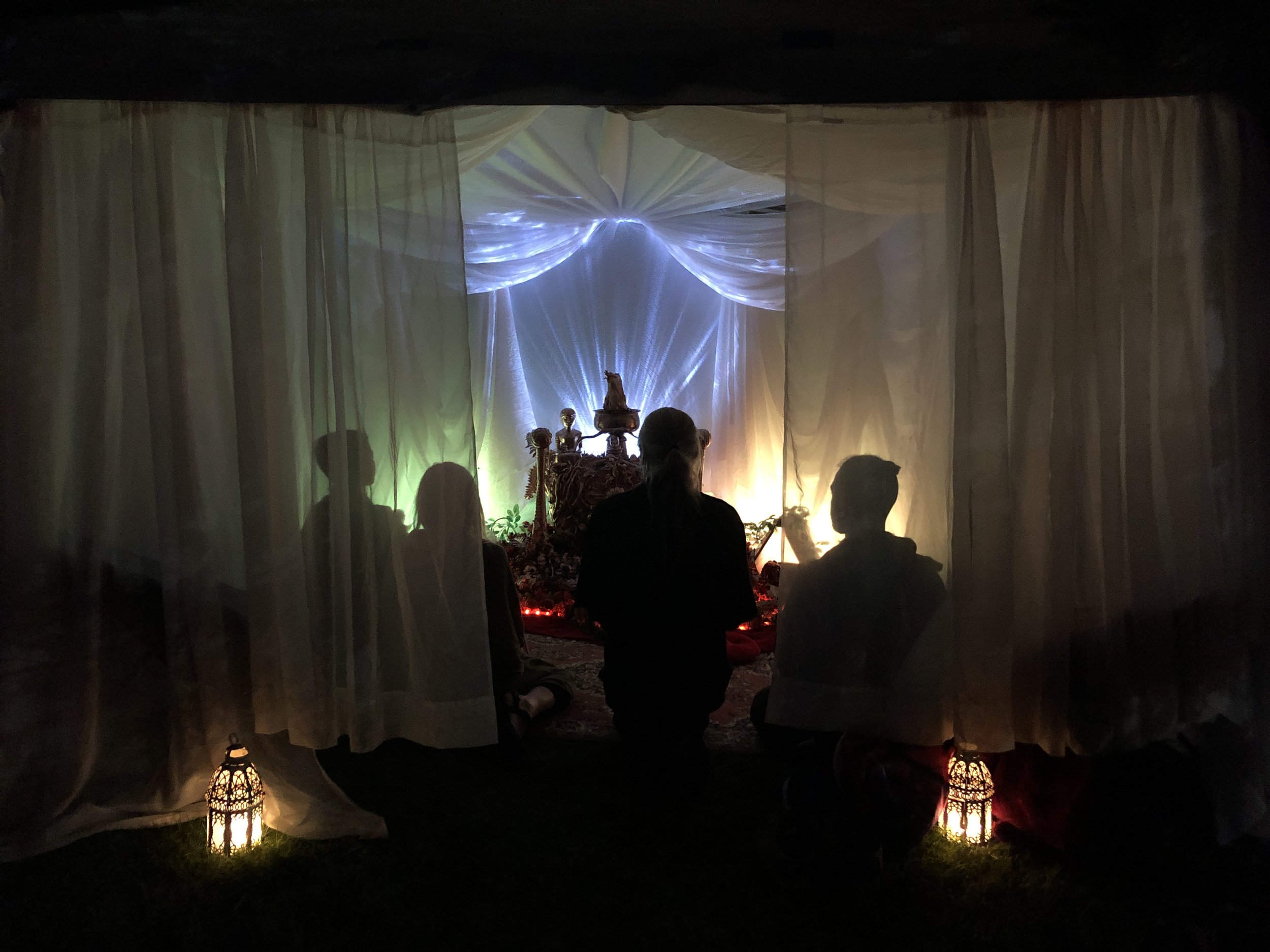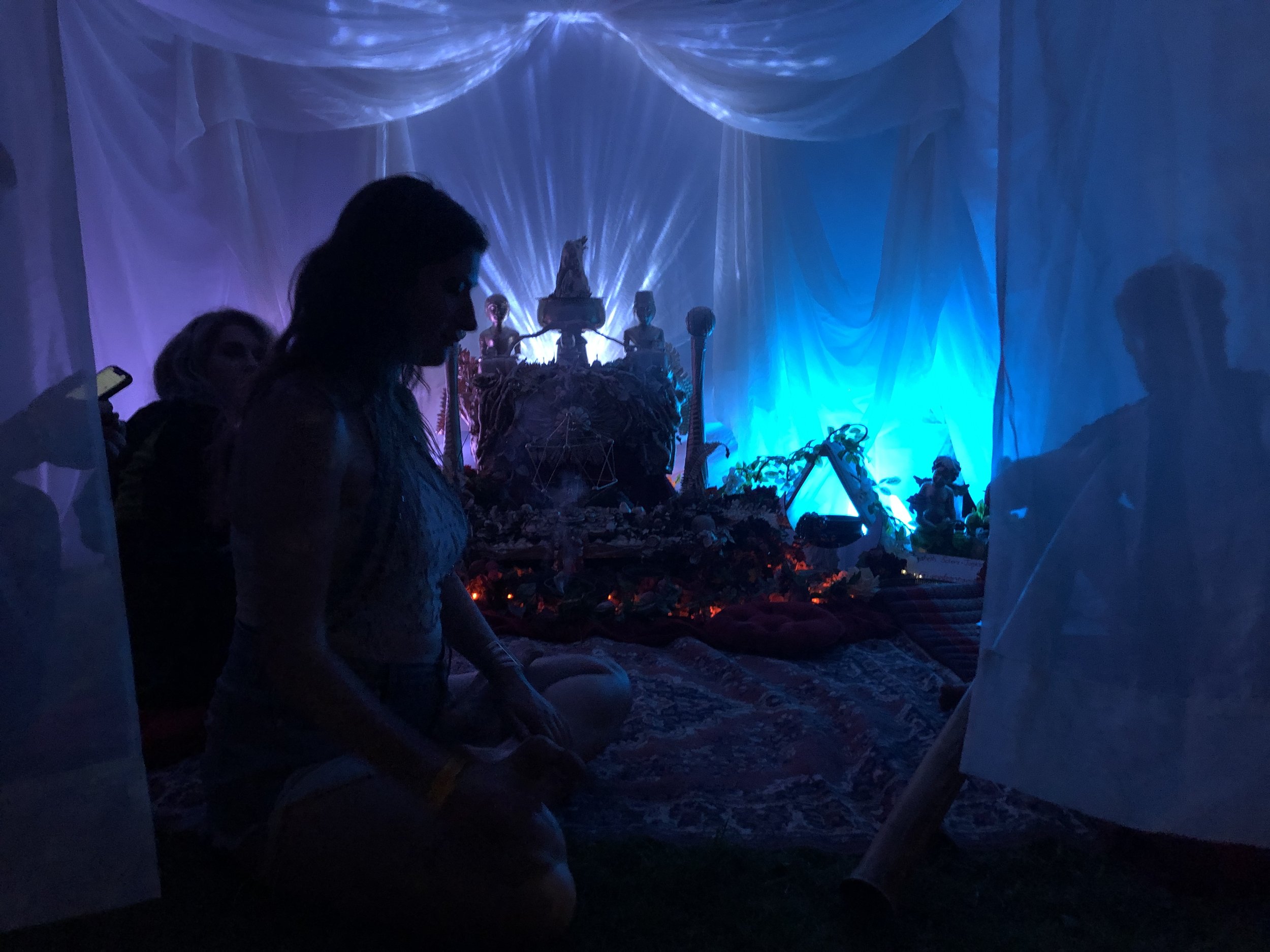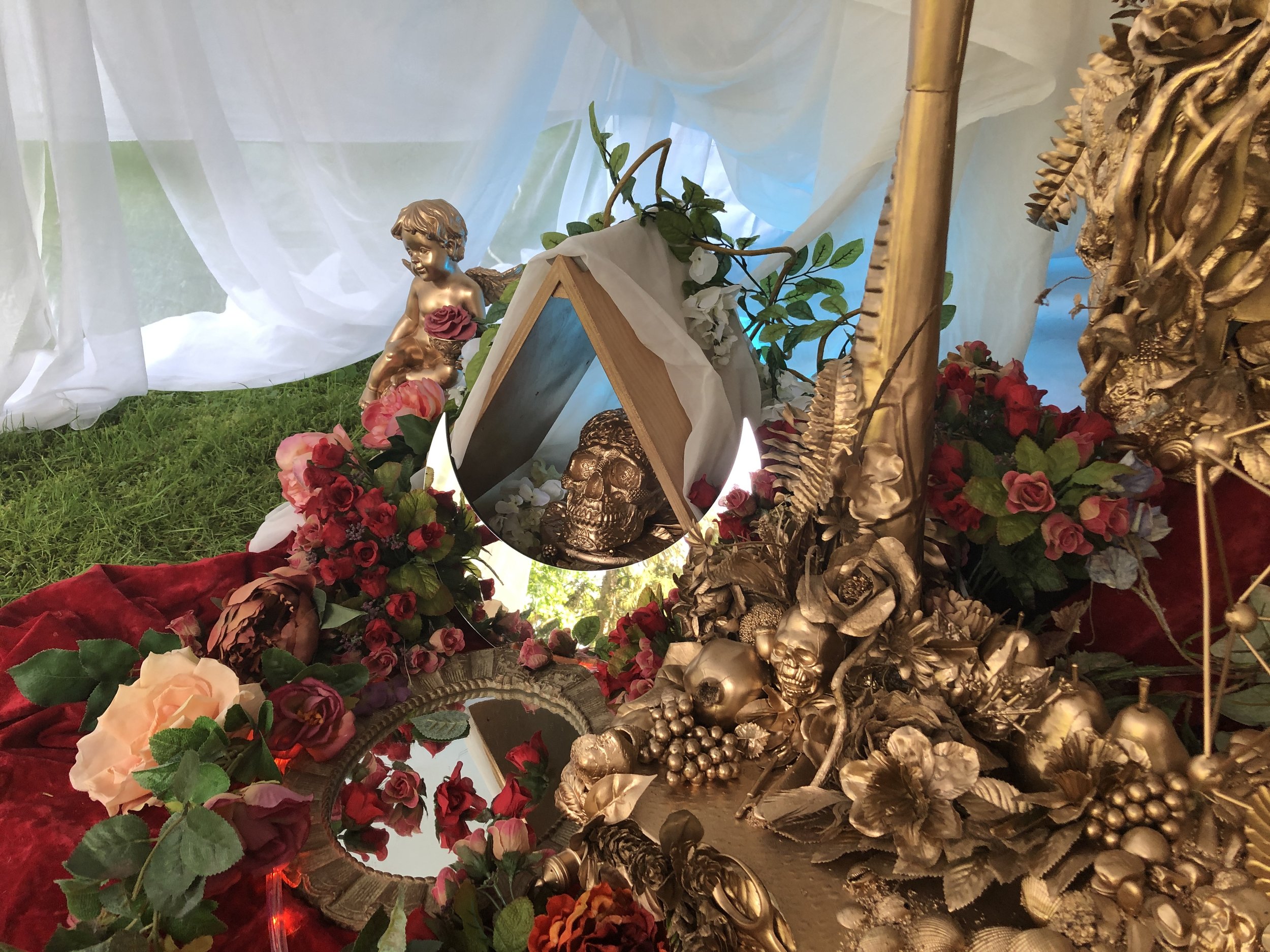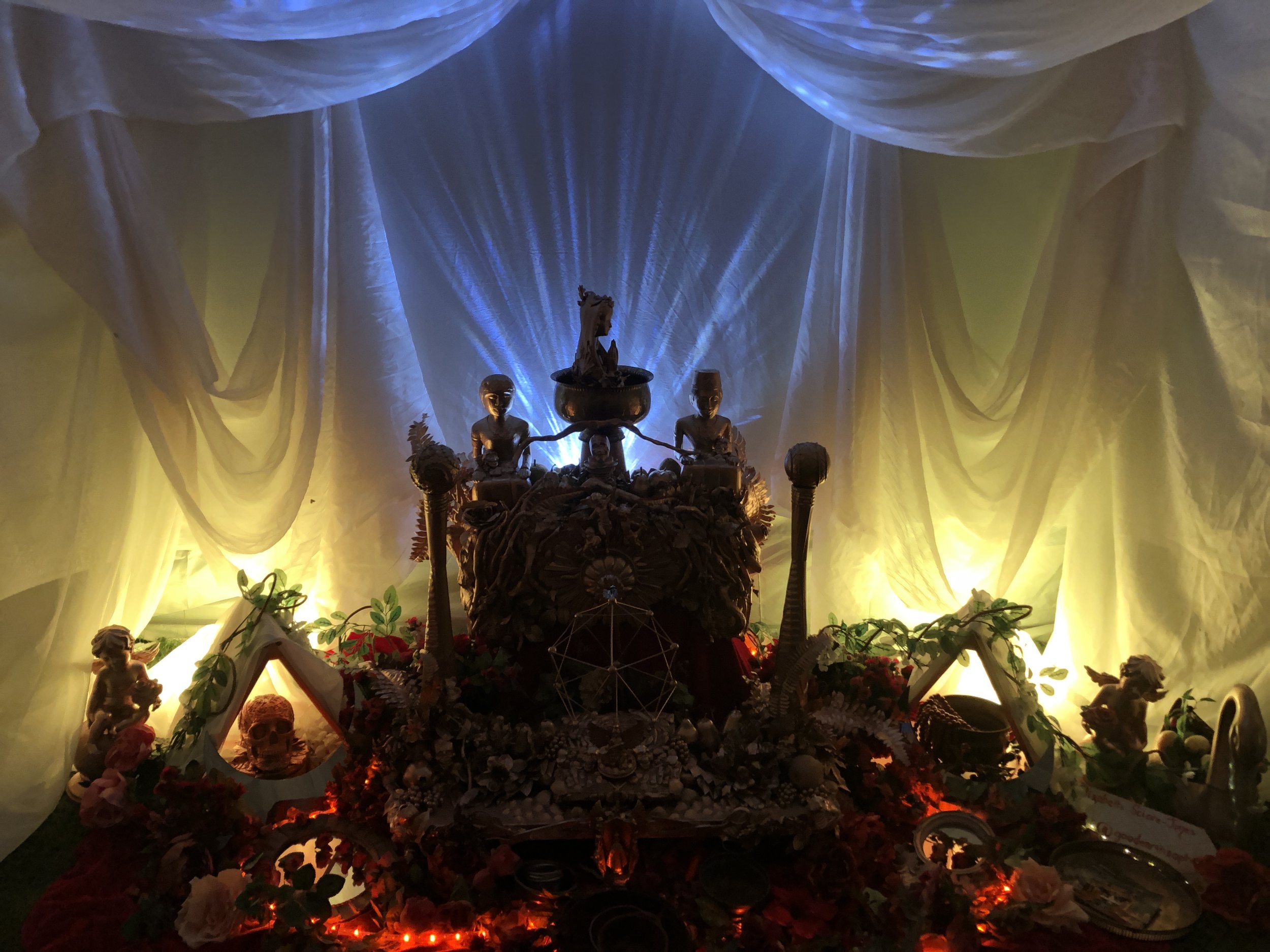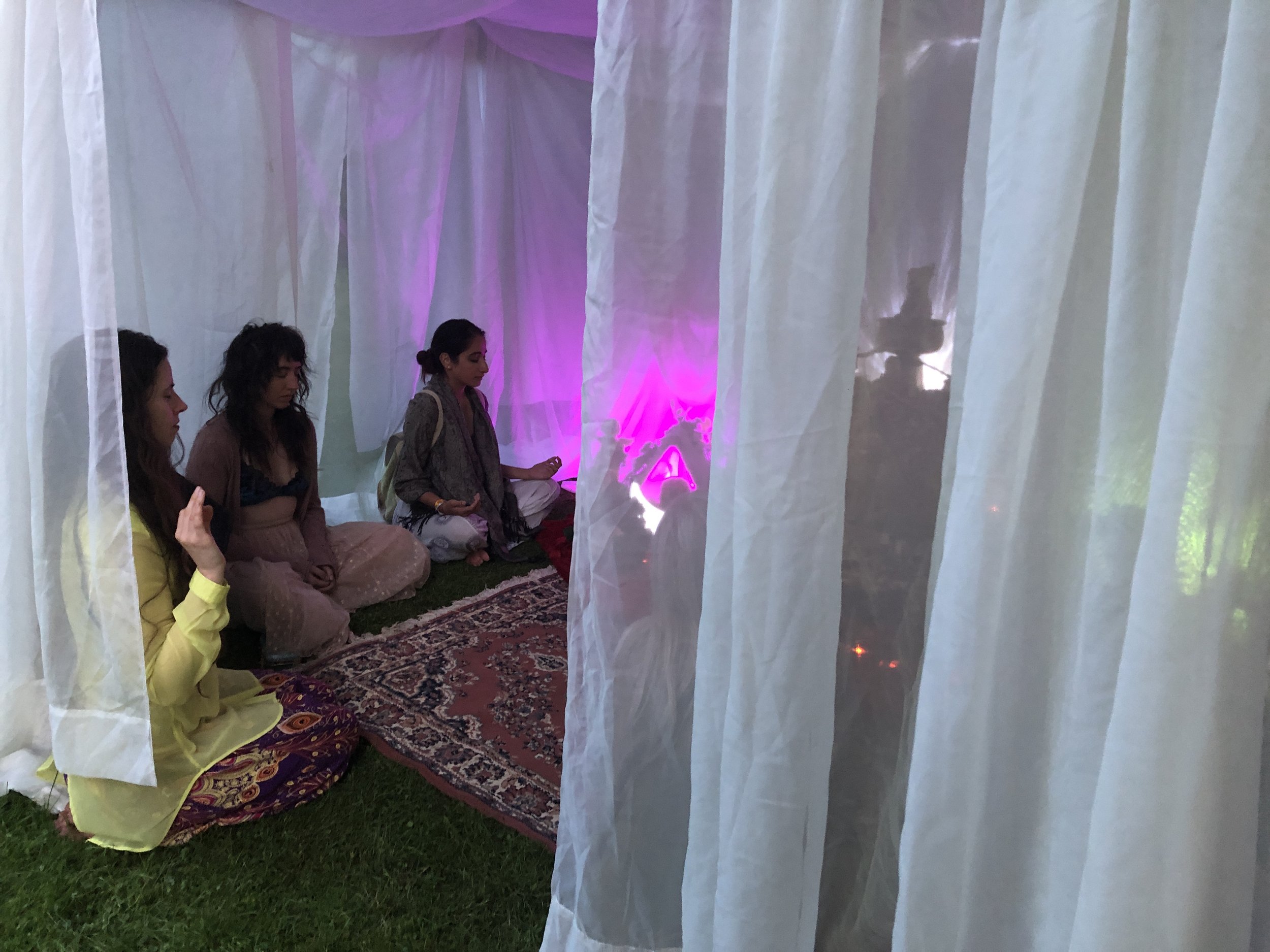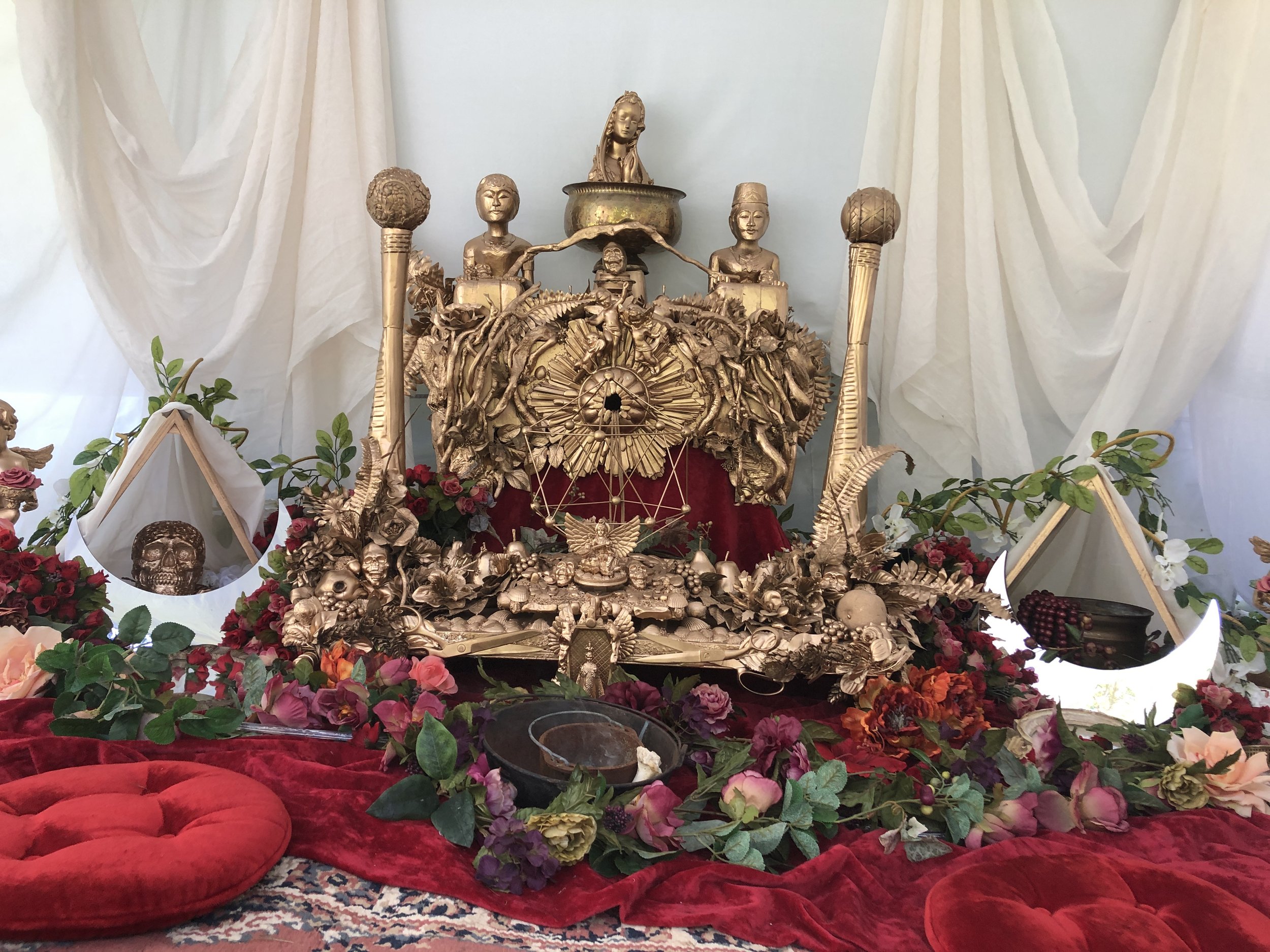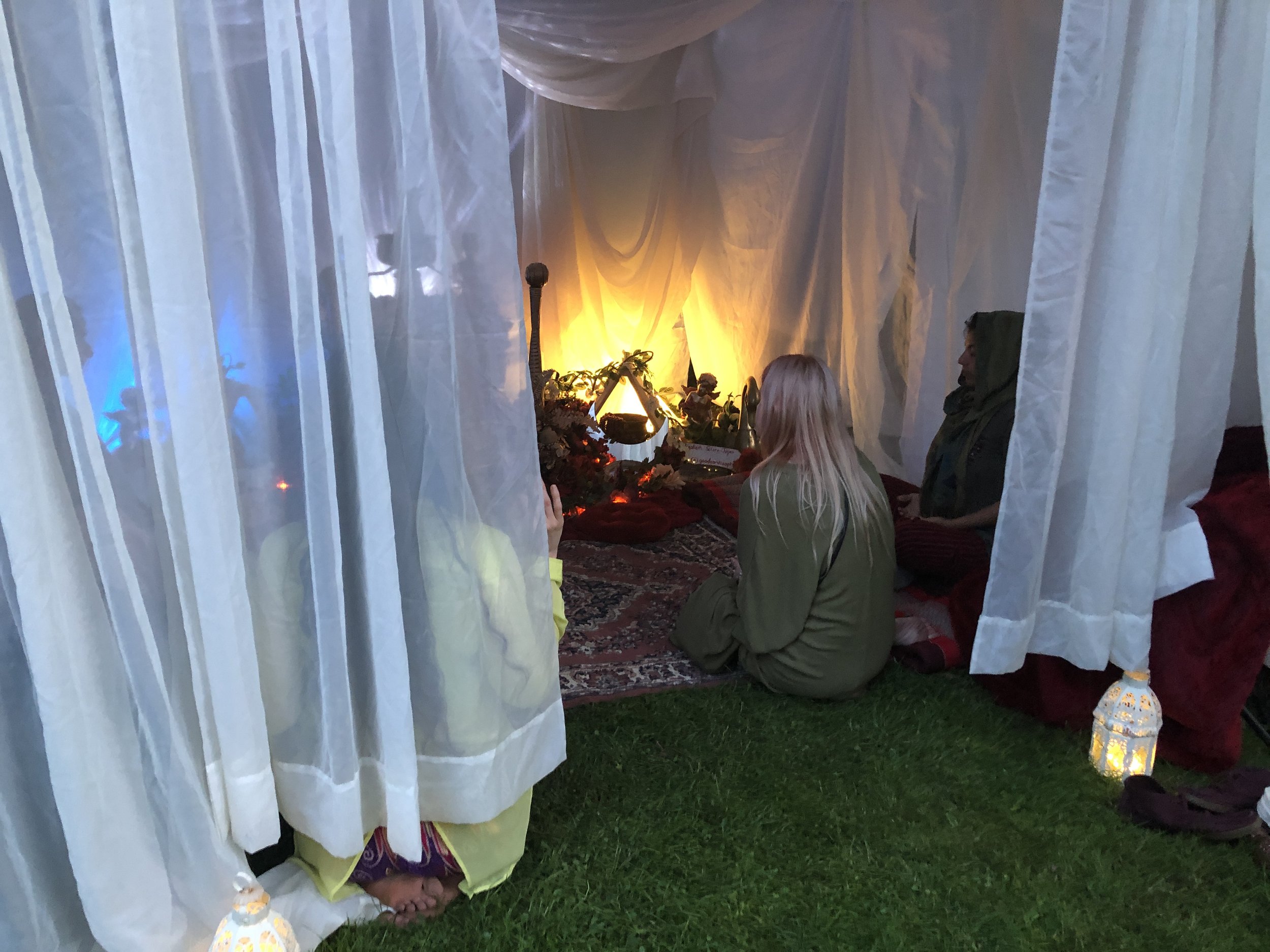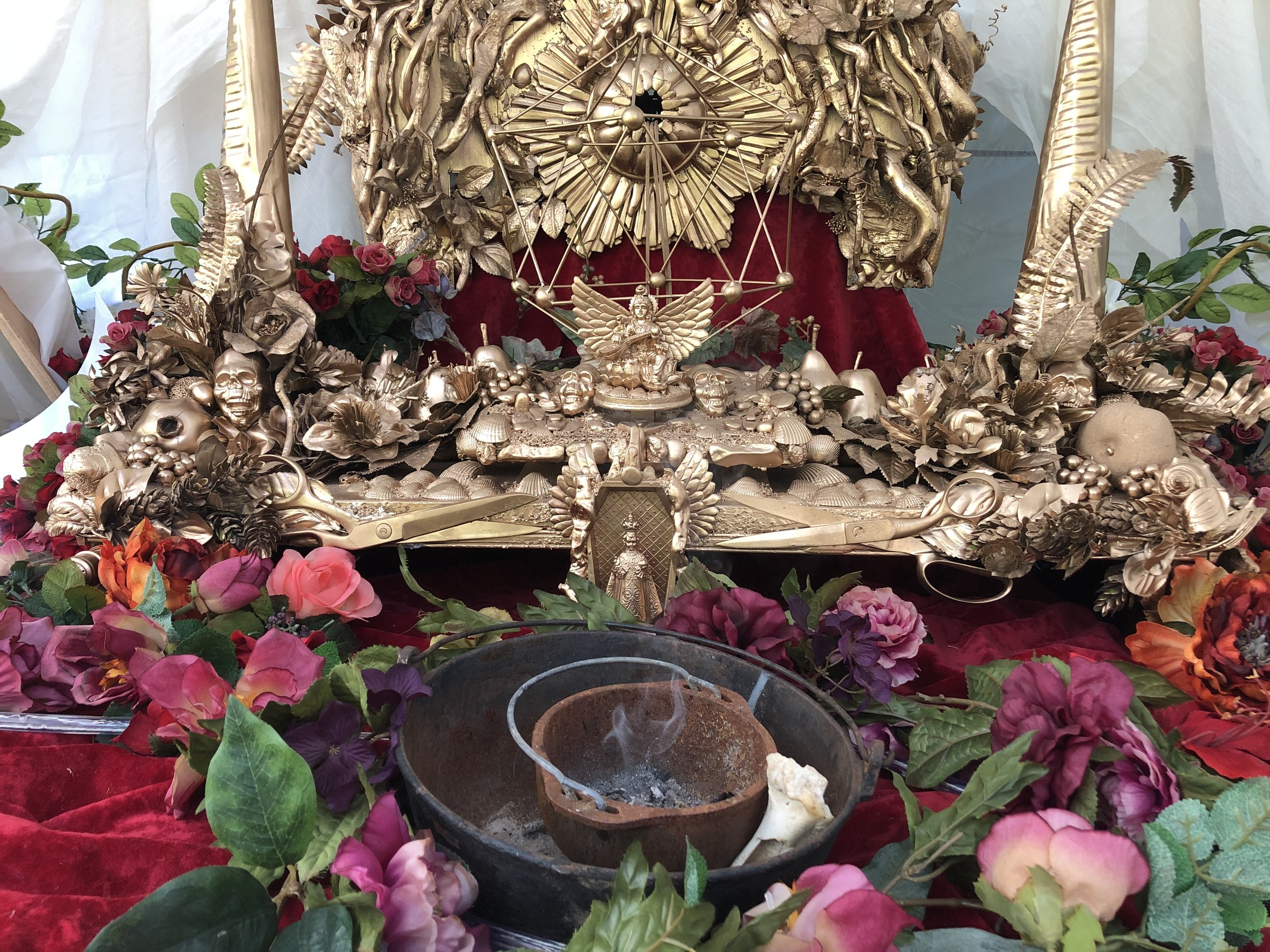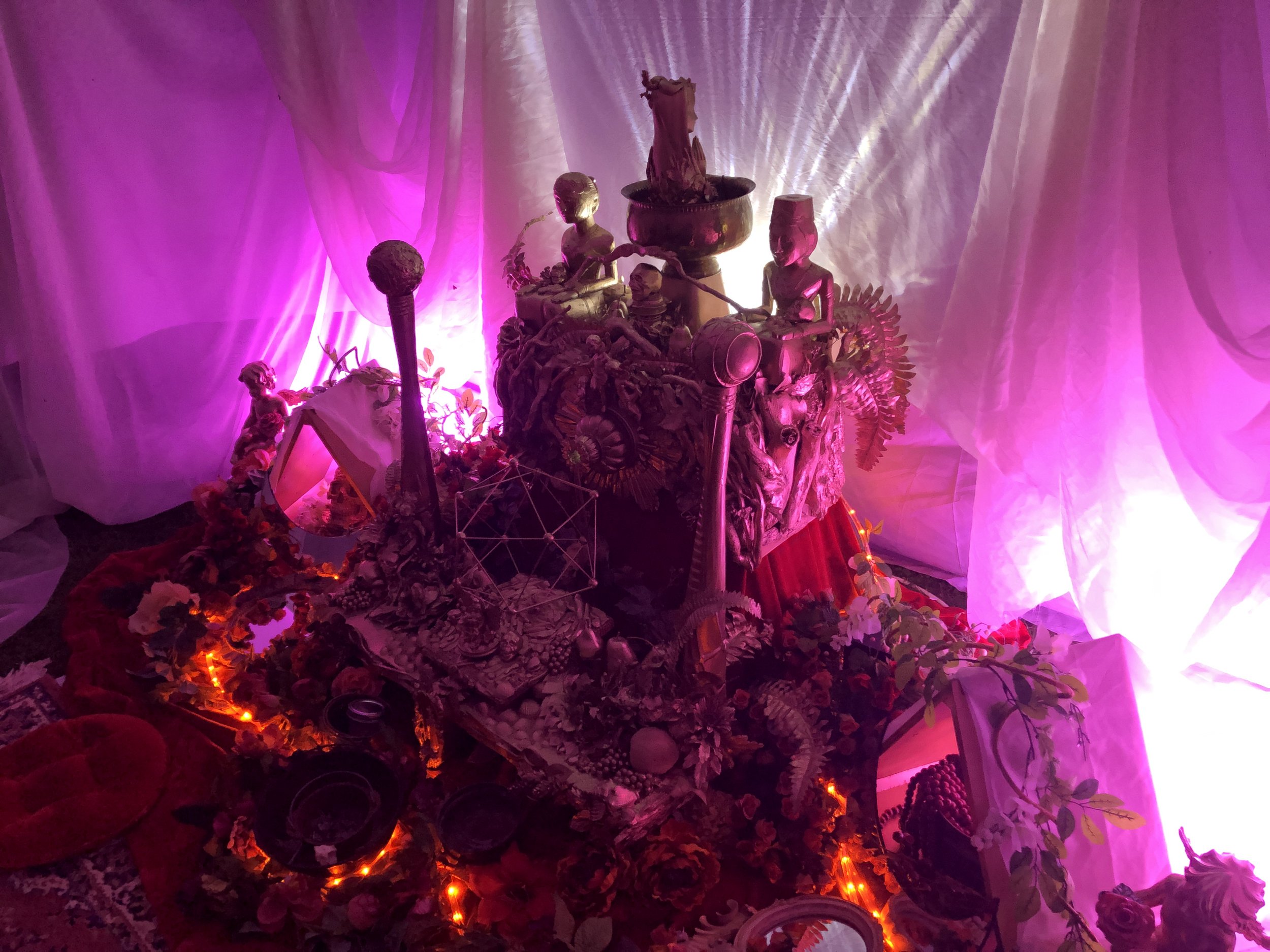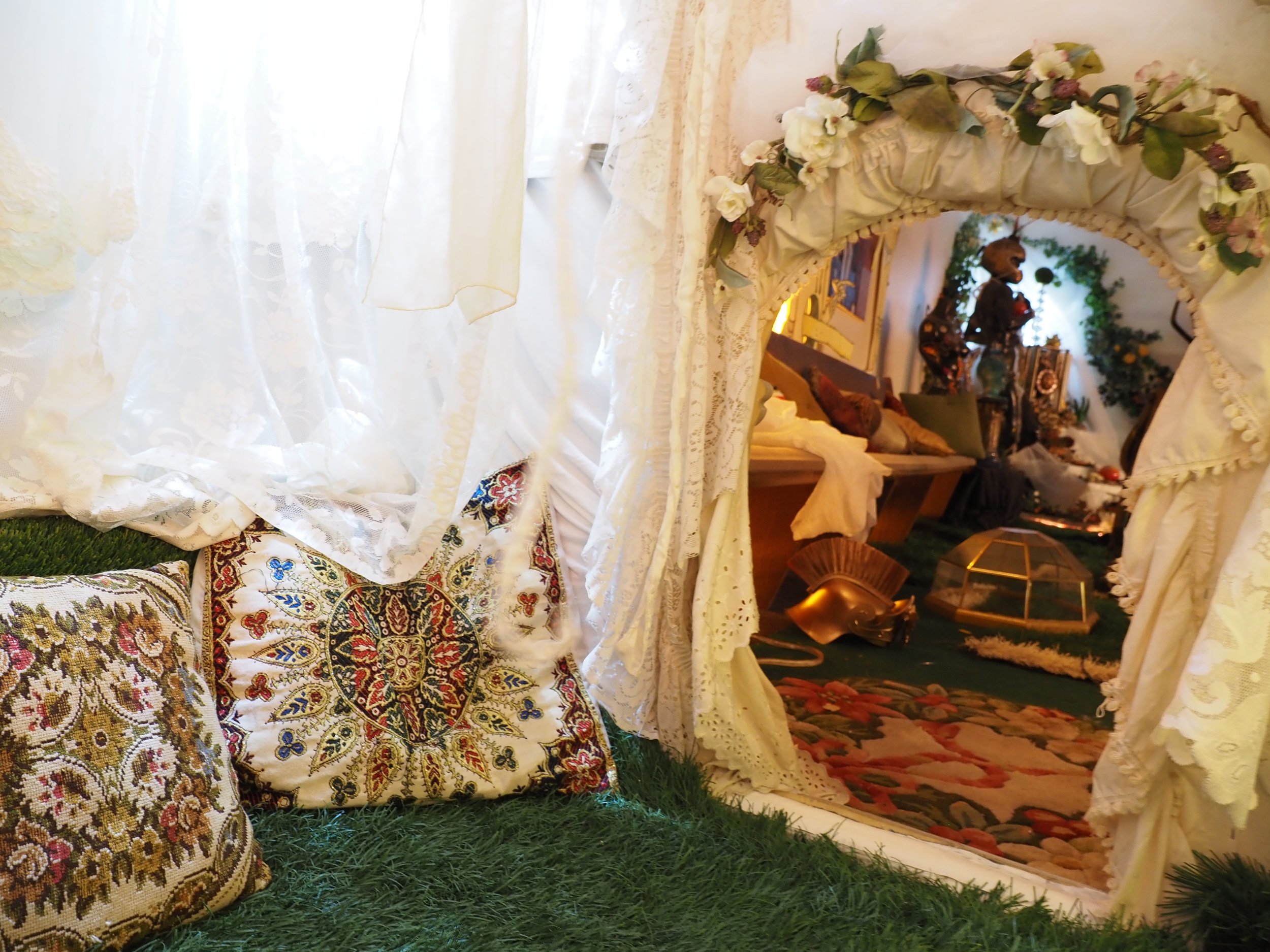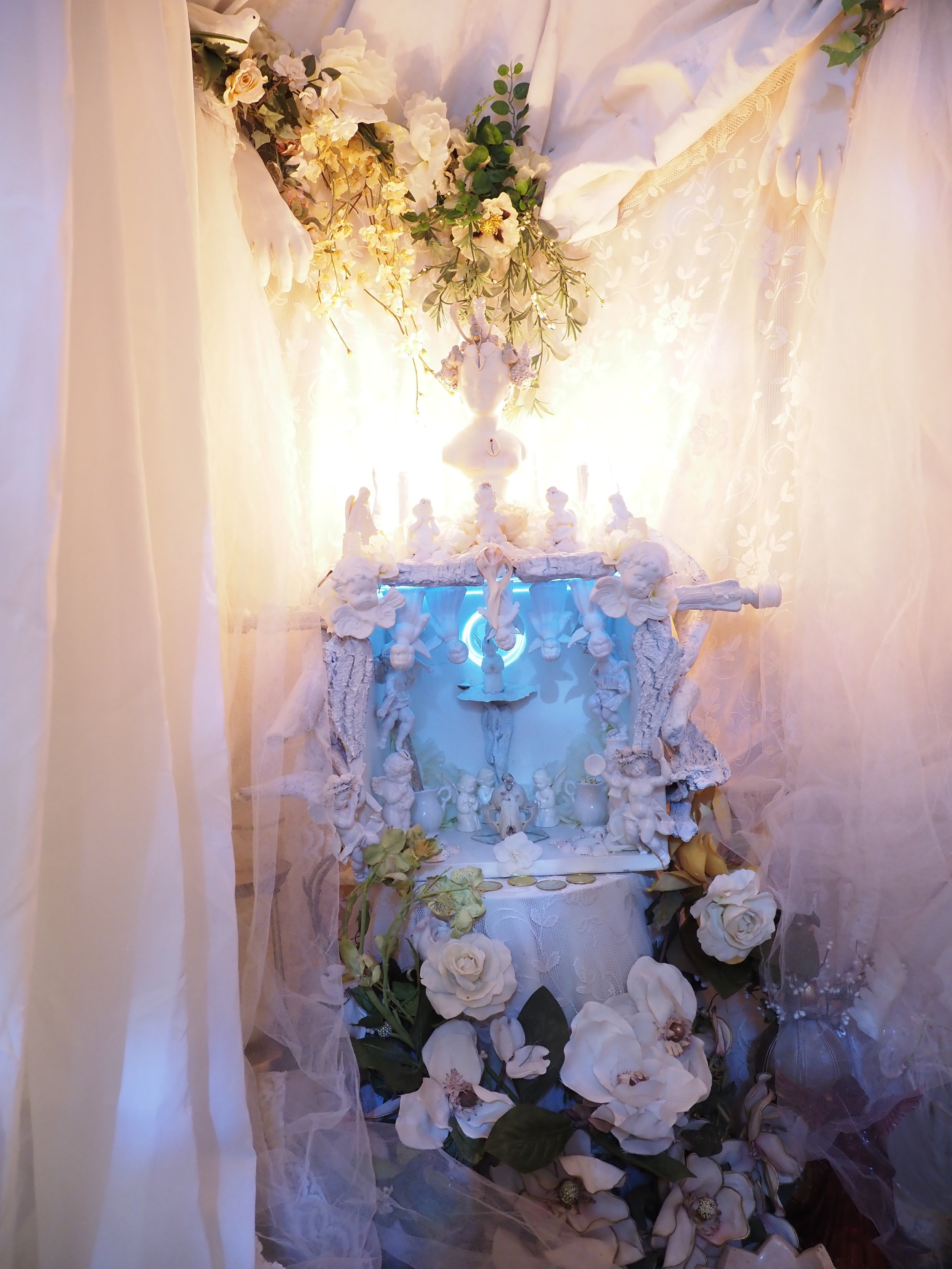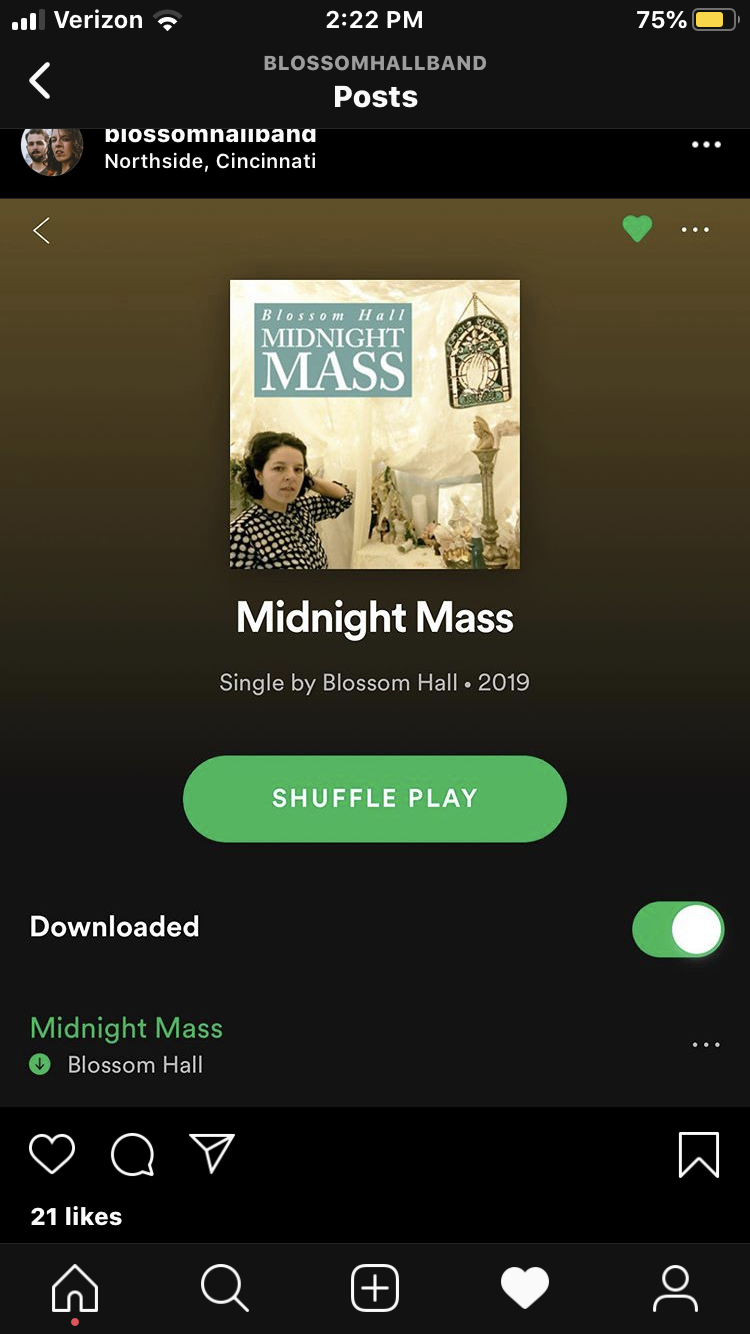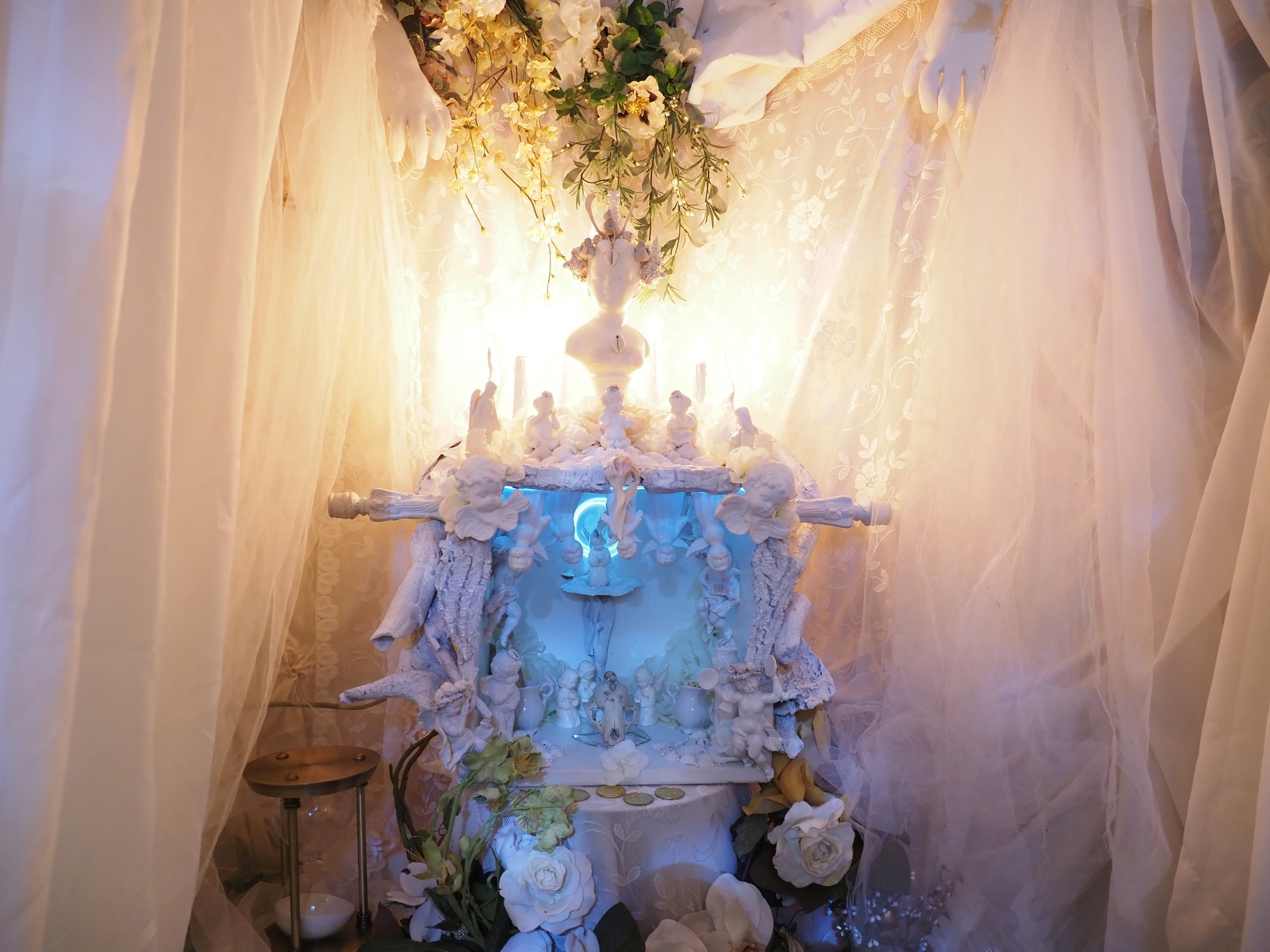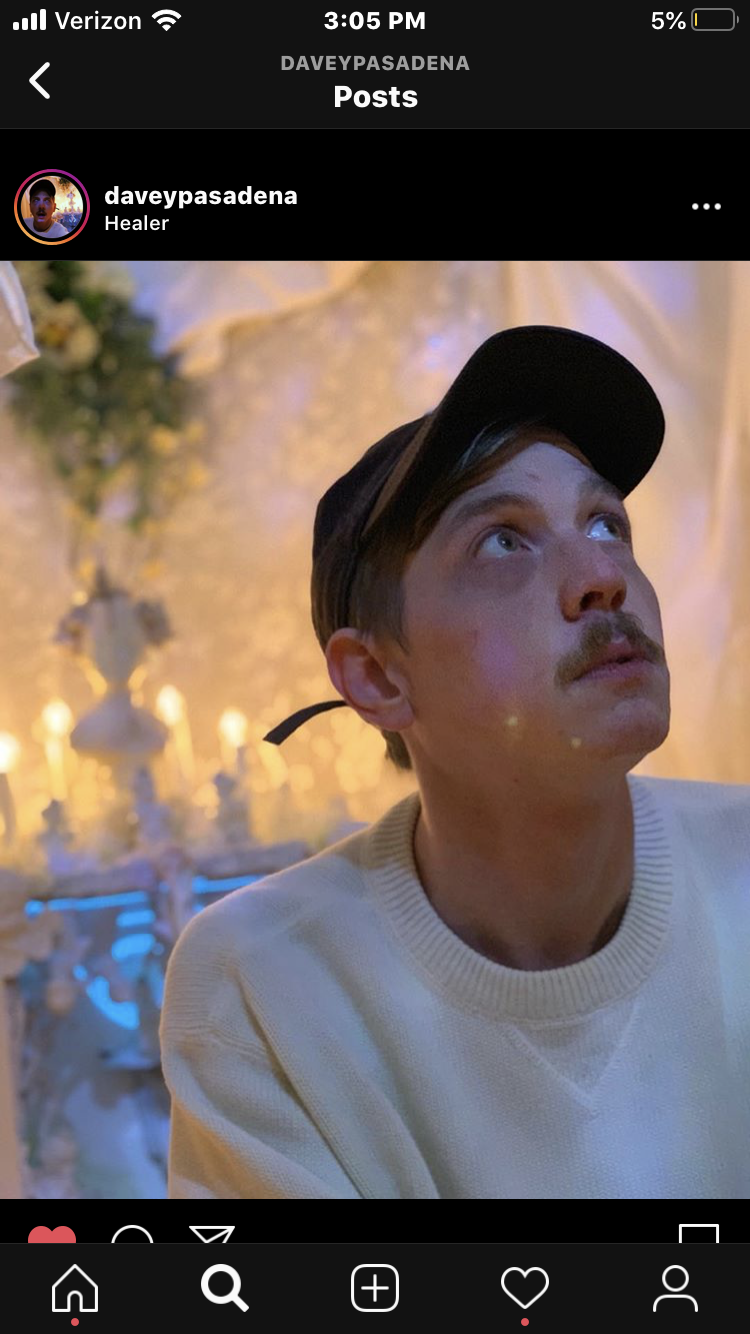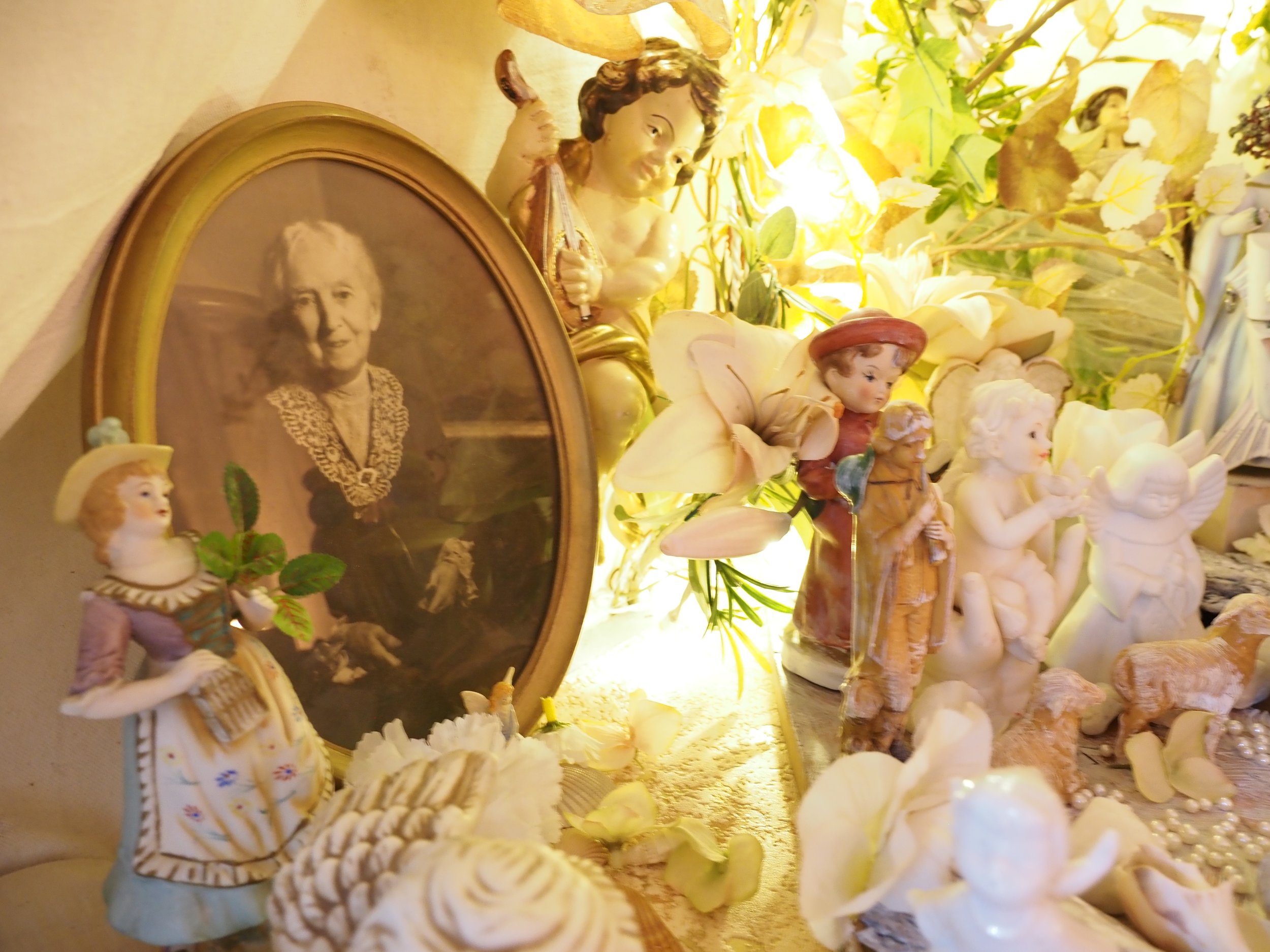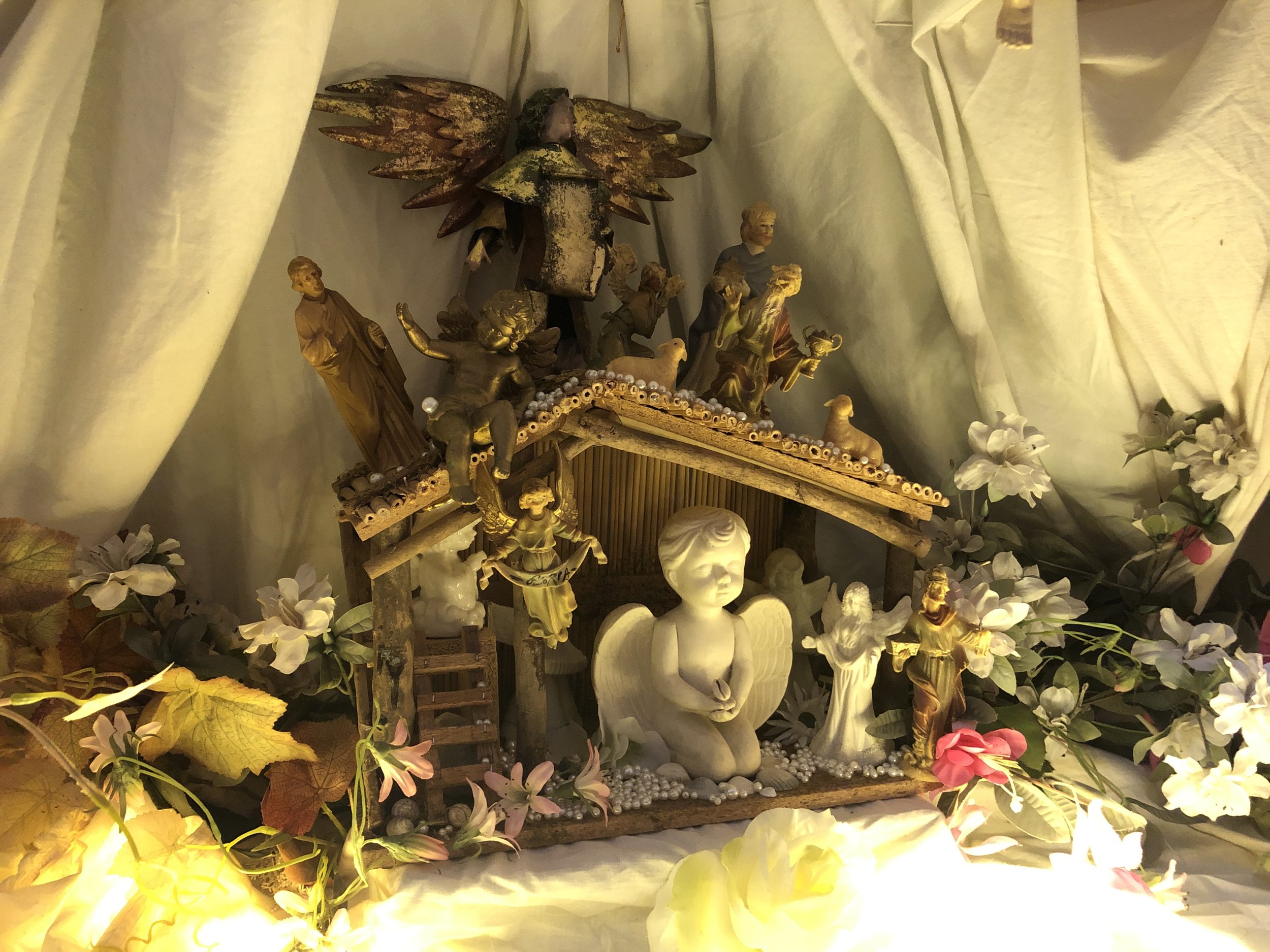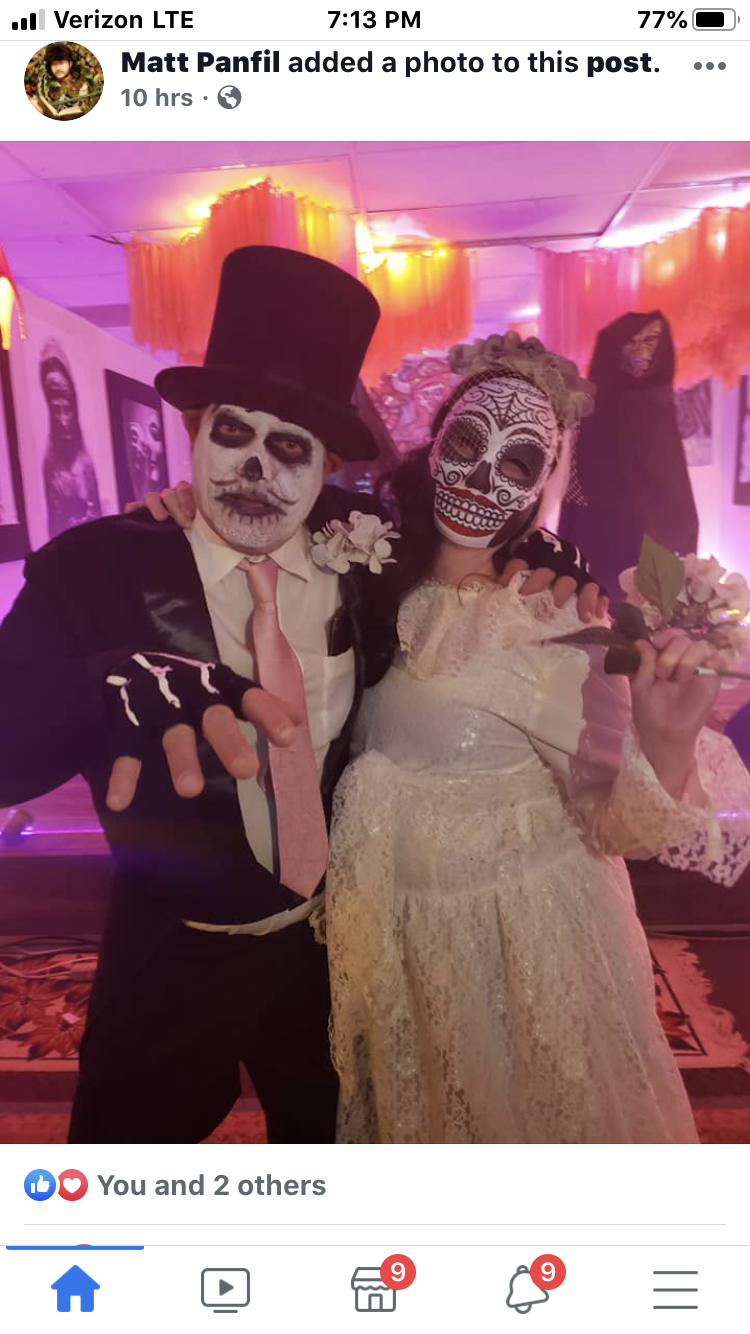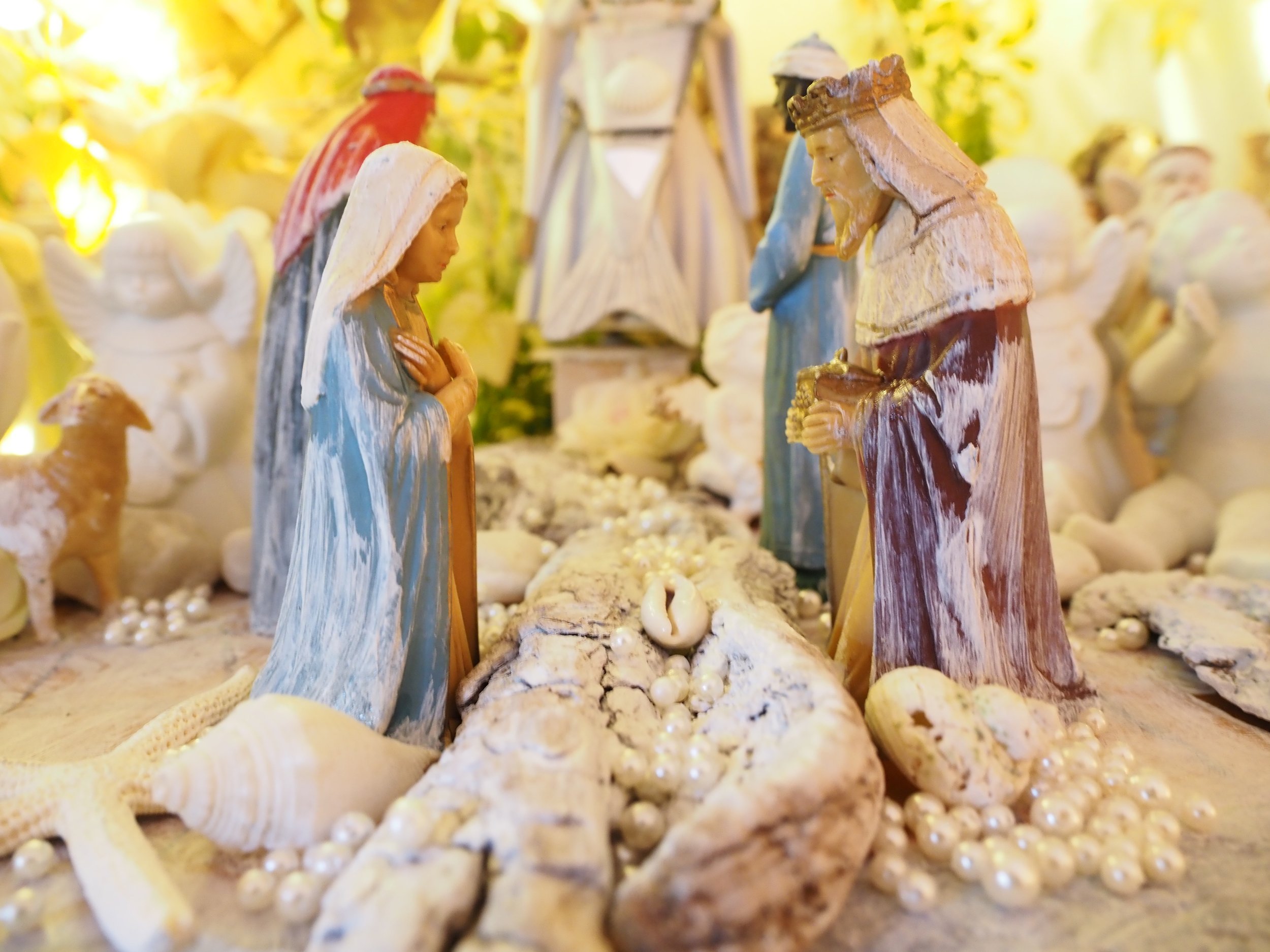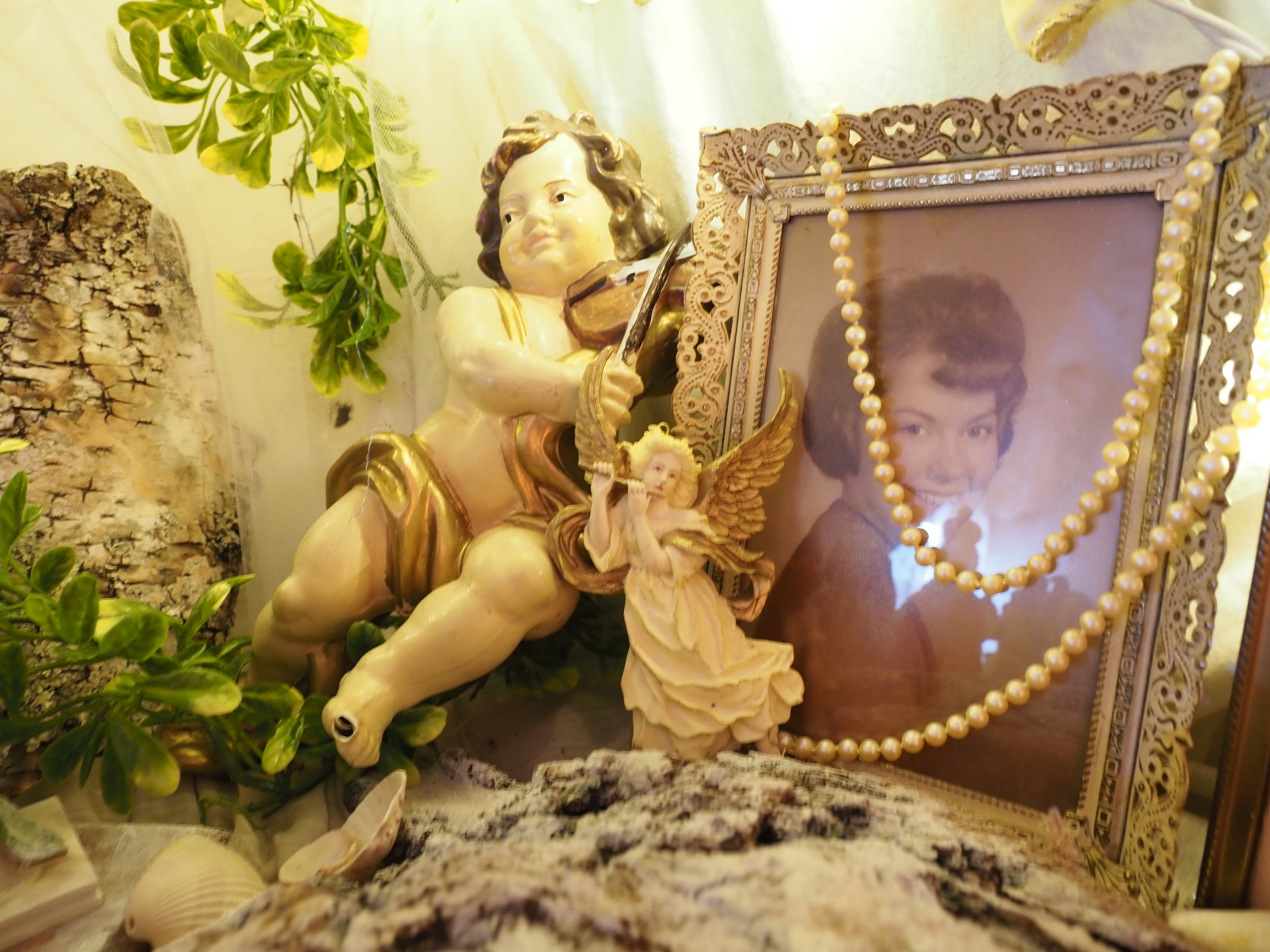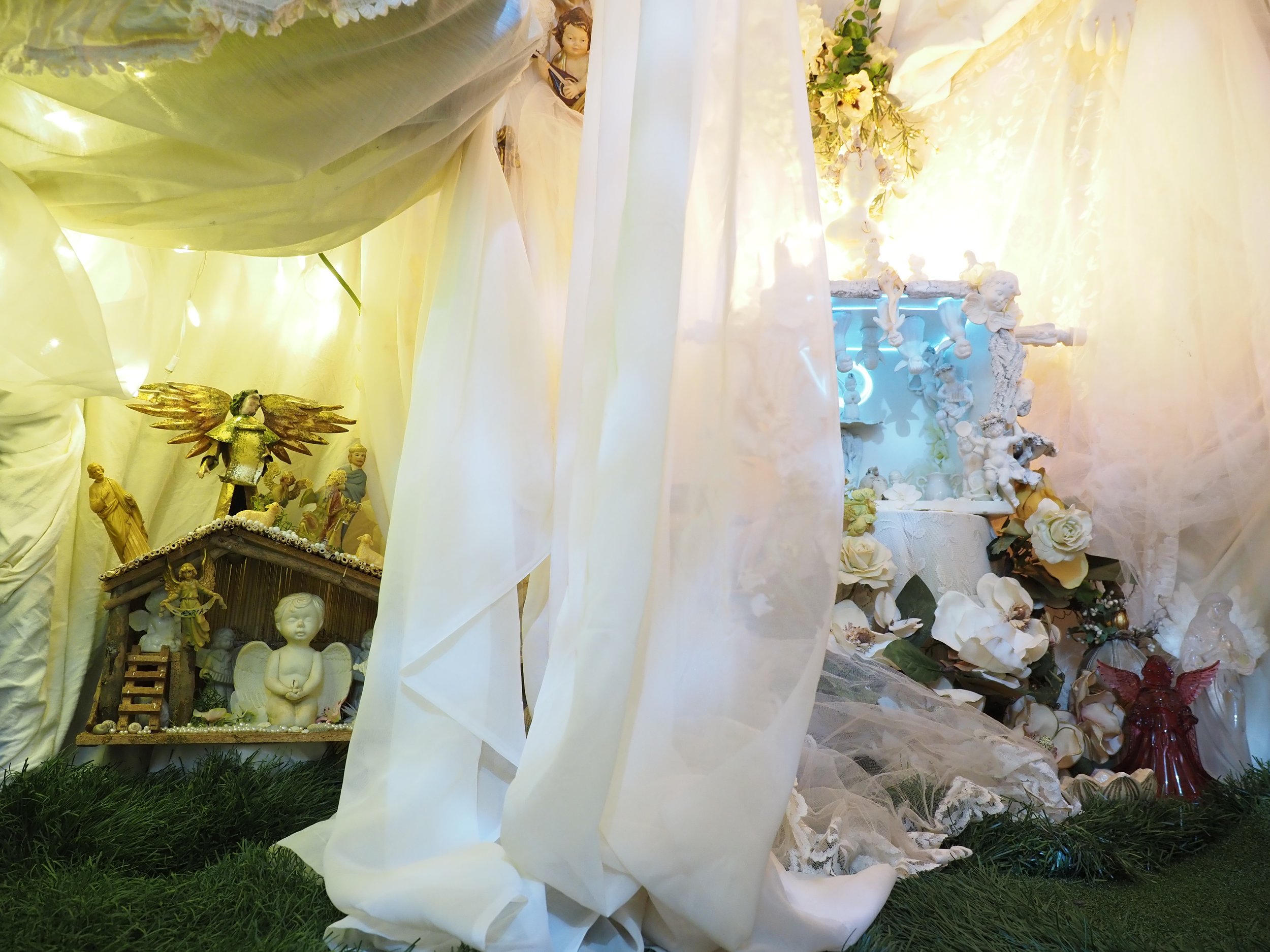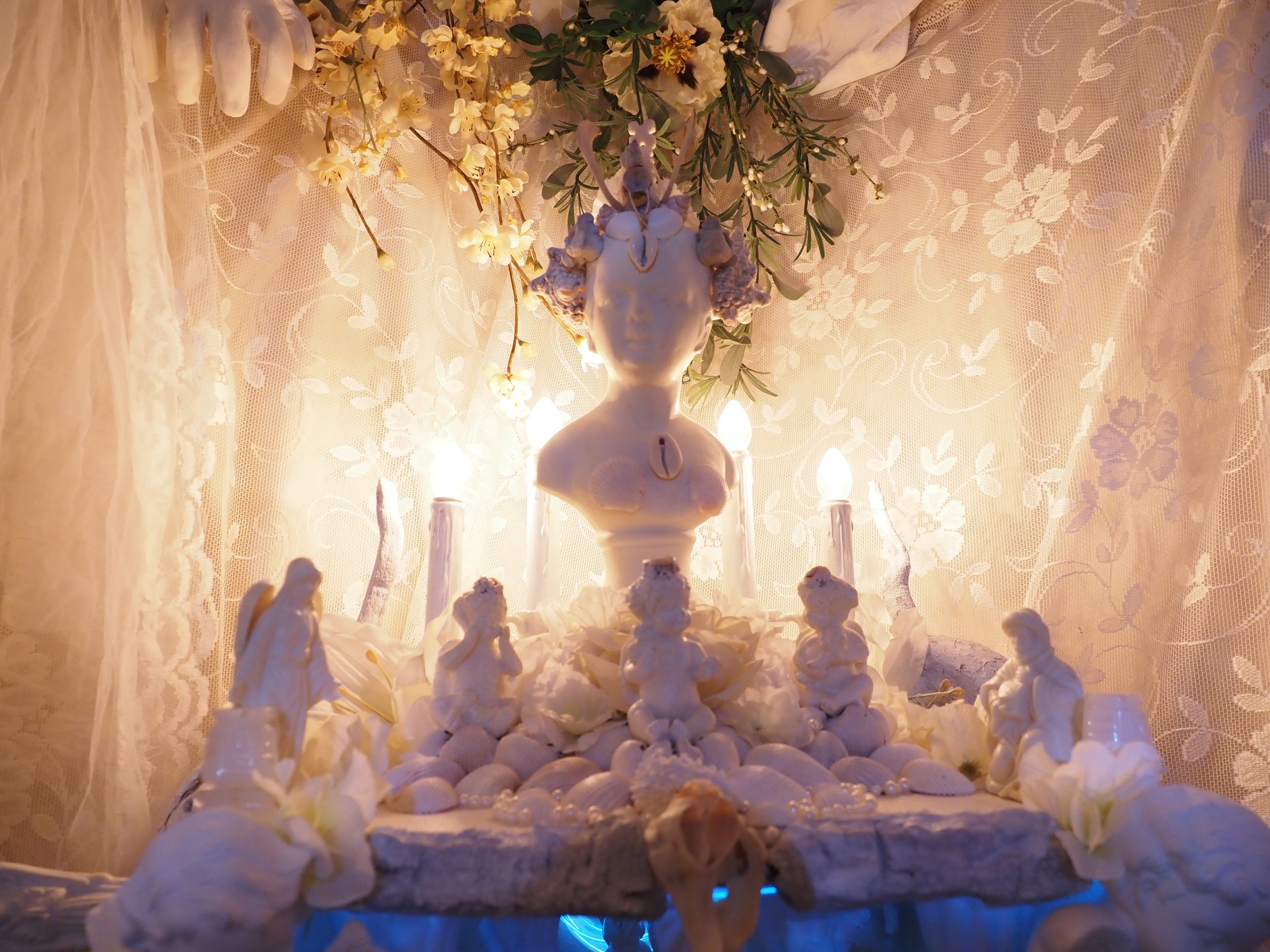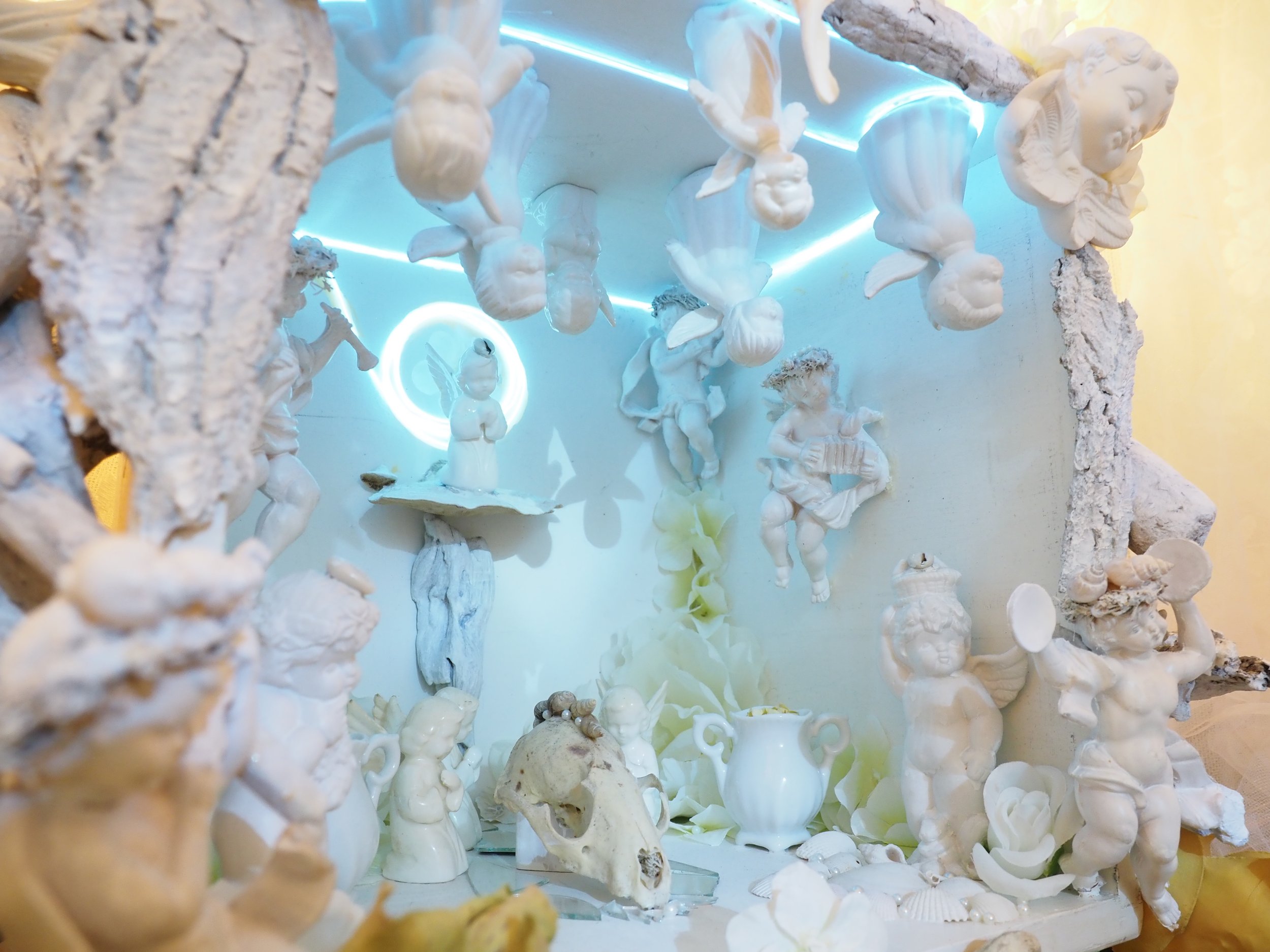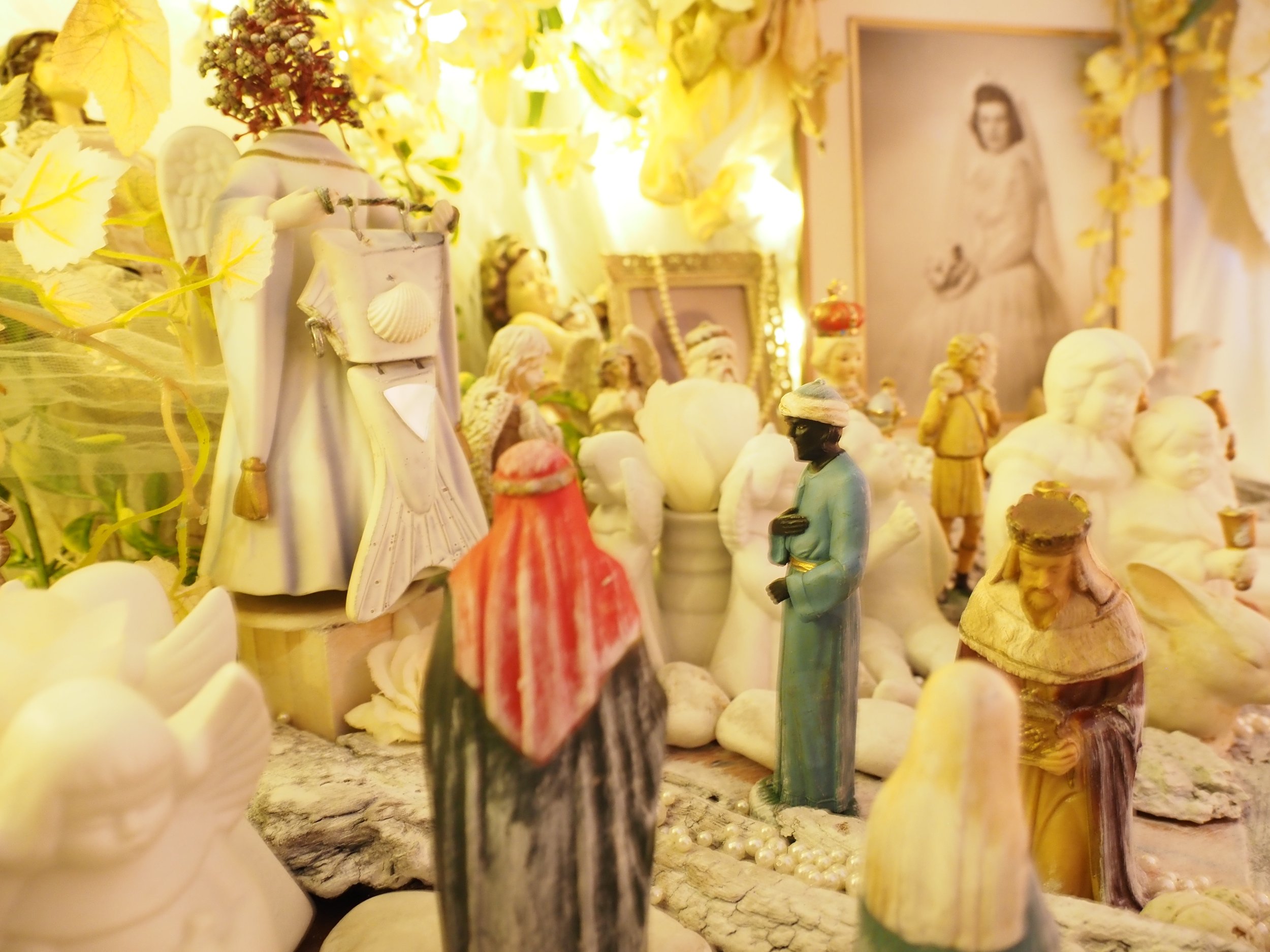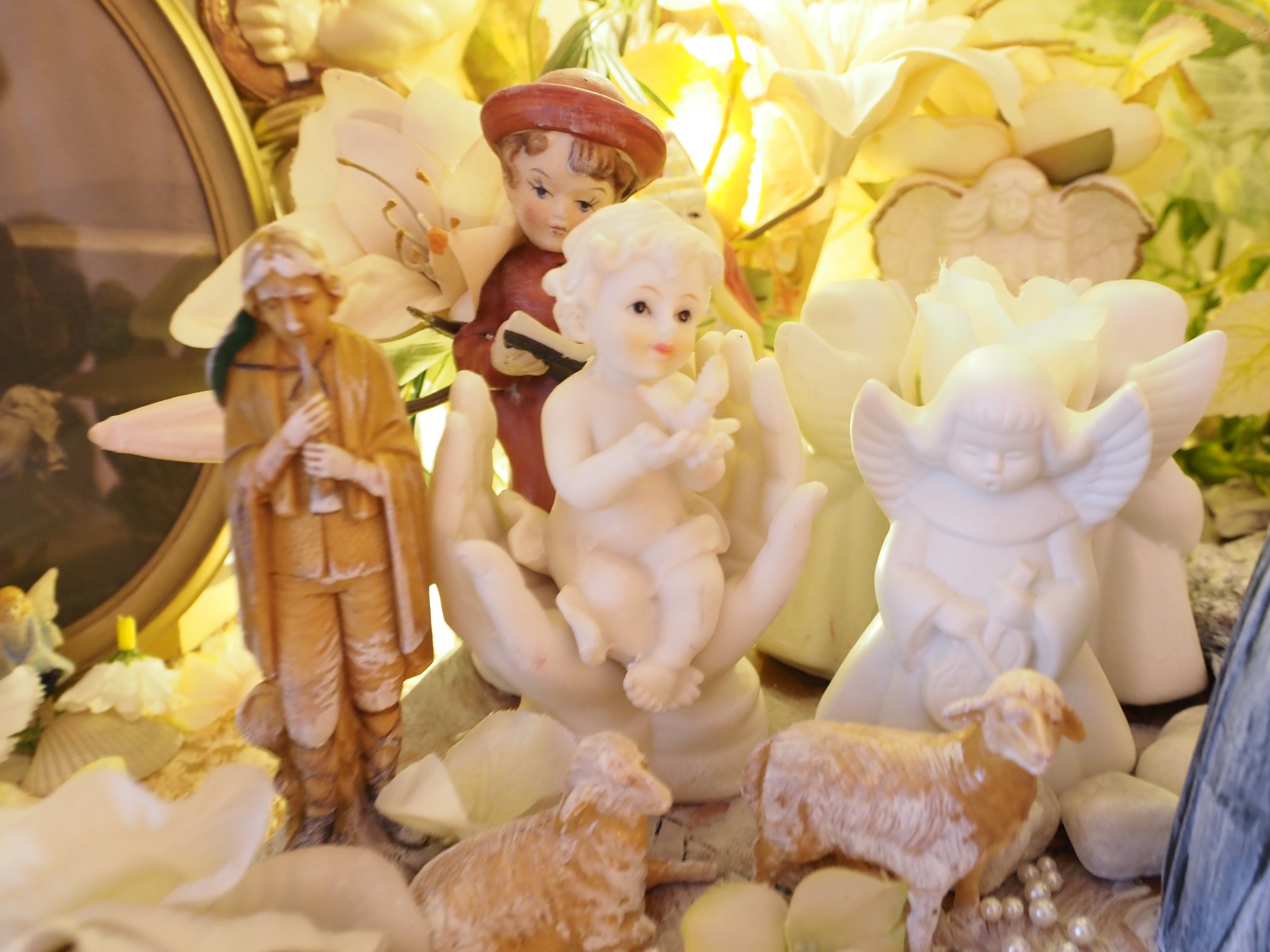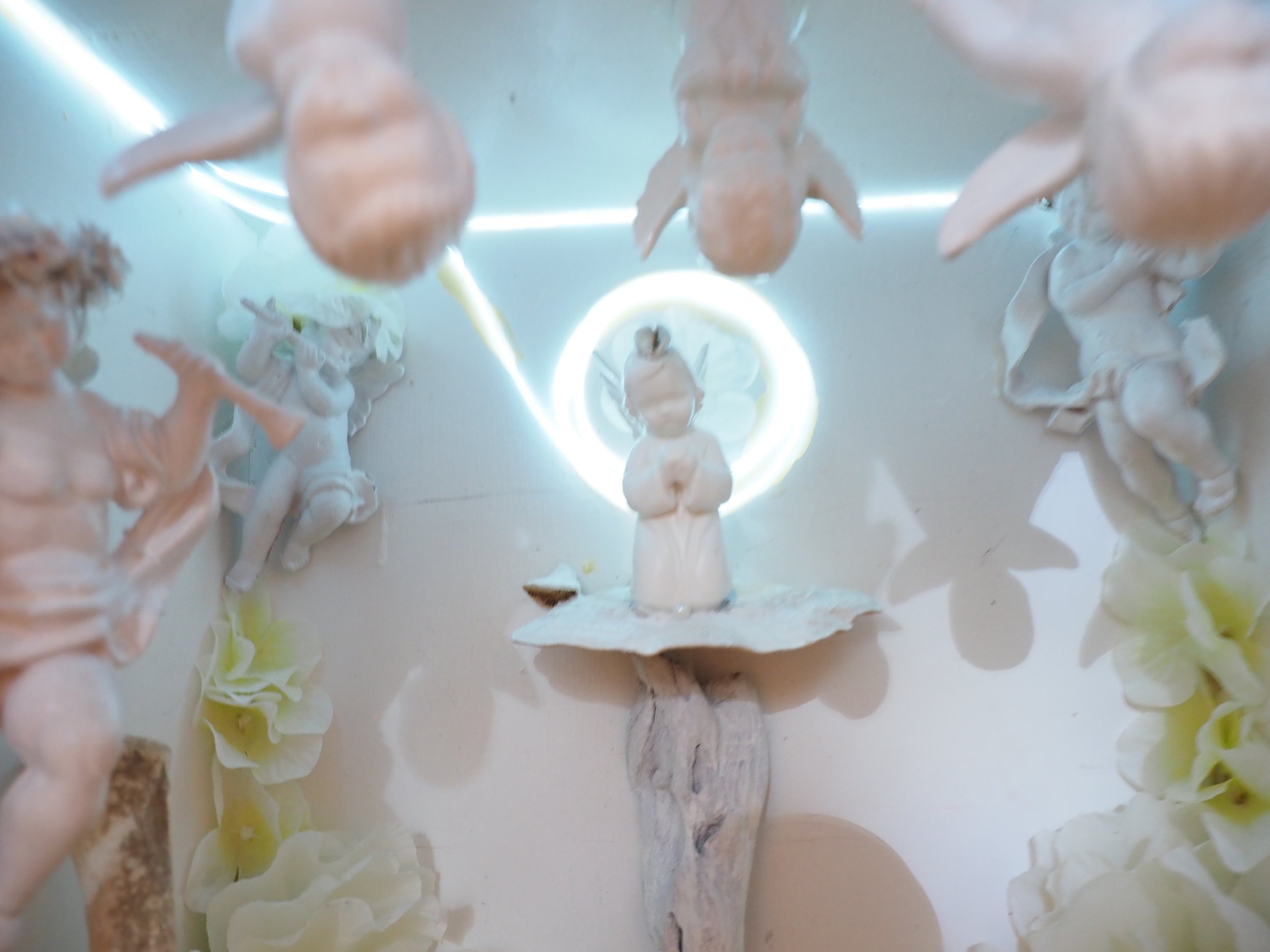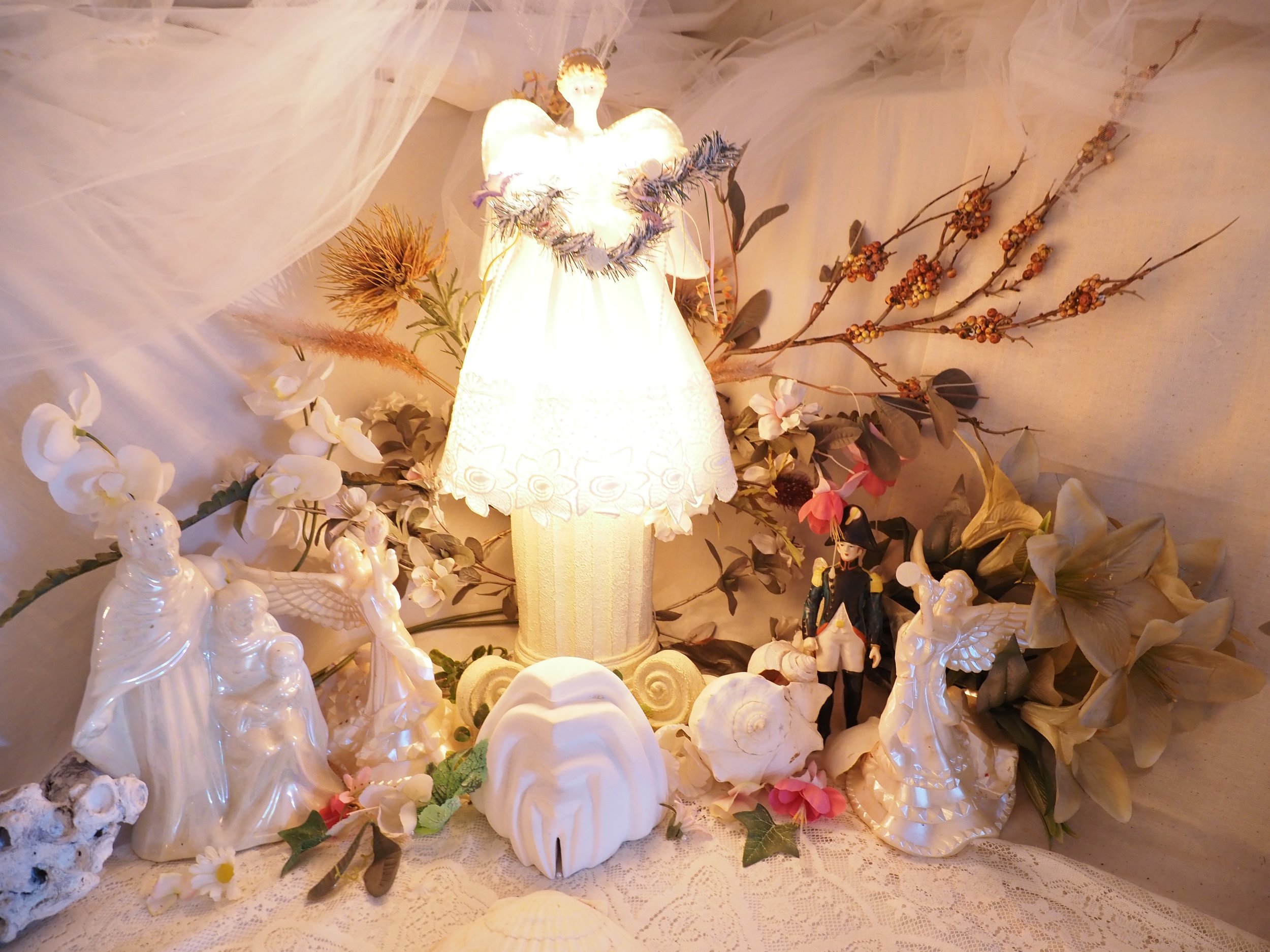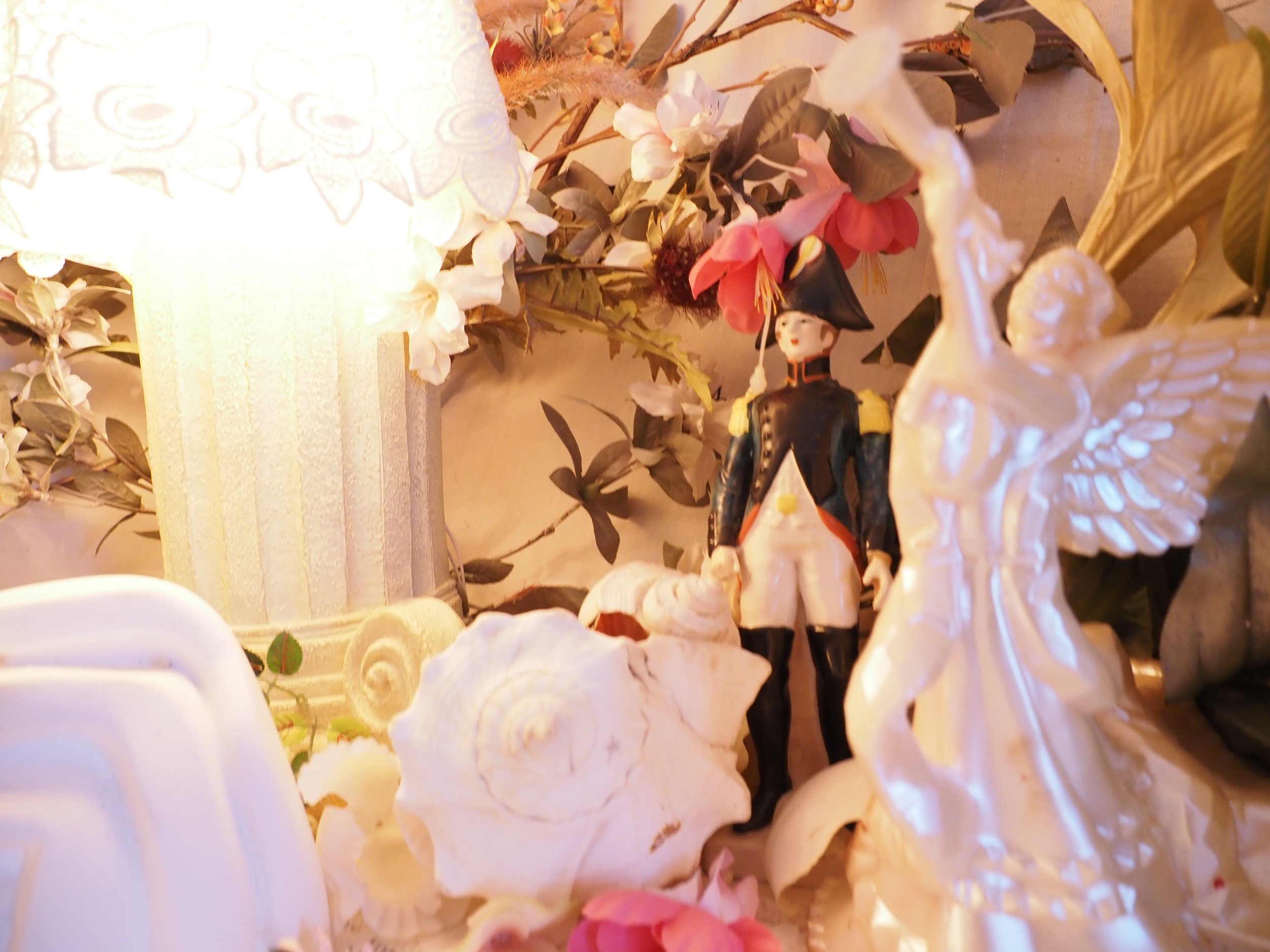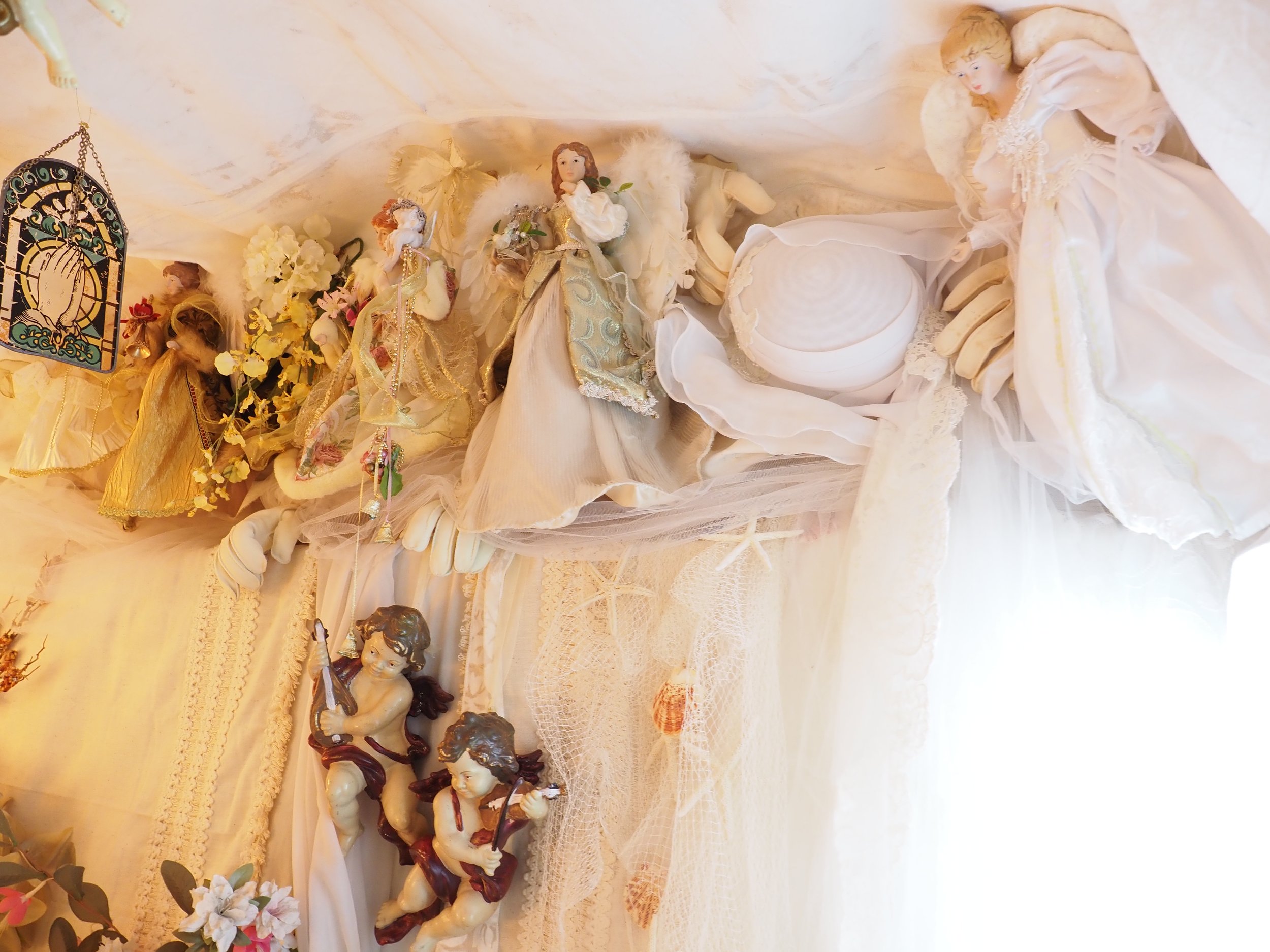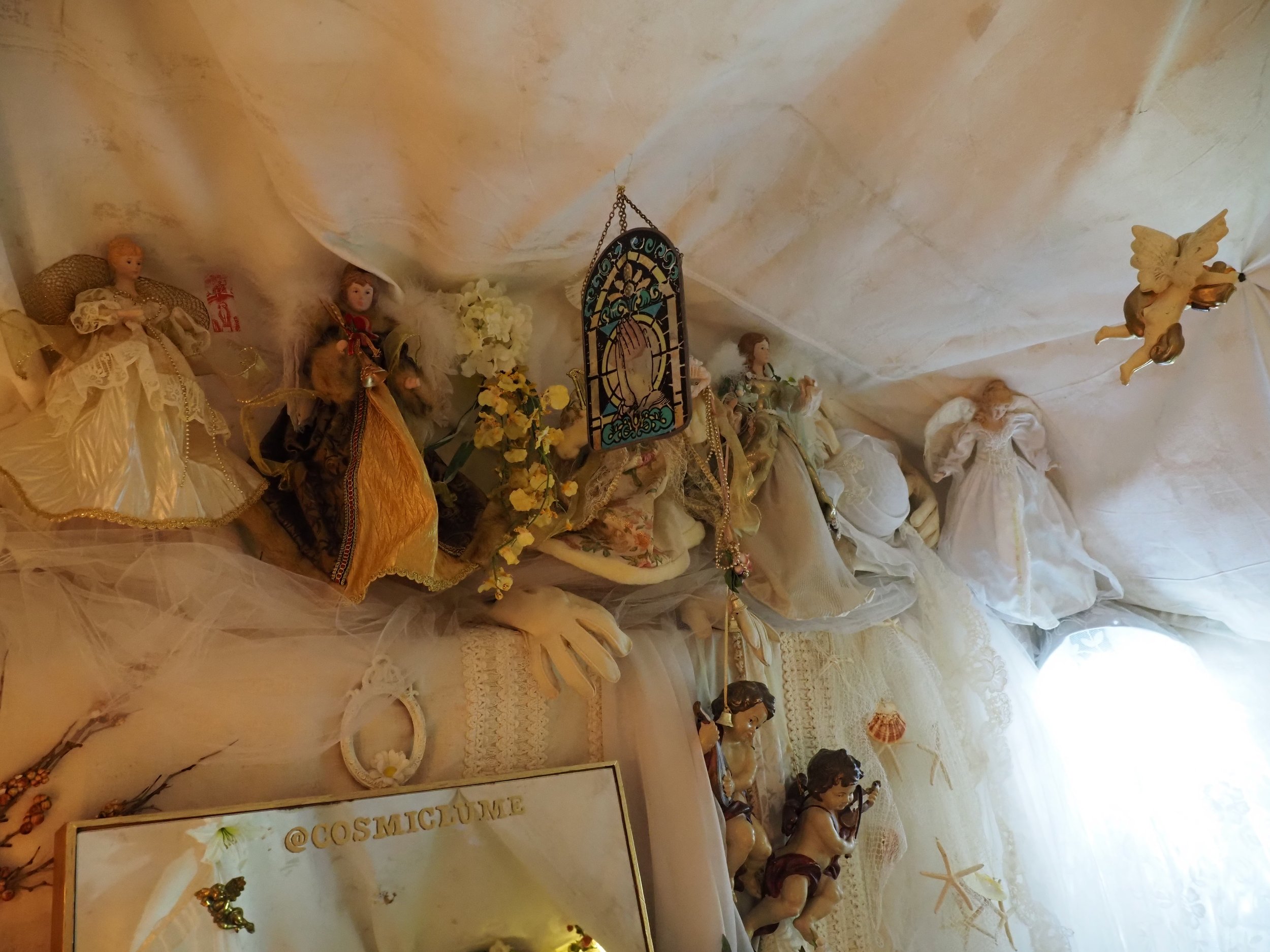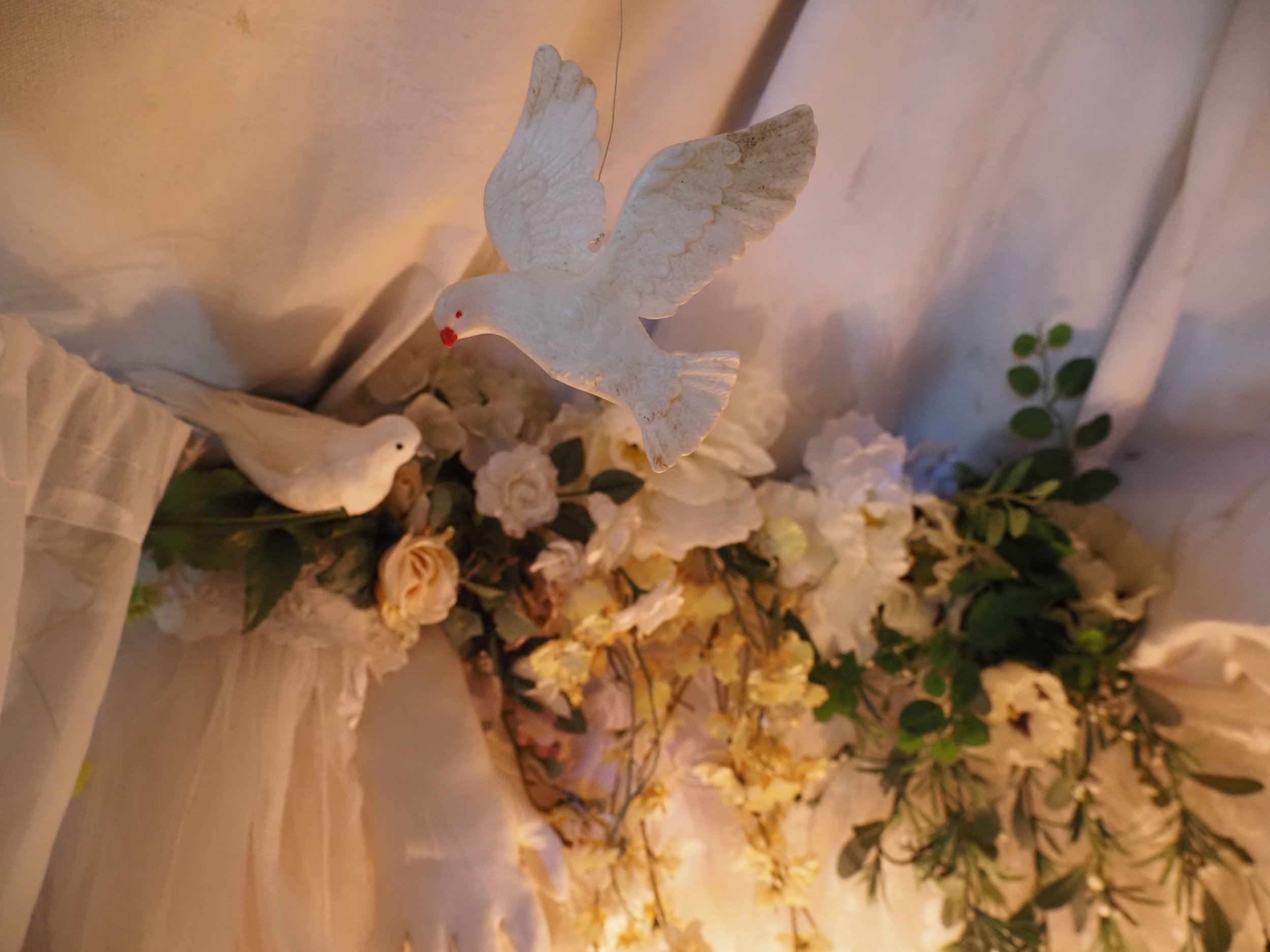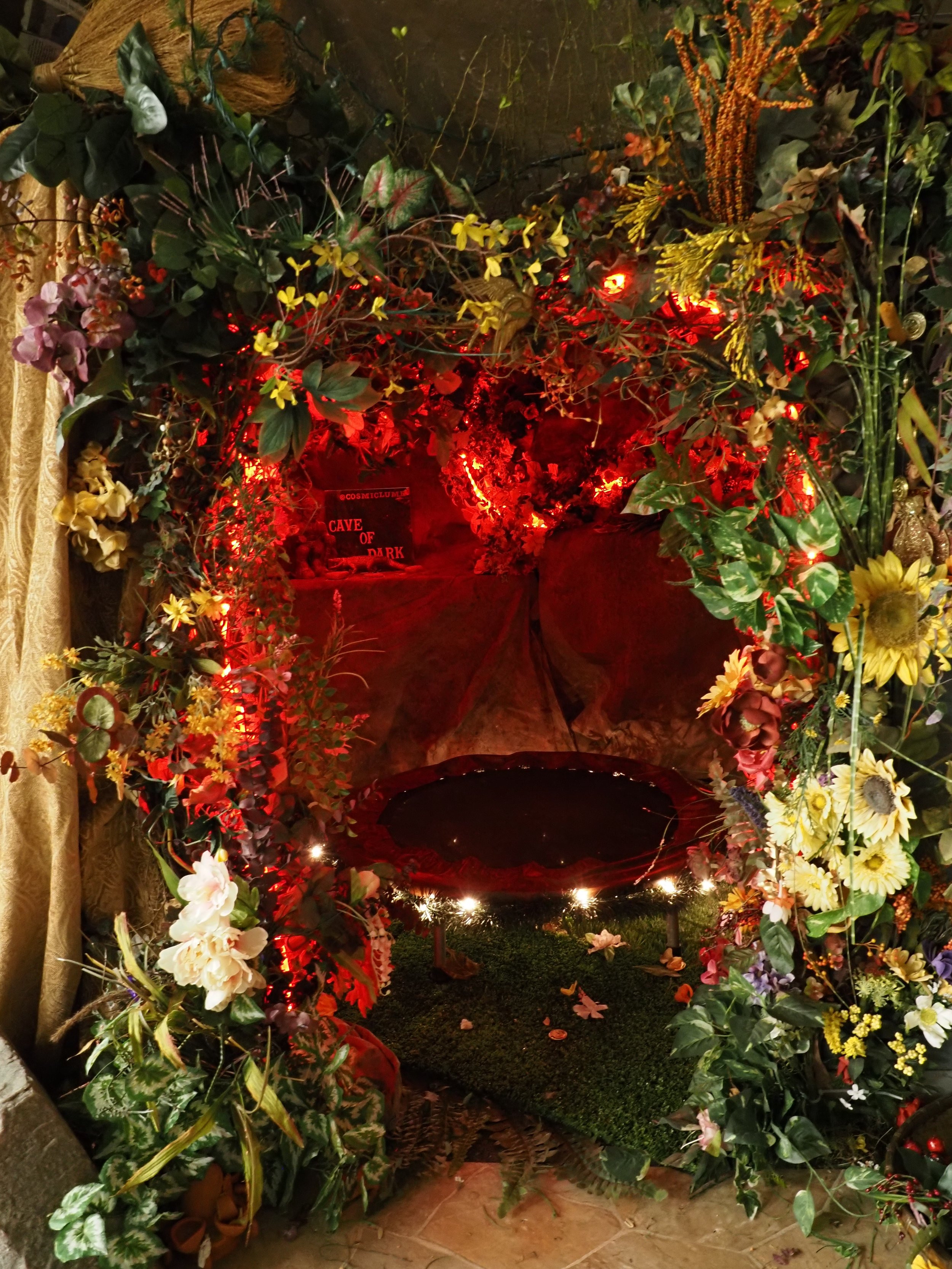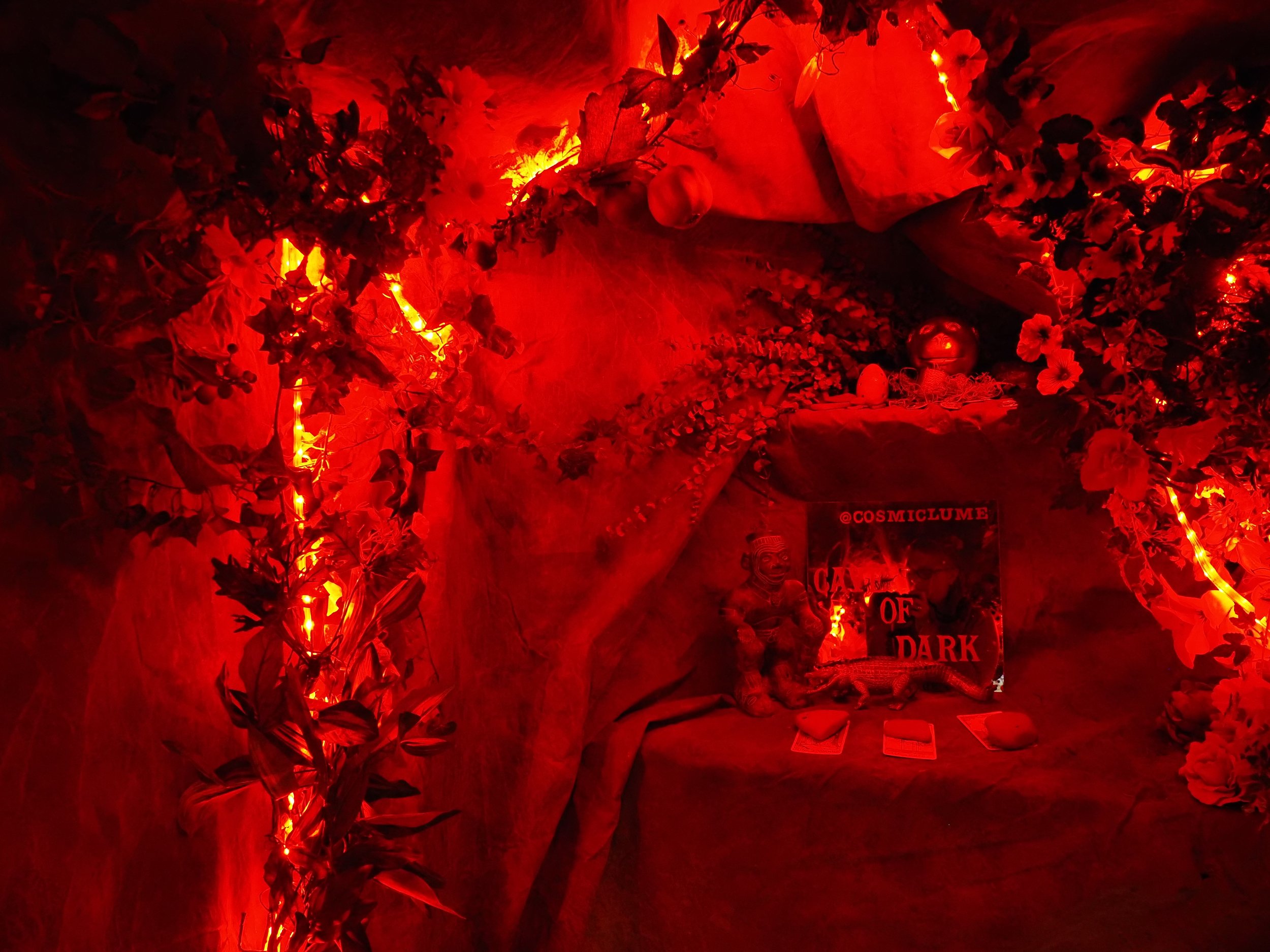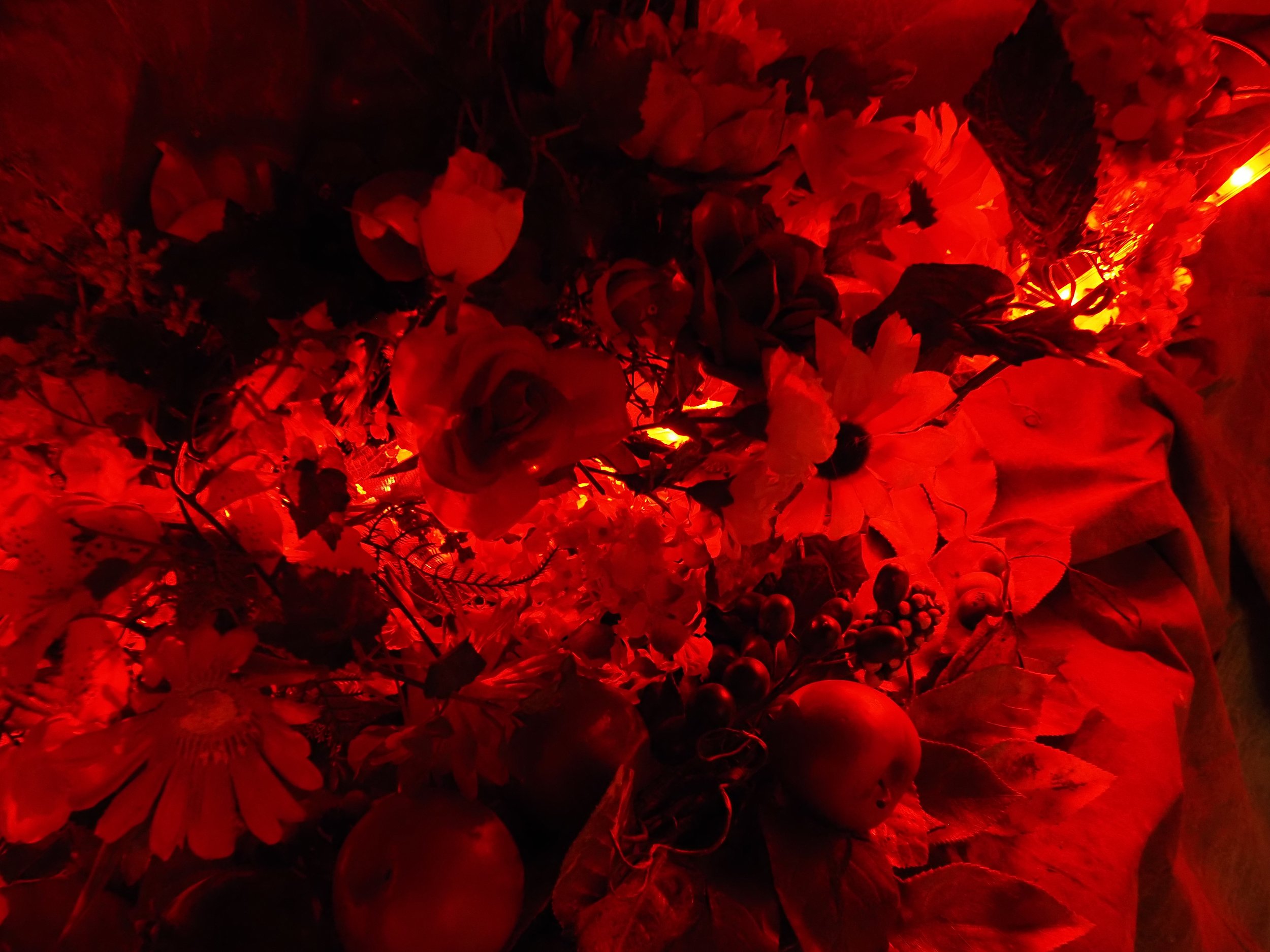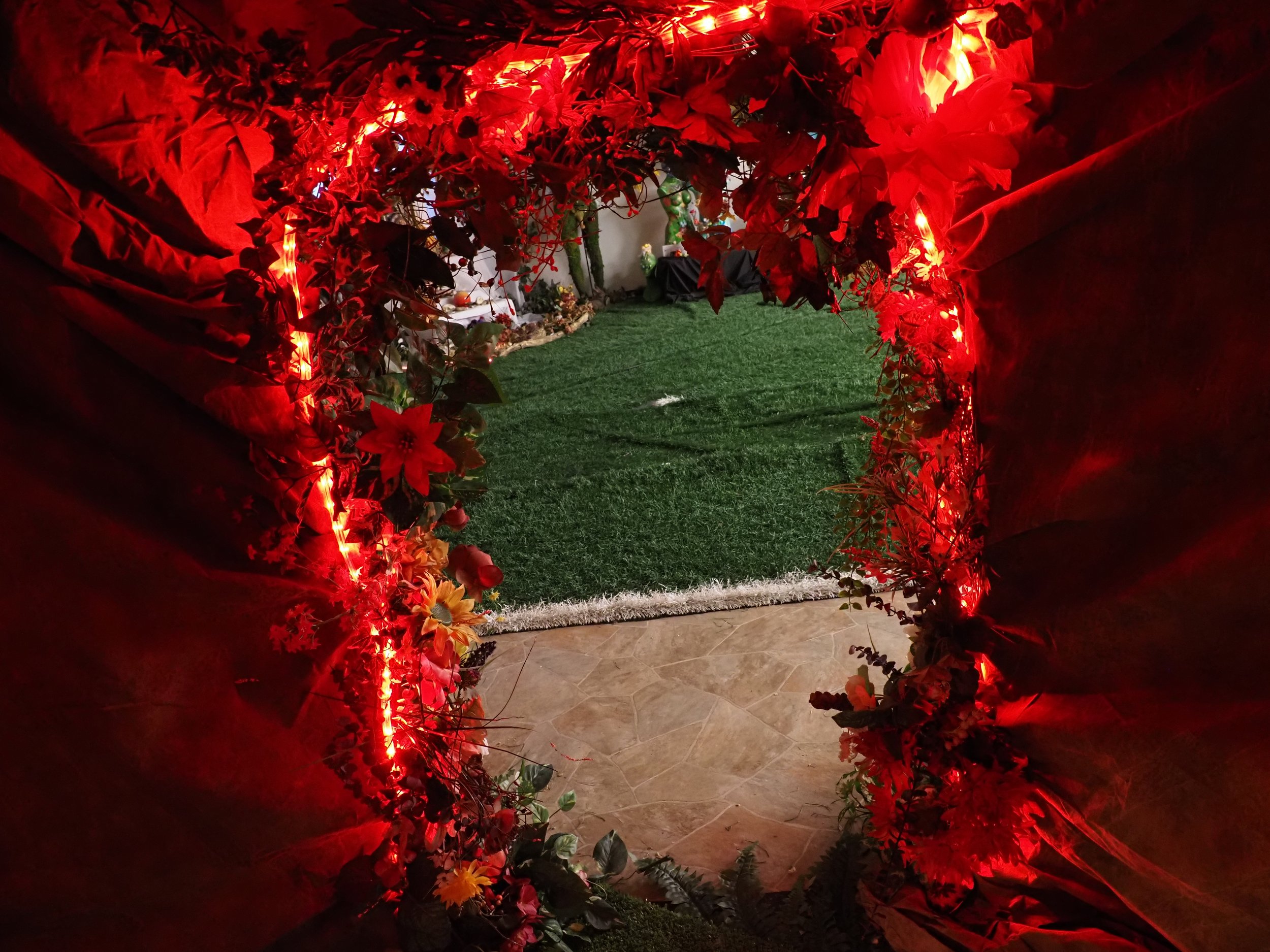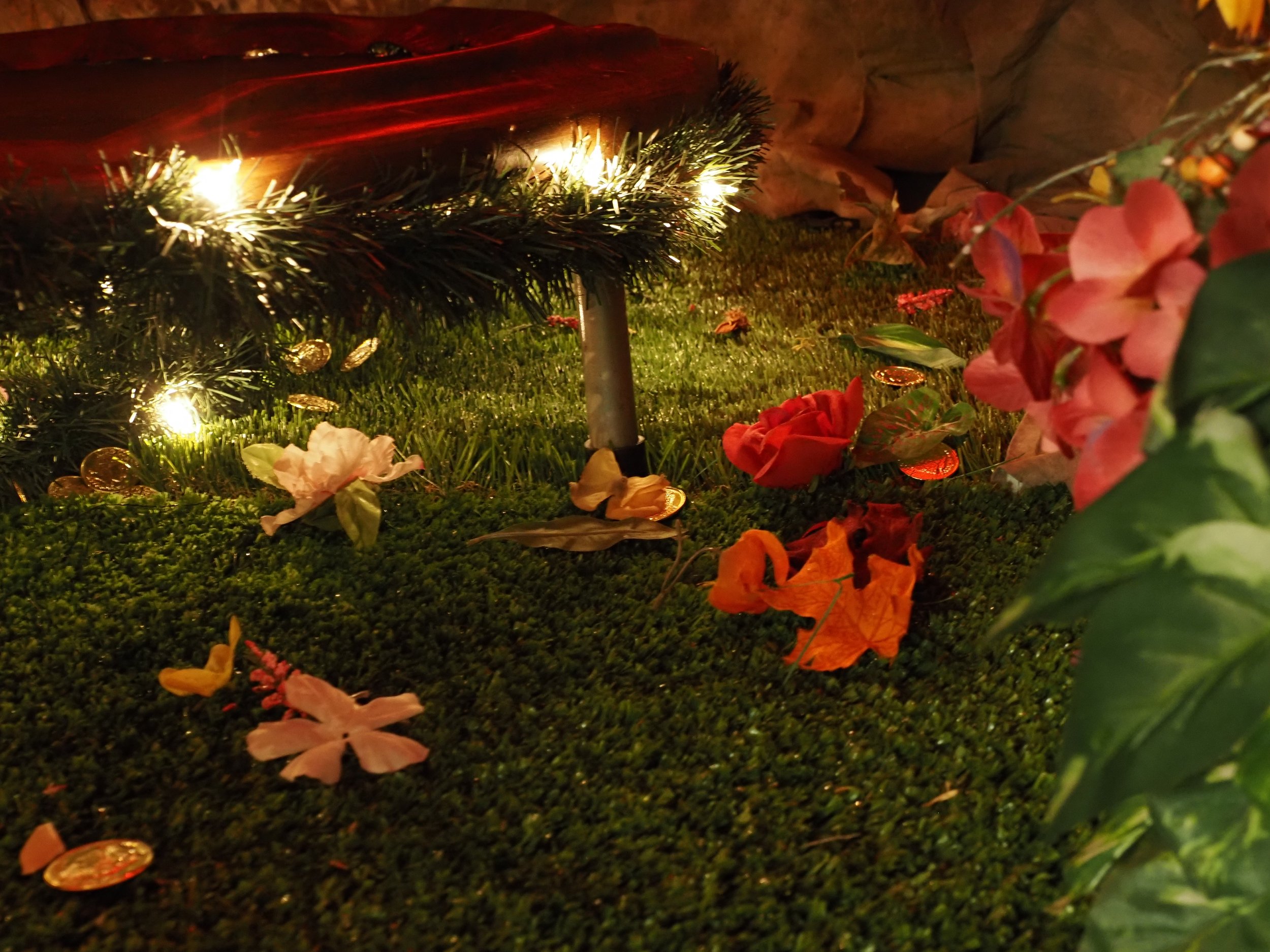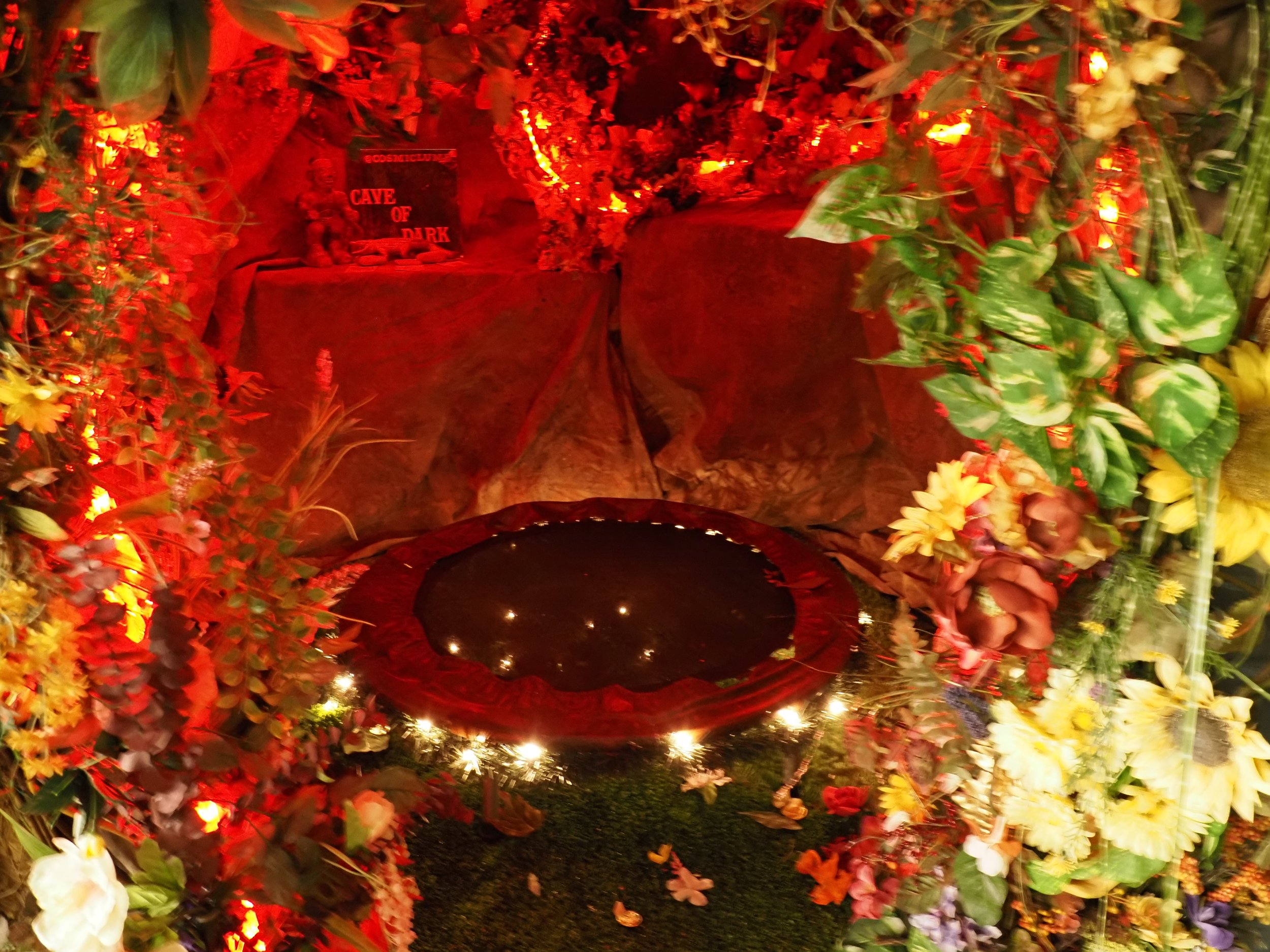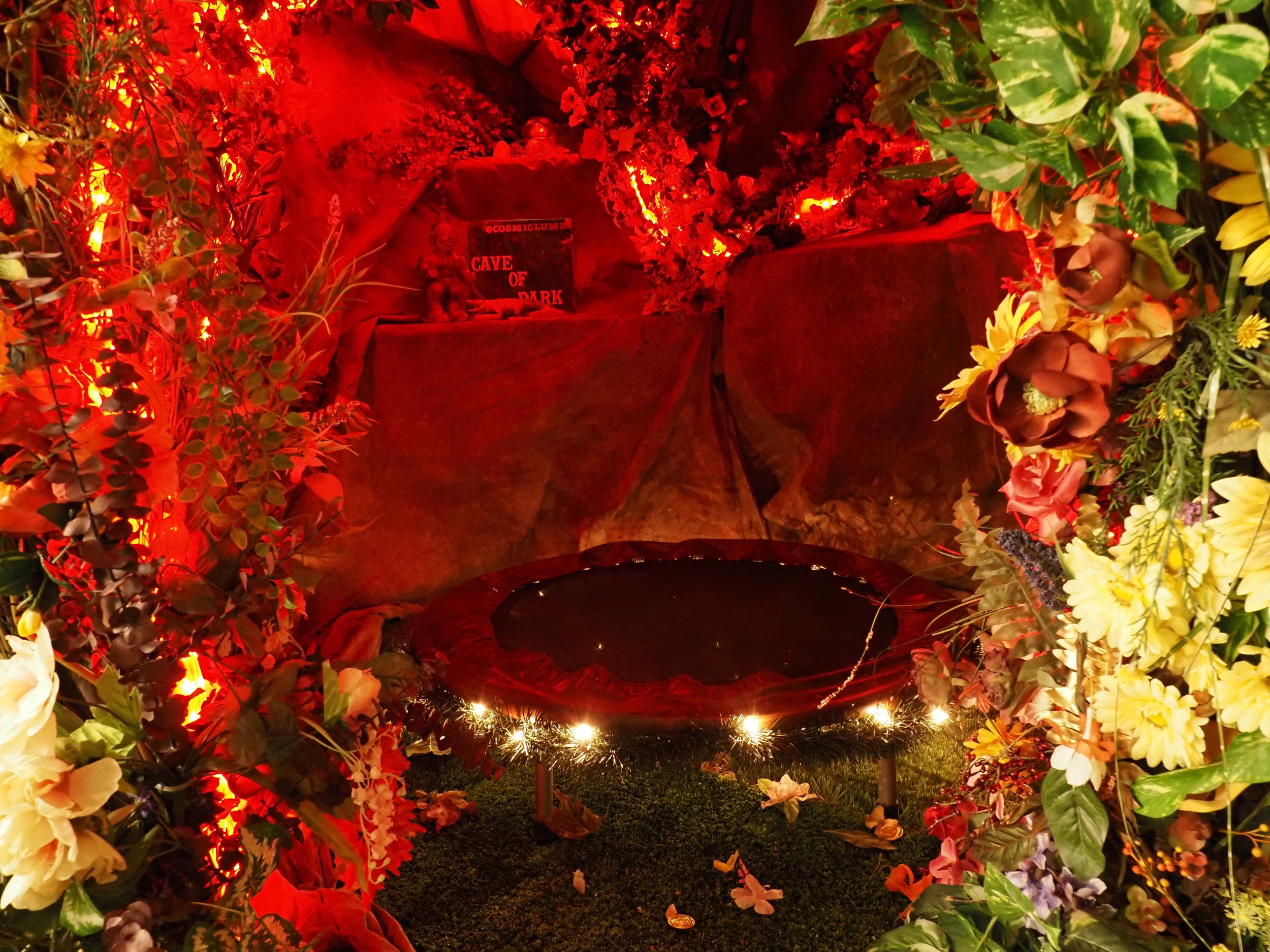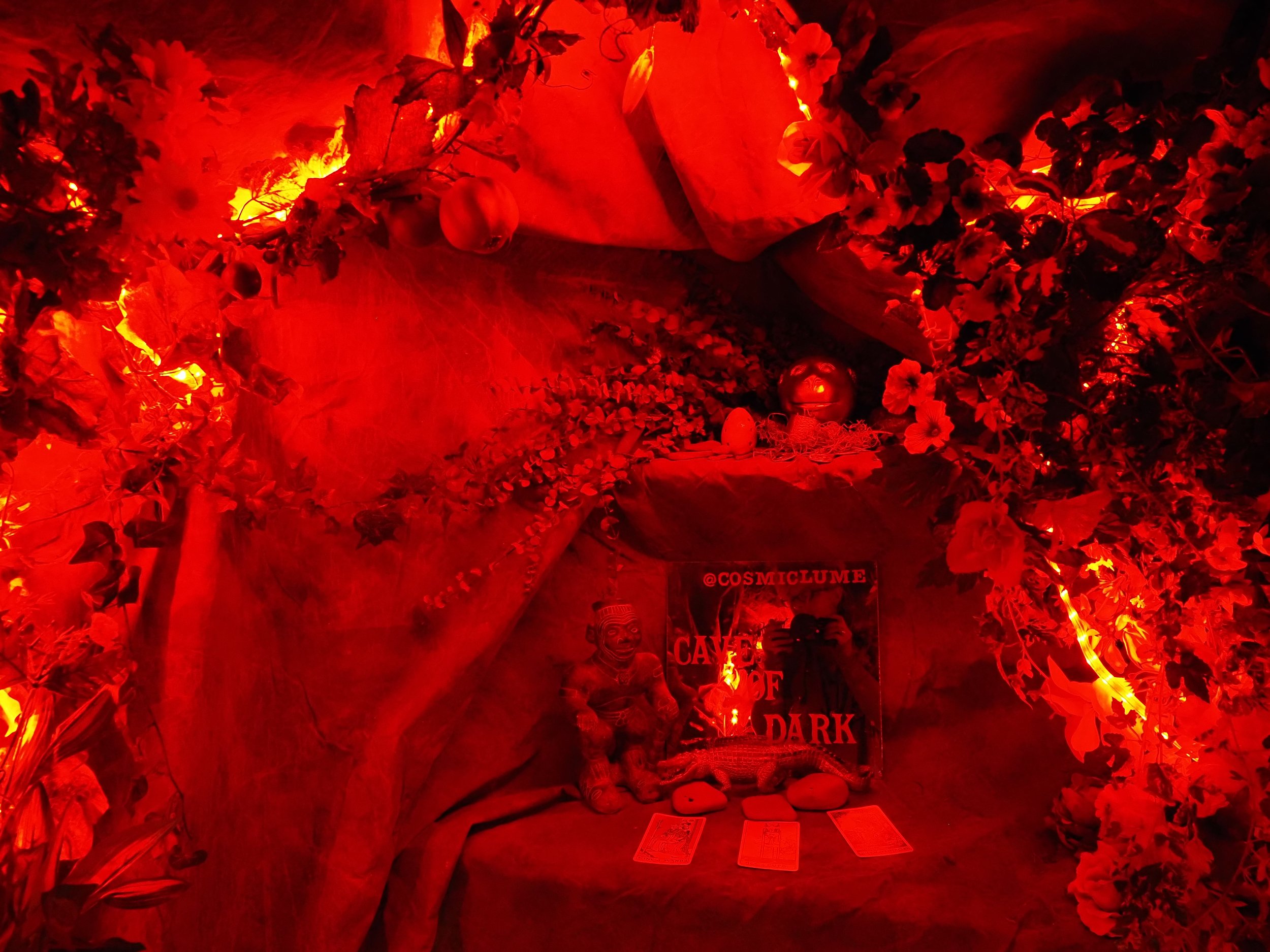The Venus Cult
Elizabeth J. Sciore-Jones is a Collaborative Ritualist, Immersive Installation Builder, Ceramic Artist, and Experimental Filmmaker
Visionary Installation
Creating for The Hive Temple Collective
Collaboration is an act of many artists and designers working together to create one collectively determined output. The act of leading a collaborative project is closer to guiding a migration of ideas than it is to directing a company of people. The bounty of knowledge and ways that a group can achieve their goal is strengthened by the diversity of experience brought to the table. Furthermore the flexibility and interplay of each individual's vision adds to the long term viability of the final product.
While planning, collecting and leading the weaving of the Bee Divine Hive Temple Walls, we had 10 volunteers join us at different points. I strived to make each stage connective to the individual who was weaving and to the greater narrative of the project. I created the process of how to build the weavings and relate them back to our support of the divine feminine. Both Elizabeth Huebner and I did the bulk of the aesthetic choices and weaving. This allowed us to direct a story within each wall, well allowing people to create their own patterns and approaches to weaving. Every single piece of fabric and clothing used in the walls were donated and upcycled. The story of dresses that dance across the panels reference feminine life; child, woman, elder. Each dress has a history, gifted by women at different stages of life. I collected hundreds of pounds of raw weaving materials from women-led upcycle fabric stores, as well as bulk resale bins, and dumpster diving. The act of reuse is important not just for the authenticity, but to make a statement about the art industry and wasteful corporate fashion. With this we pull on the cords of generational connection, and sustainability.
The highlighting of the family unit is consciously addressed in the use of collaboration as a project technique and relates to our theme as the Hive Collective. For our upcoming generations to be sustainable, we need to rely on and teach the interconnectivity of all life.
illume-shrine created for Beyond.Art
Mid-winter 2020 shutdown, a colorful cosmic mandala blossomed in the heart of Downtown Ithaca for the holiday season. For my whole life I have visited, the pedestrian-only, downtown called “The Commons.” It is a hub of local culture, full of small festivals, businesses, art and meeting places. During the pandemic everyone has needed to keep distance and cancel events.
This leaves an understandable void of creative interactivity. How do we as installation artists and placemakers create space while everyone maintains a safe distance?
This 21 ft wide open air installation reaches vibrantly outward, allowing familial pods to celebrate, and interact safely. It ran in a loop from sunset to 3 am, using the shutdown as a chance to highlight a potency that had been put aside.
Technical installation by Beyond.Art Collective, Ithaca, NY.
Cosmic Womb a Traveling Modular Installation
The Cosmic Womb is the universal unknown where we all begin and end. In worshiping her you worship both the universal concept and the literal passage of life that we are all irrevocably part of.
My immersive altars are built from trash, leftover art materials, secondhand items and often coated in gold paint. I collect vintage items, dumpster dive, and find natural objects to make the composite sculptures. Fake and real flowers profusely adorn the altars along with vintage cauldrons, rocks and bones. Bundles of thread hang along with mirrors, gauze curtains and copious amounts of lace. Each installation is location based, deferring in reaction to the needs of the event. Most shrines have original video projections, flashing with color and light. The spaces resonate with a thrumming heartbeat, womb sounds, nature and NASA space recordings. Participants are encouraged to enter and sit on plush pillows, chairs and carpets. At times there is an offering of instruments to play, resin or incense to burn, letters to write and honey candy to taste. People talk softly, nap, meditate and pray. Over years the Cosmic Womb has evolved, has an experimental film, and has been witnessed by thousands of people across the United States.
Cave of Light and Dark Created for Healer Immersive Art Space
The Cave of Light and Dark was built in 2017 at Healer Art space. Healer is a creative immersive space built on top of an old office building. In the ruins of modern society the maximalist artist has the most options. Each cubicle holds a different interactive install and the main floor is adored with an huge altar co built by Matt Panfil and myself. Off this main stage space sits only two cubicles, the Cave of light, and the Cave of dark.
The Cave of Light is filled with hundreds of angels, translucent curtains, white lace doilies, bridal veils, soft lights, and different grottoes. Each grotto is filled with icons, shells, pearls, vintage photos of women and yet more angels. To enter you must crawl in through a small white gate on your hands and knees. As you move through the lacy curtains you are greeted by the scent of lavender and foam padded floors covered in astroturf. There are pillows, altars and strange poetry books. It calls on you to relax into the grandmotherly essence and enjoy a space so different from the surrounding space.
The Cave of Dark is a return to the strange unknown, with subdued colorful lights, dark rock like walls and woven flowers throughout the space. As you duck to enter through a clinging, abundant flower archway. The installation has many small grottoes featuring tchotchkes ranging from vintage ceramics to plastic toys, old smoking pipes to tourist souvenirs and Tarot cards. Each one is placed with either reverence or playfulness. The main floor is dominated by an inviting single person trampoline with rocks from lake Michigan surrounding it.
Sono Ignis/ Fibra Huid an MFA Thesis
Elizabeth Sciore-Jones MFA Thesis installations at Indiana University, 2017. venuscult.art @cosmiclume
MFA Thesis, 2016
Sono Ignis translates as sound fire; toning bells, flames twist through an inky black gallery. This installation connects our physiological awareness to humanity's collective primal origins utilizing video and sound to create a sensory experience. This engagement reconnects the viewer's awareness to their physical body and emotions. Fire is recognized as an essential element to the development of civilization and culture. Despite humanity's long acquaintance with this element, fire maintains its enigmatic power. The cyclical layering of images and the sound of tuning forks create a space in which the bridge between experience and sensation can be explored.
Fibra Huid refers to fiber hide, speaking to filaments, internal organs and mammal skin. Pre-christian neolithic cultures created objects and symbols that communicated their concept that humans are part of a greater regenerative life cycle. Birth, Life, and Death are aspects of existence, and we are still not separate from this today. These hanging Abaca fiber mobiles have embedded cotton thread bundles and vines found in local forests. The resilient paper pulp embedding organic forms relates us back to our own bodies, flesh and bone. Some revel in the hair like fibers and the aesthetic of the translucent paper, while others find their own skin ‘crawling’ and are encouraged to engage with that sensation.
